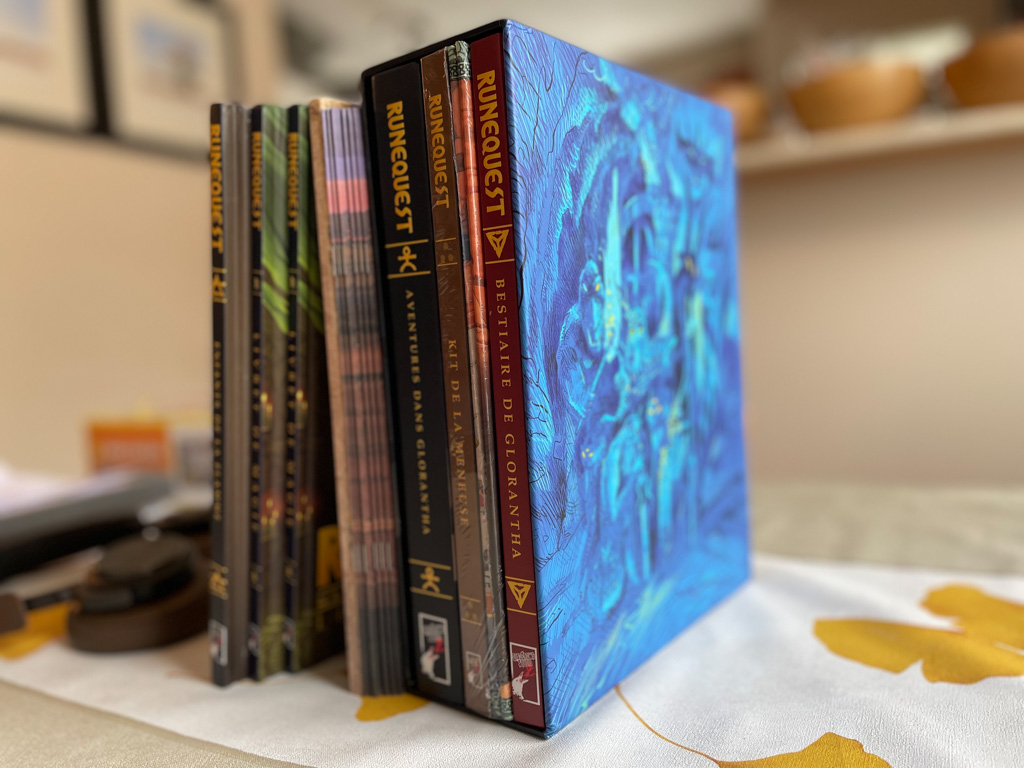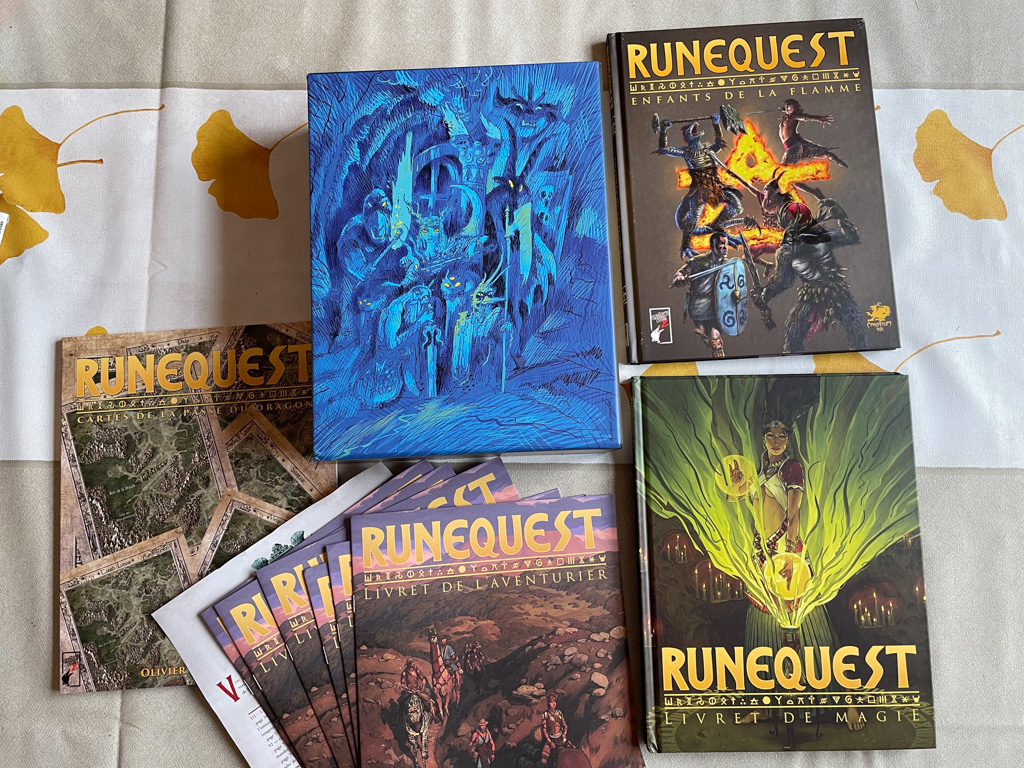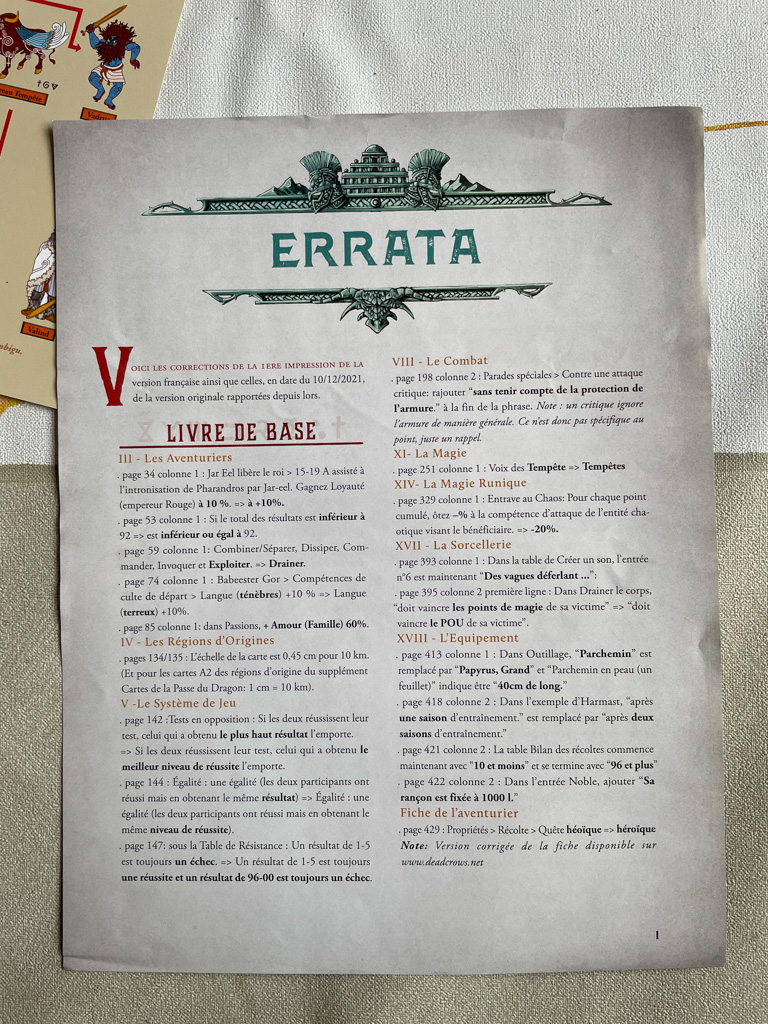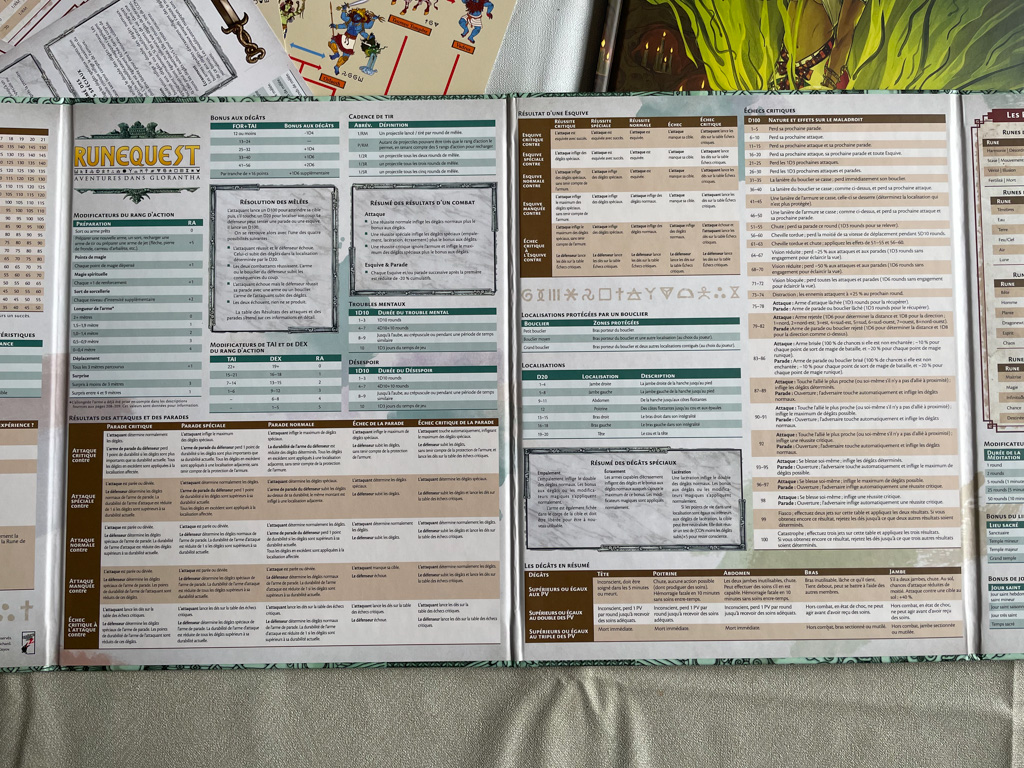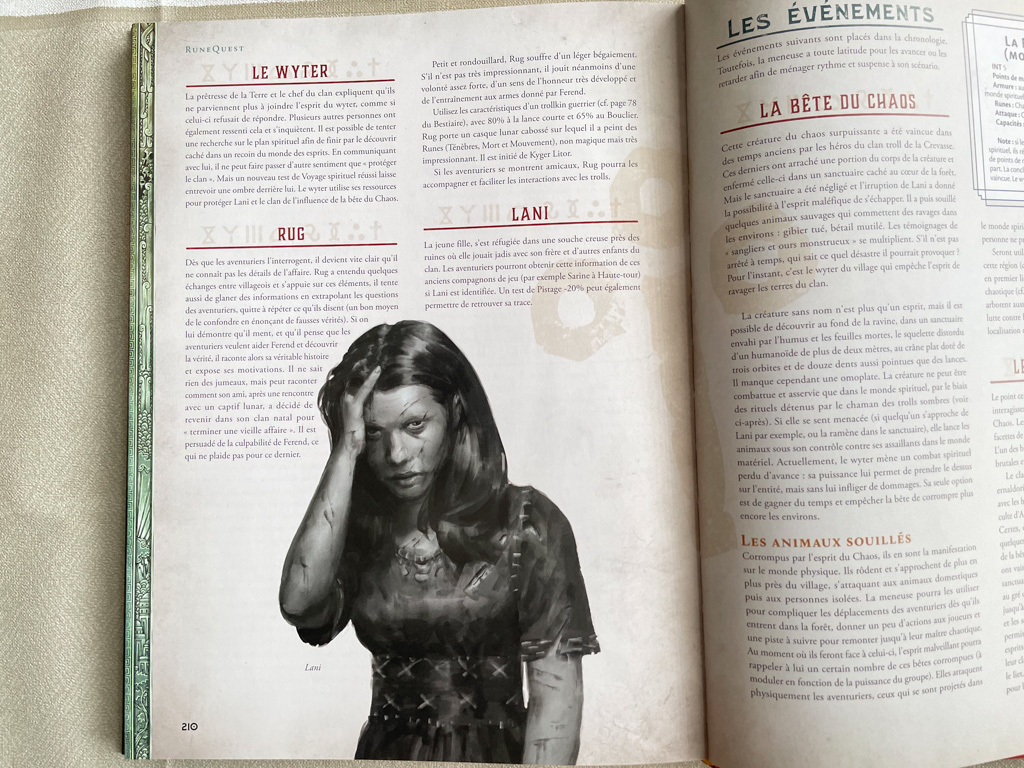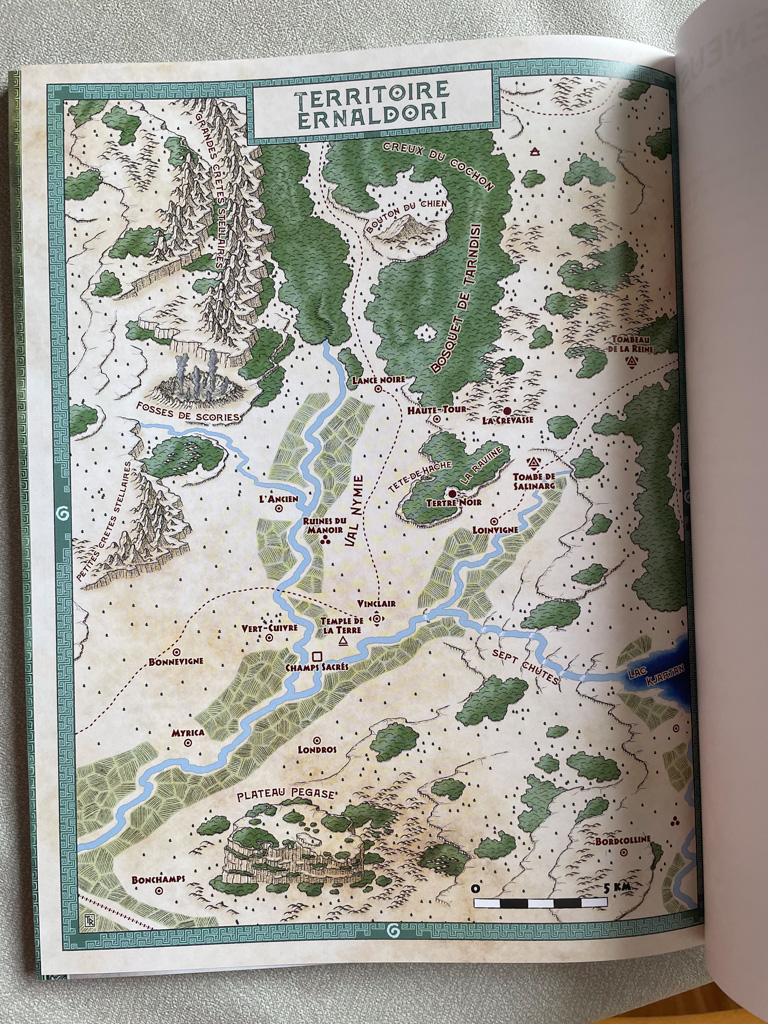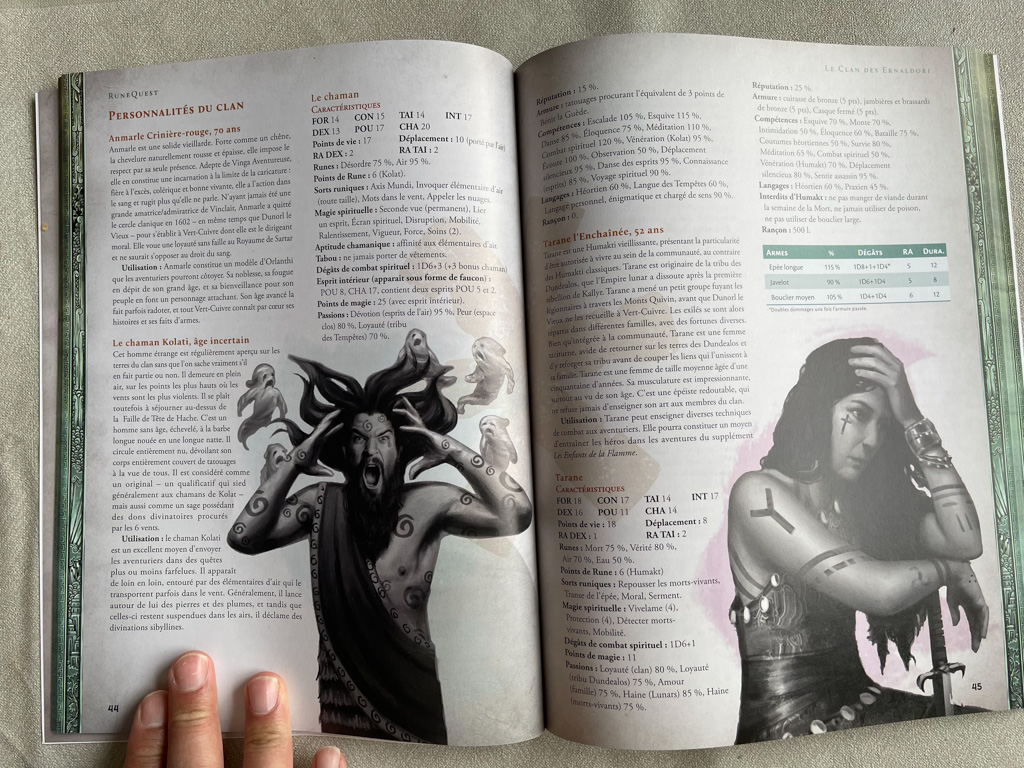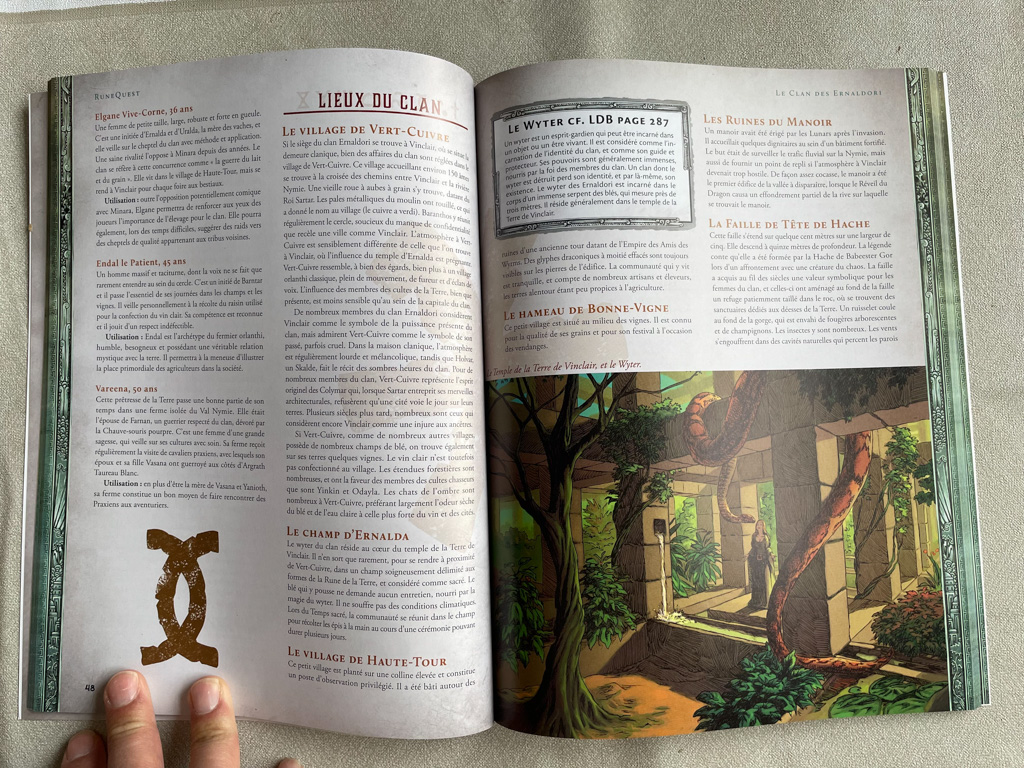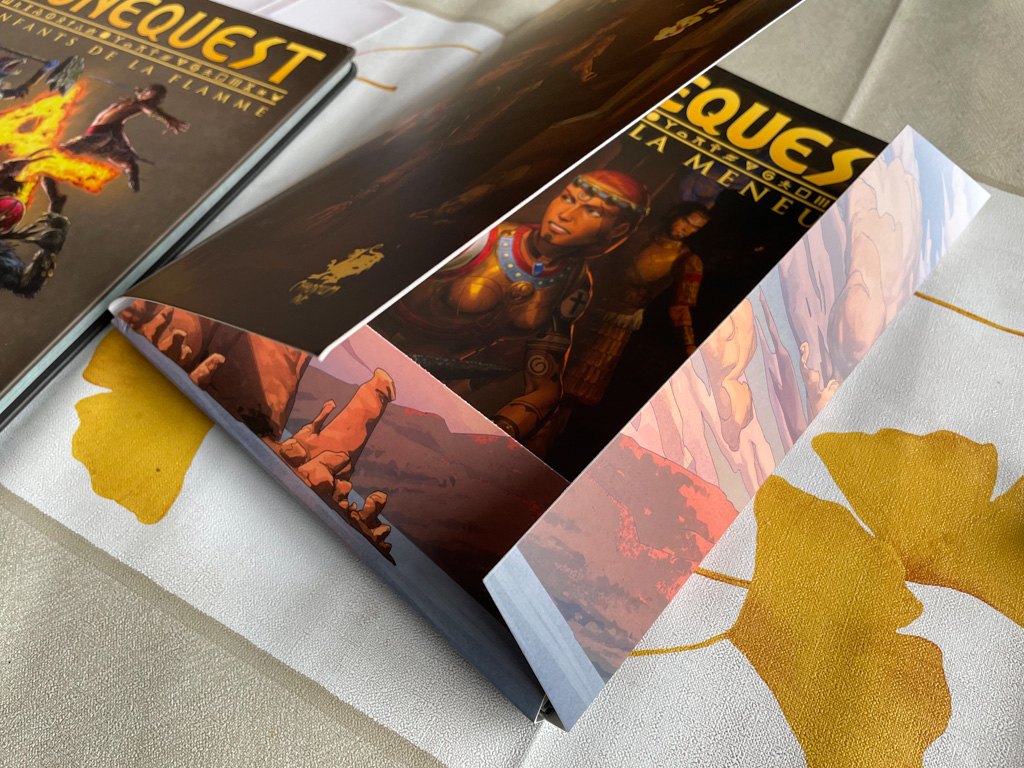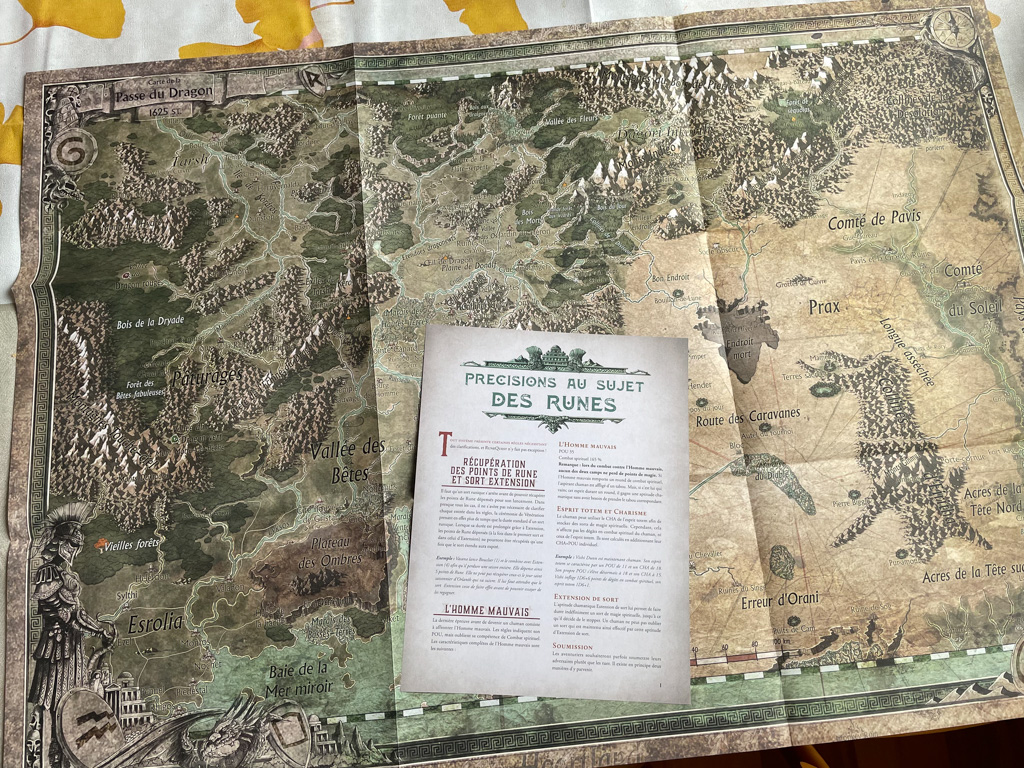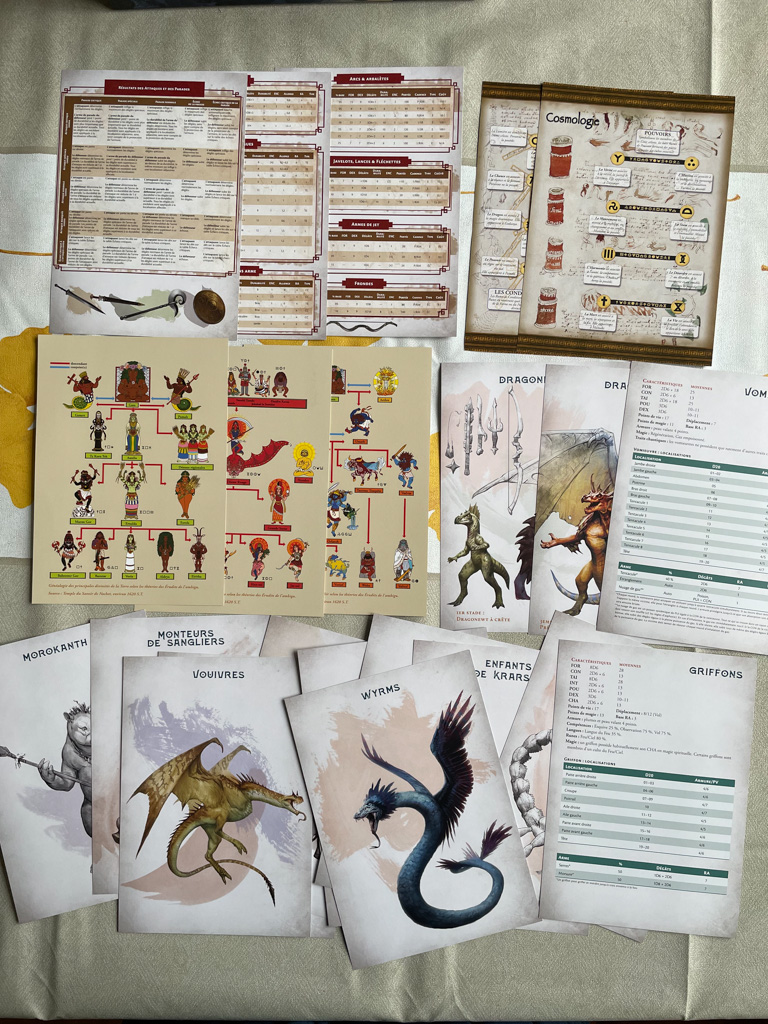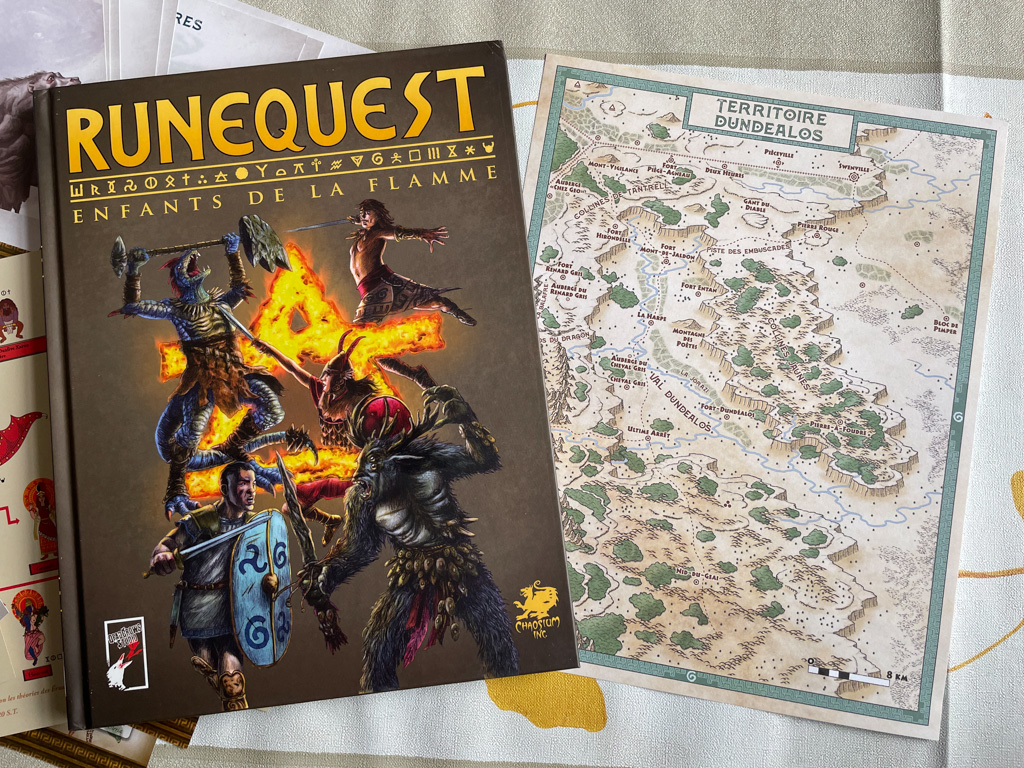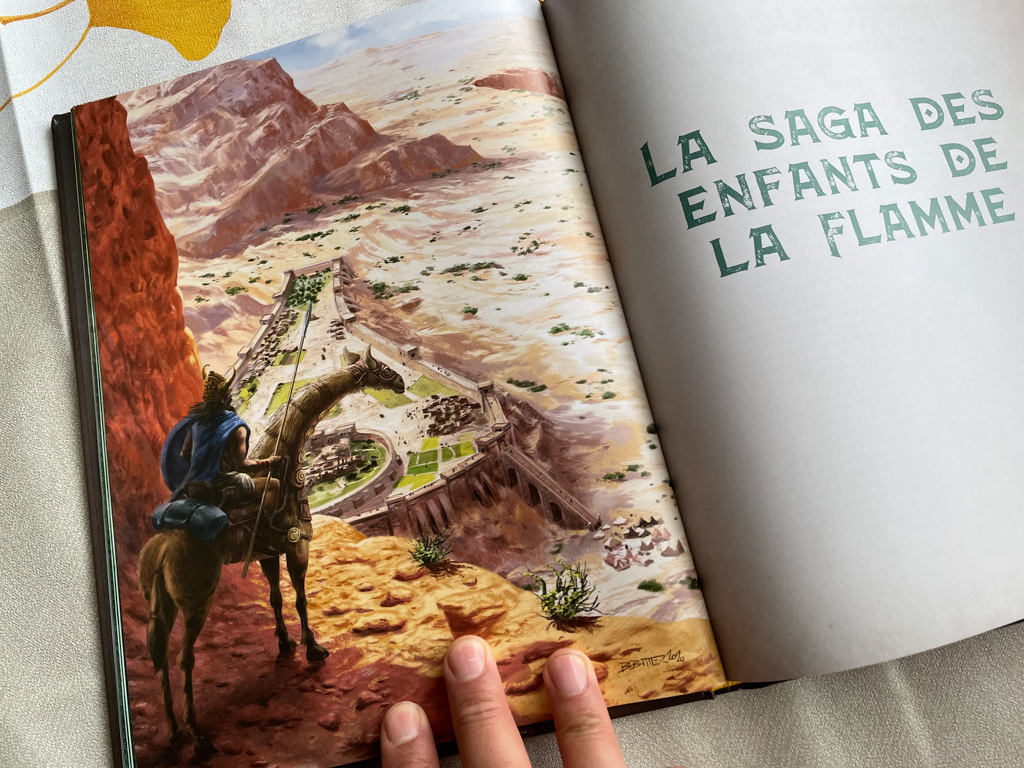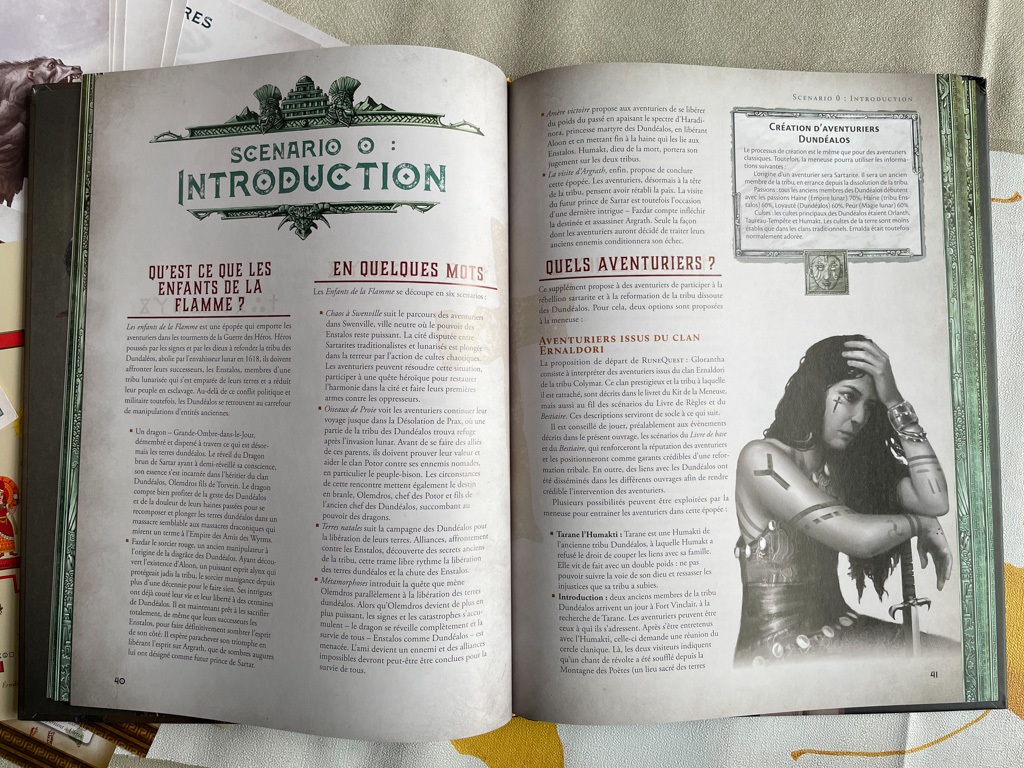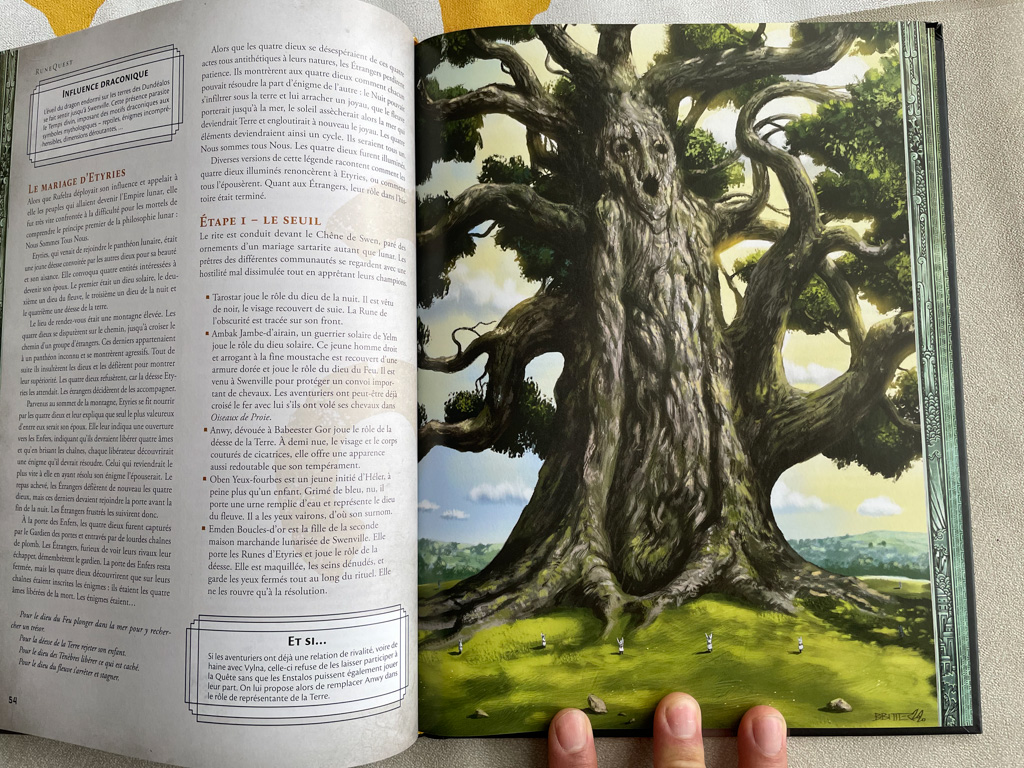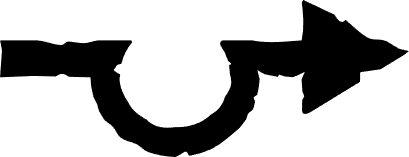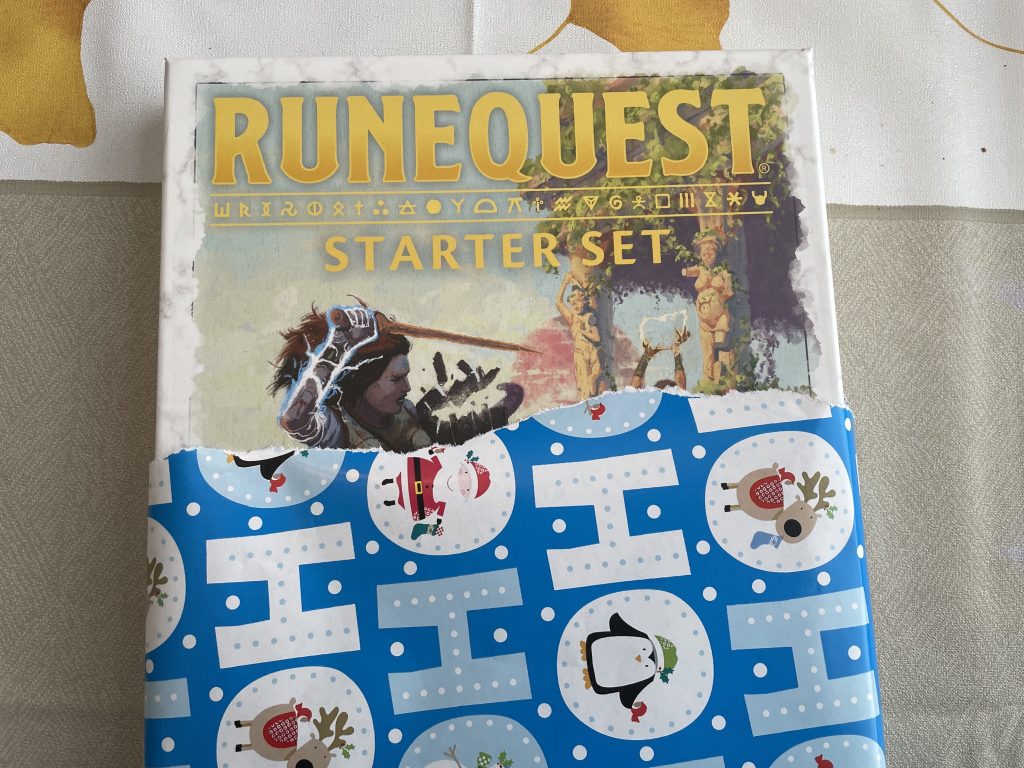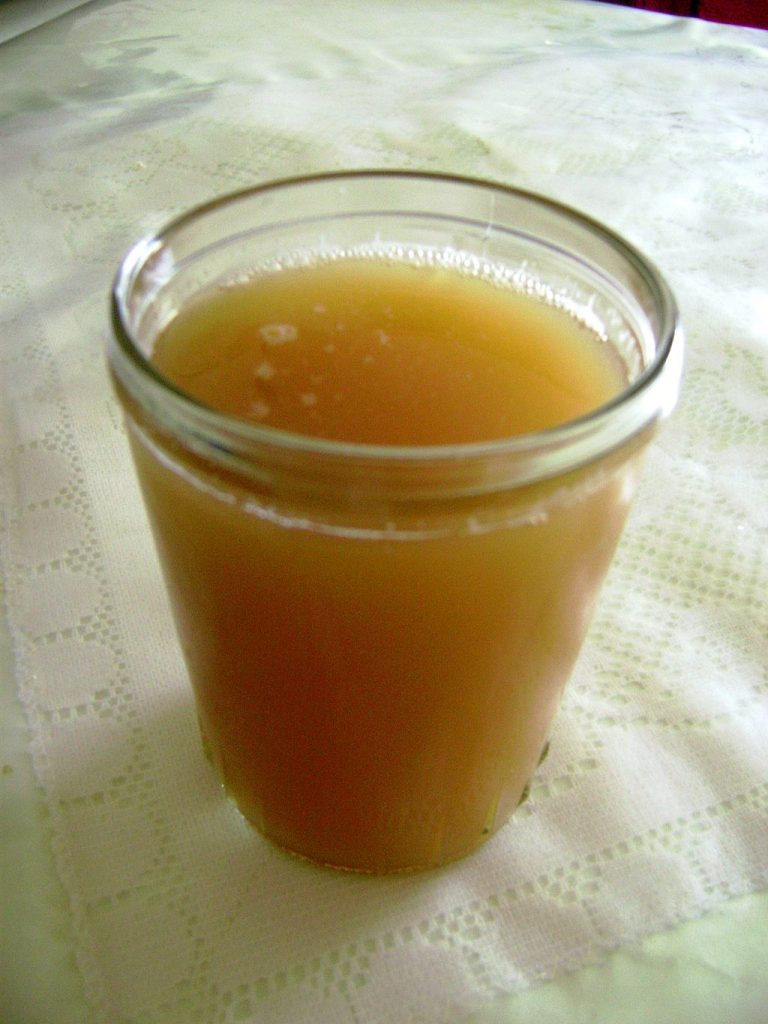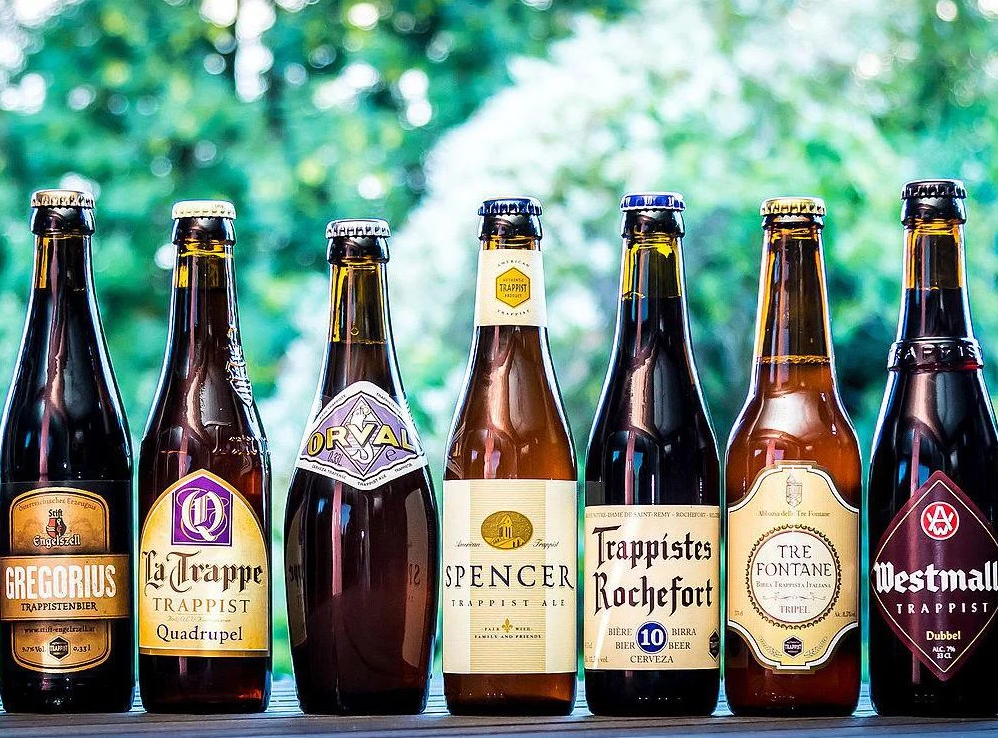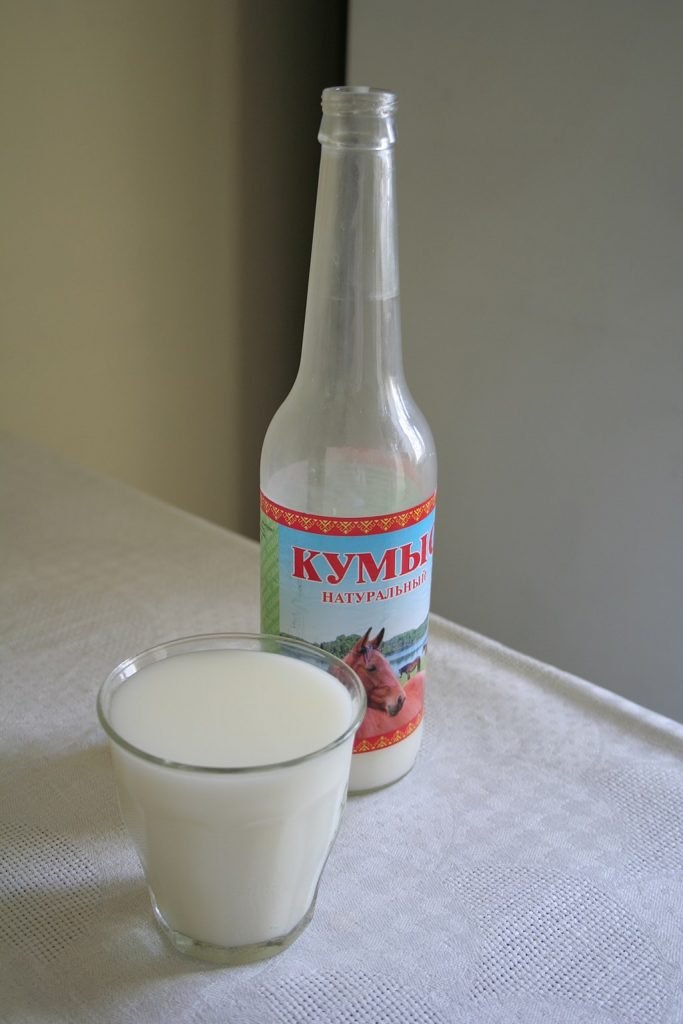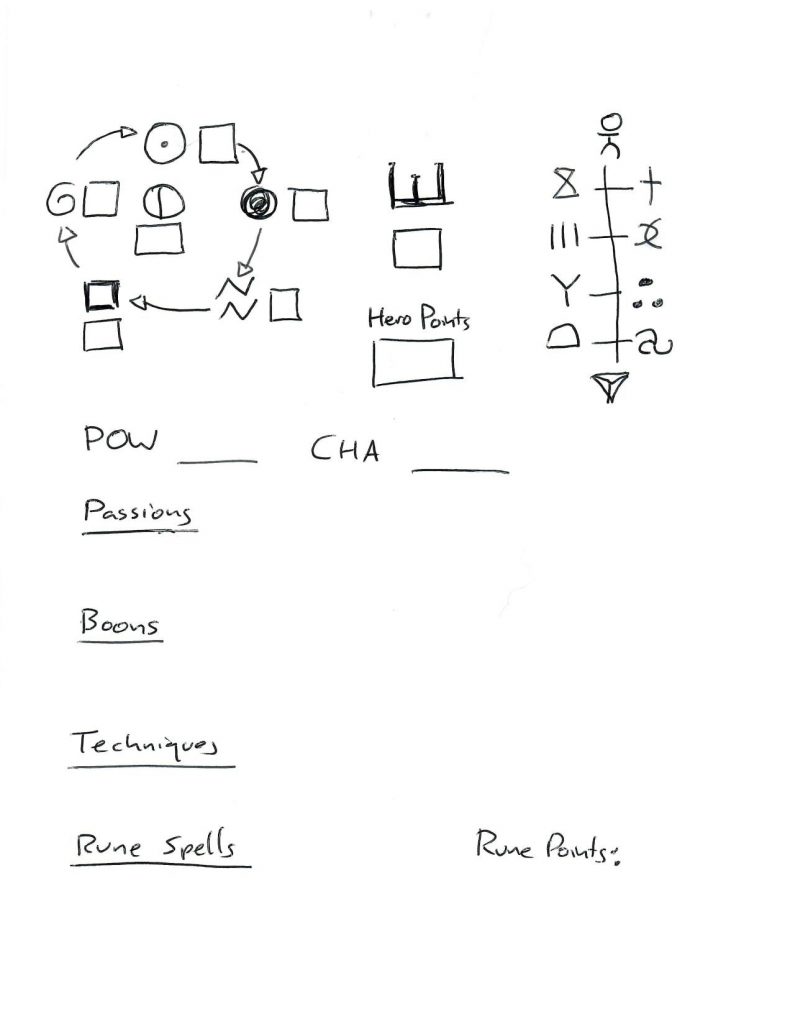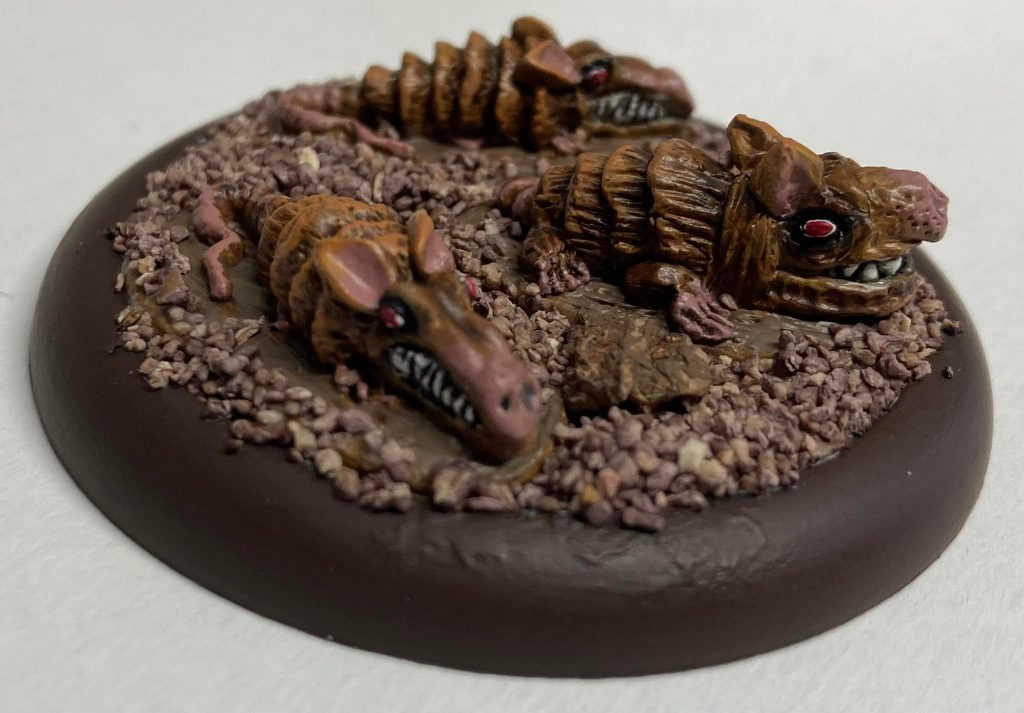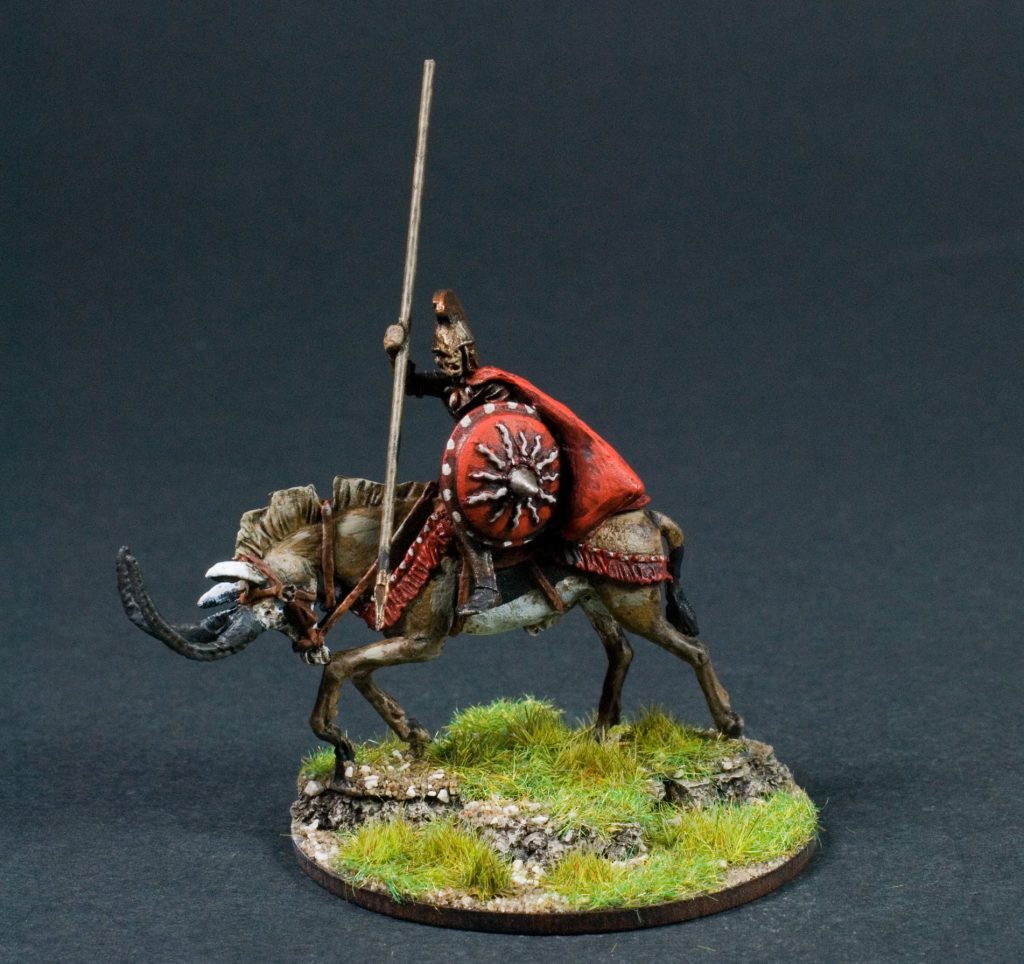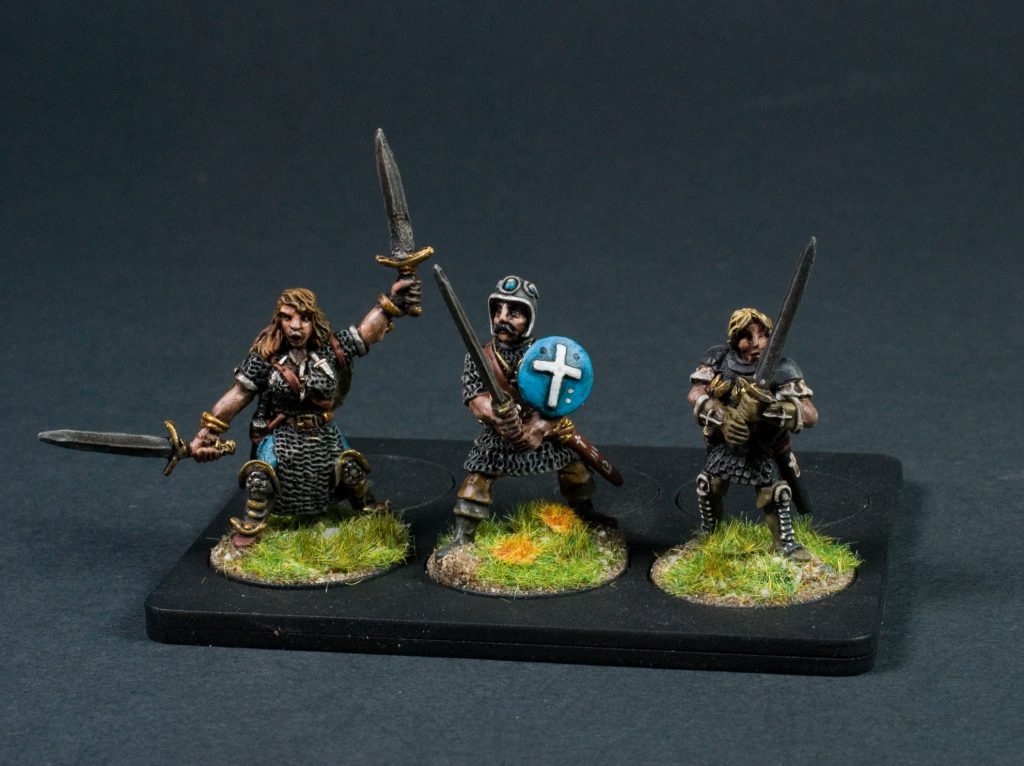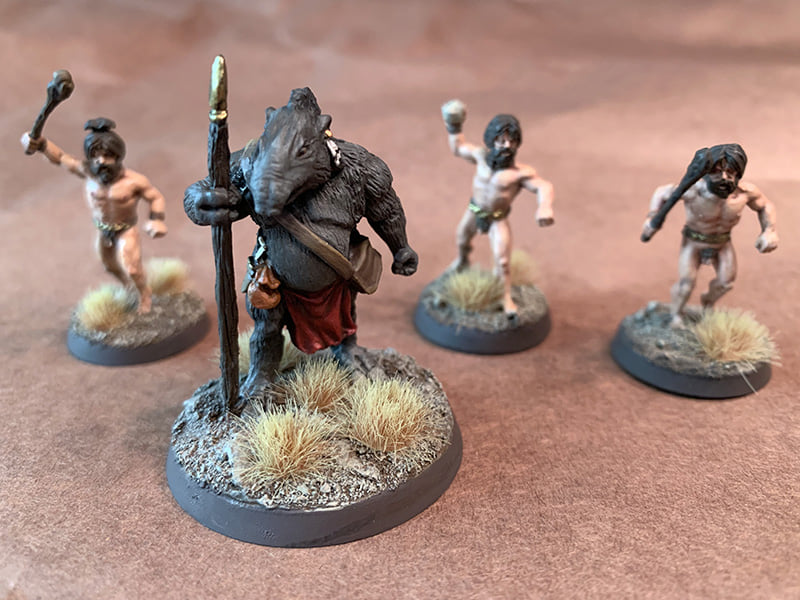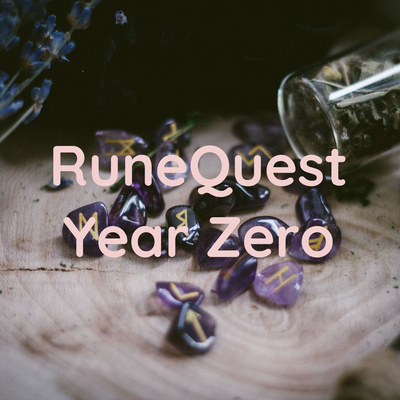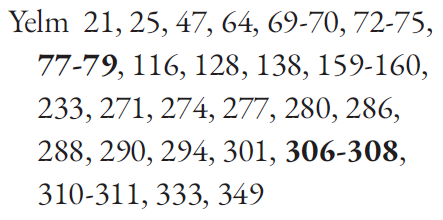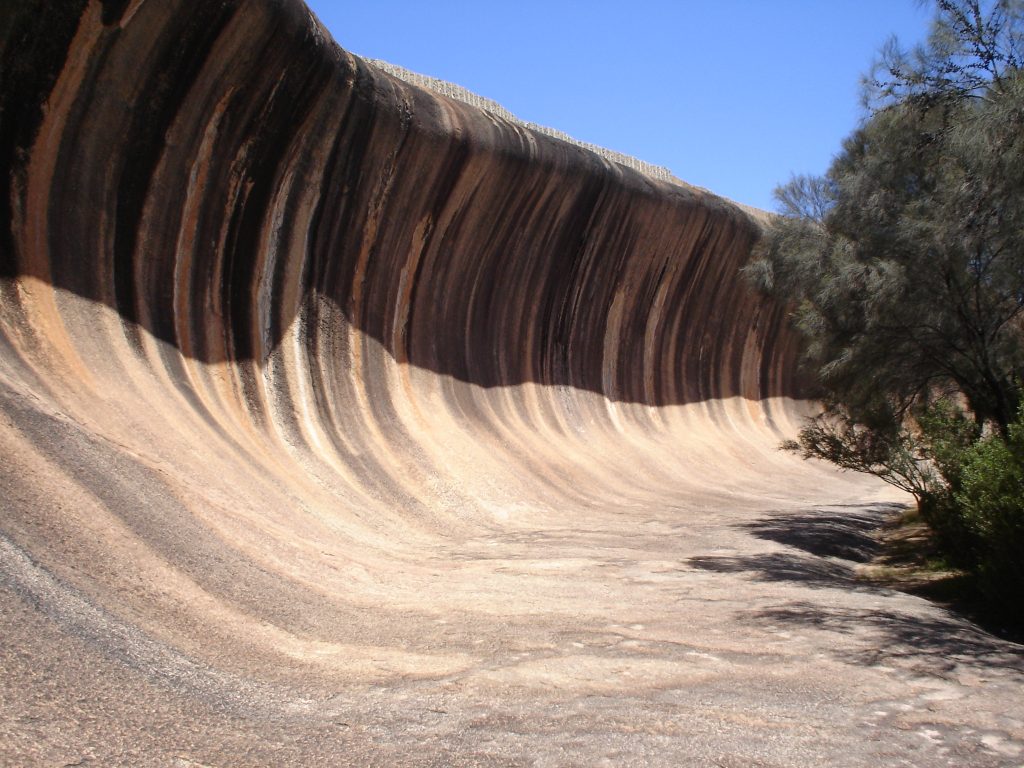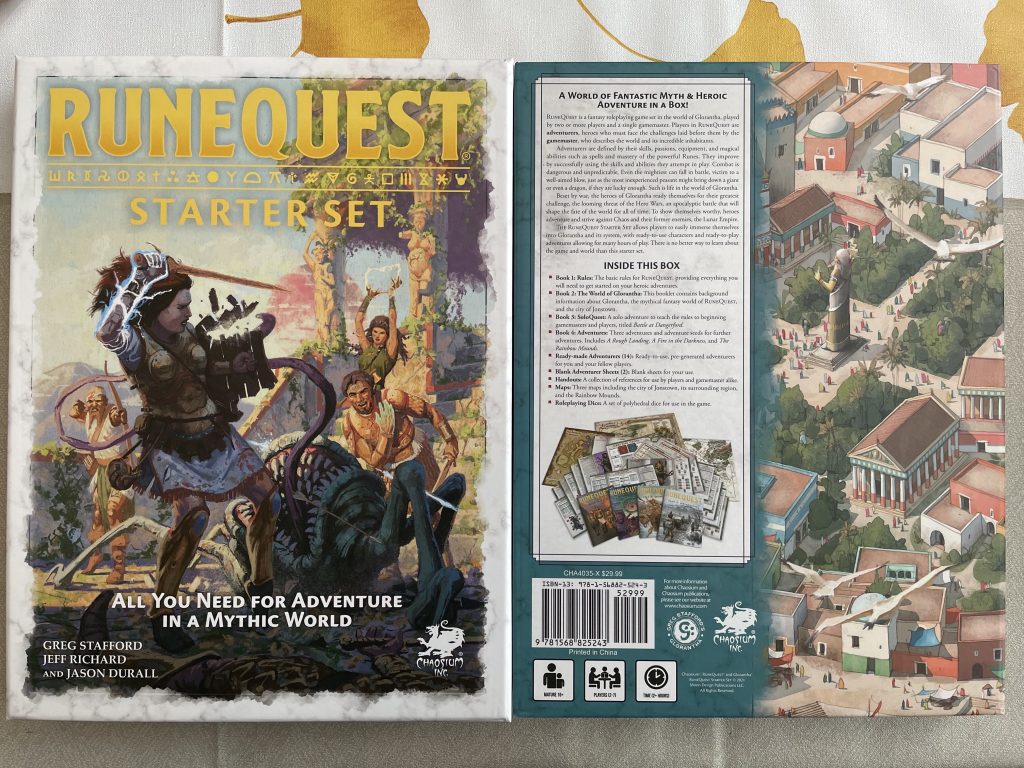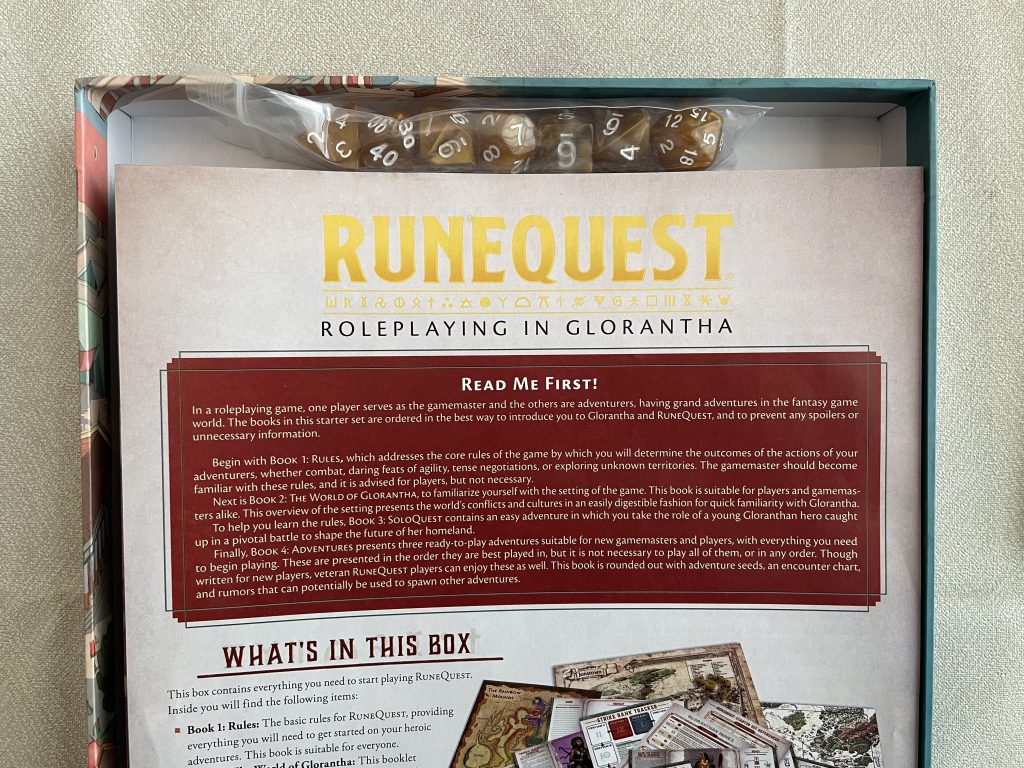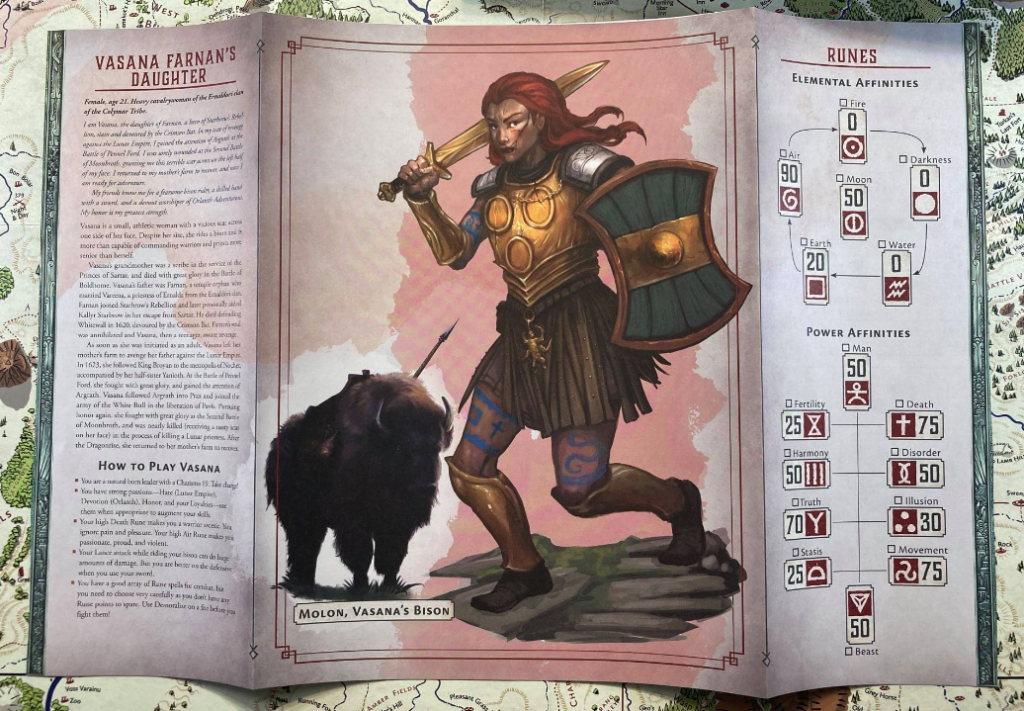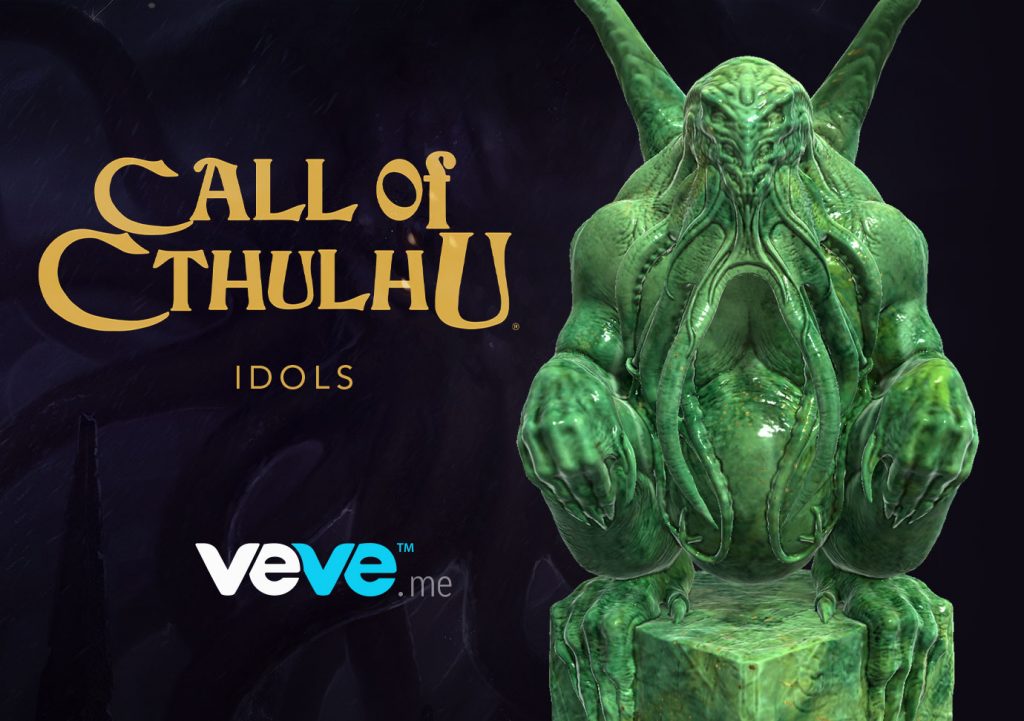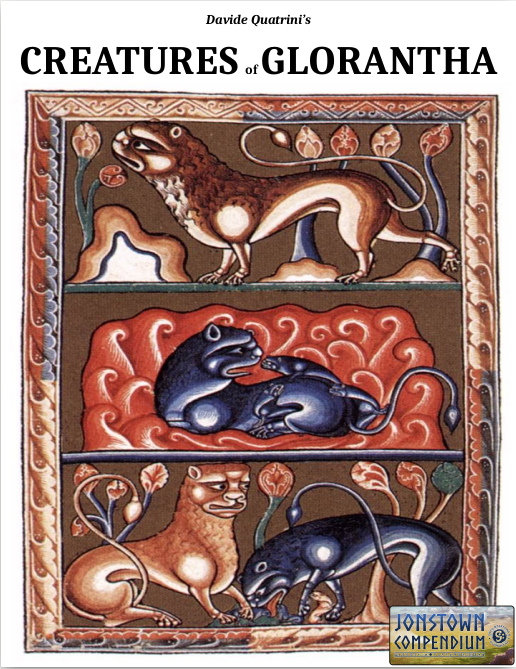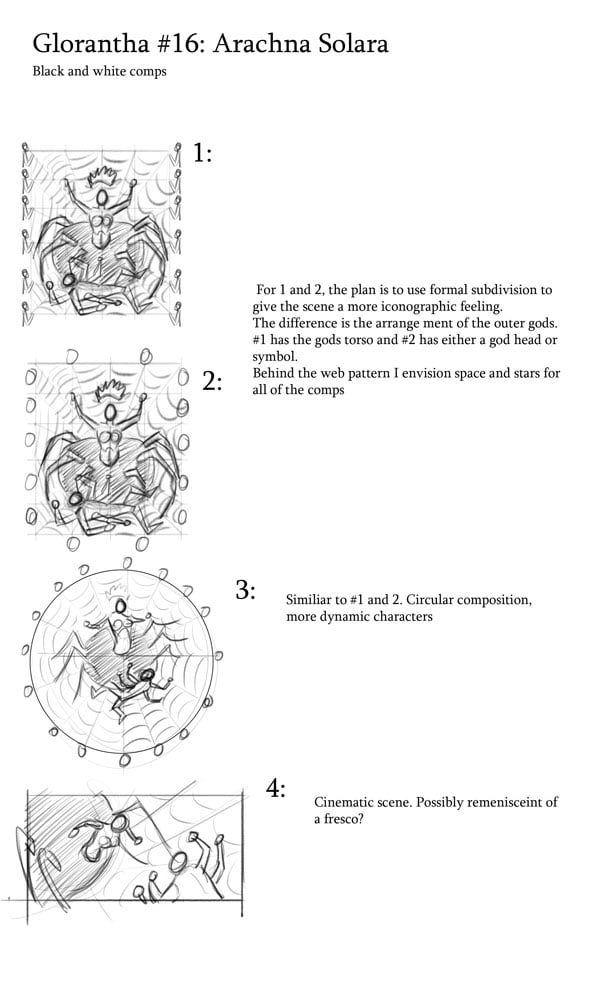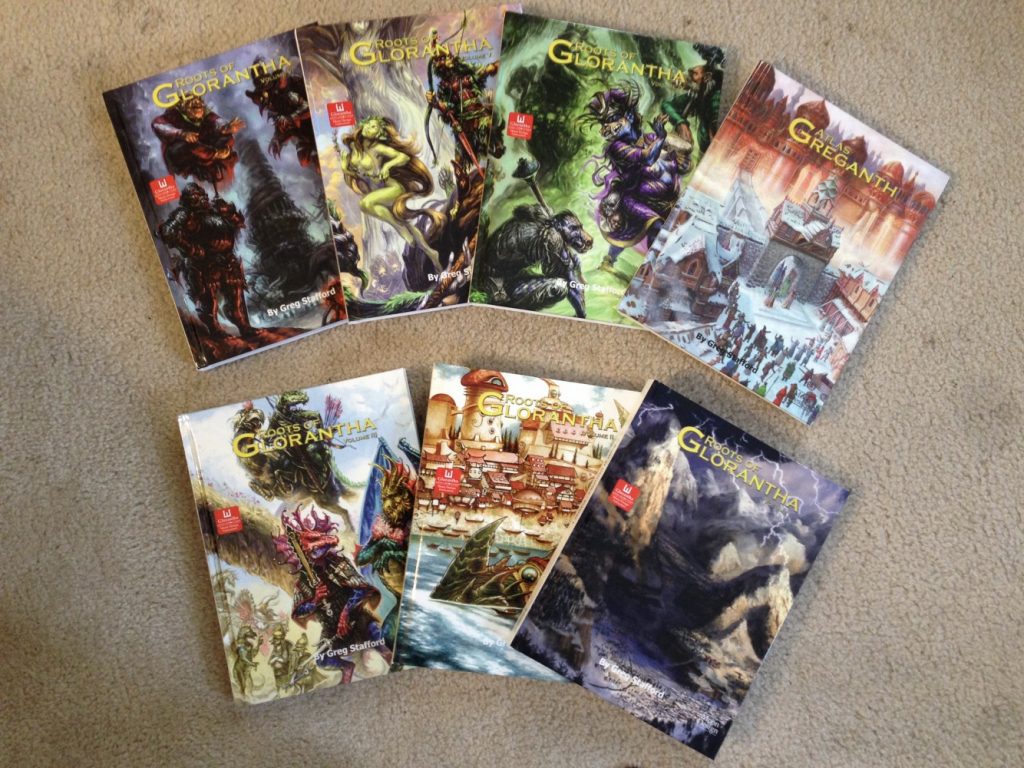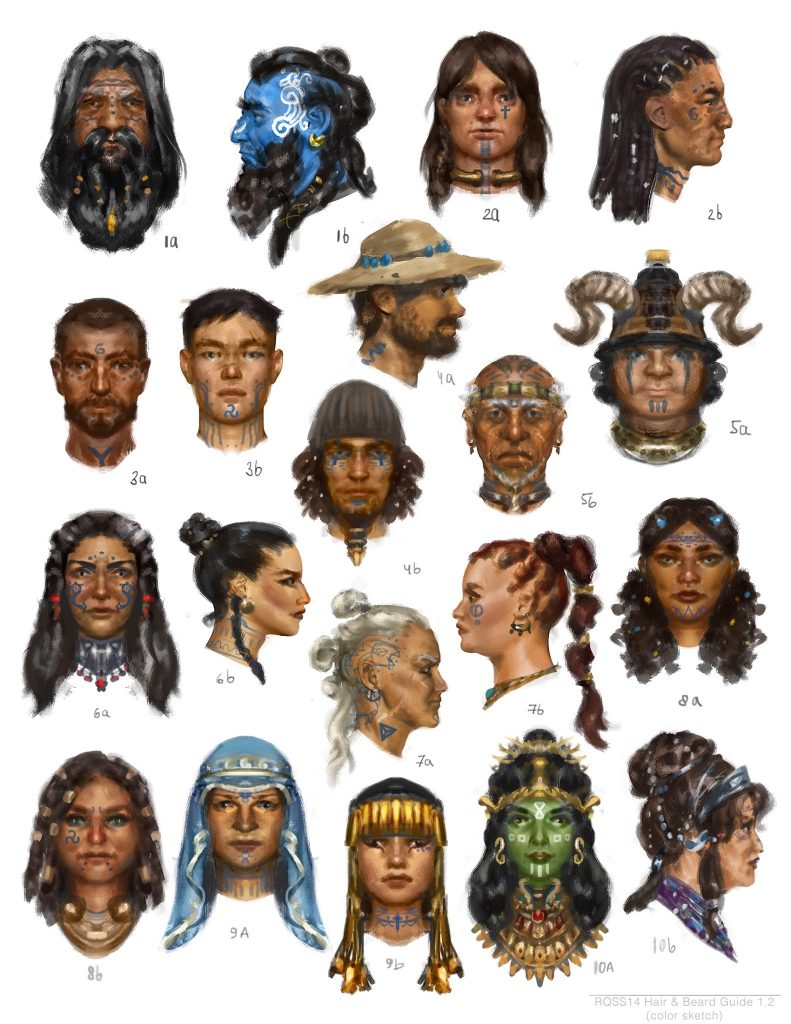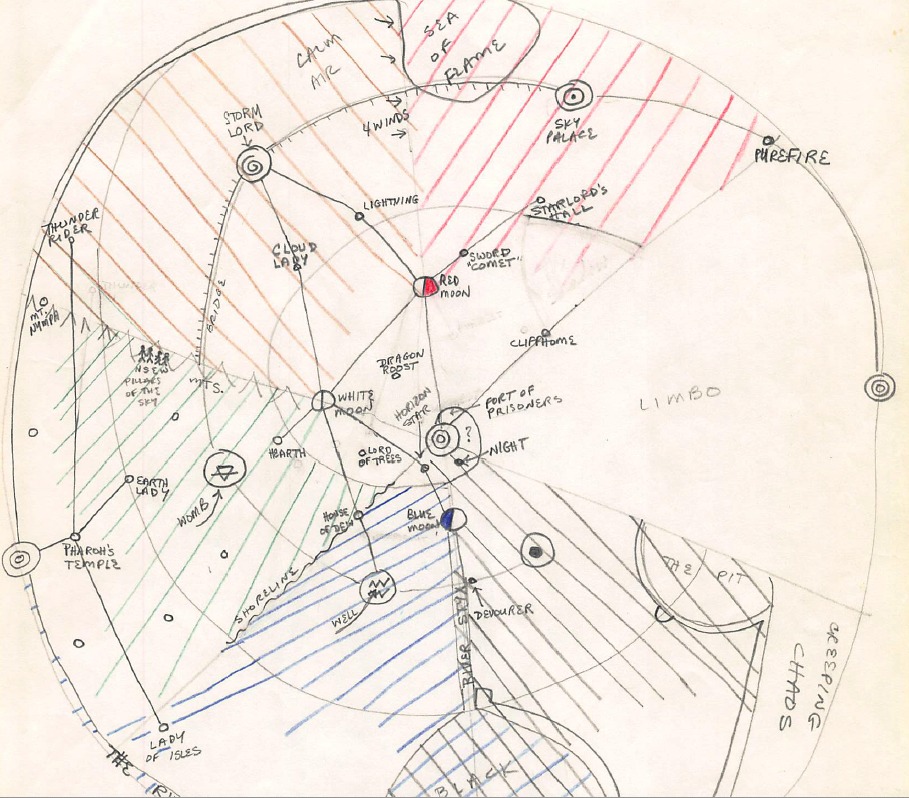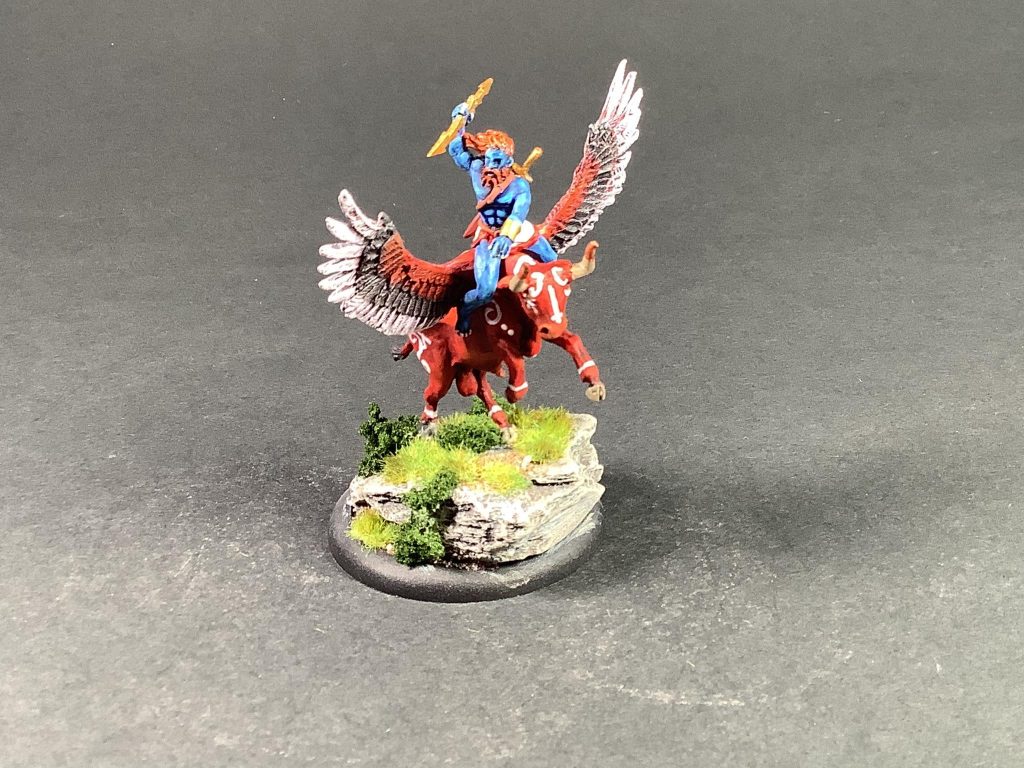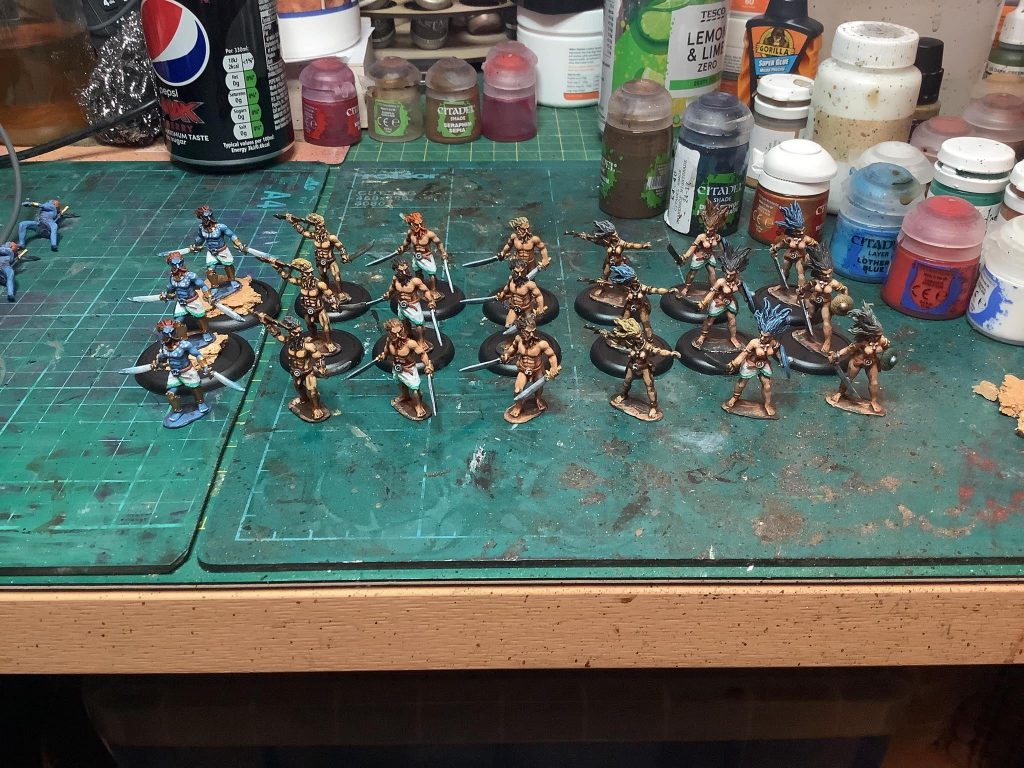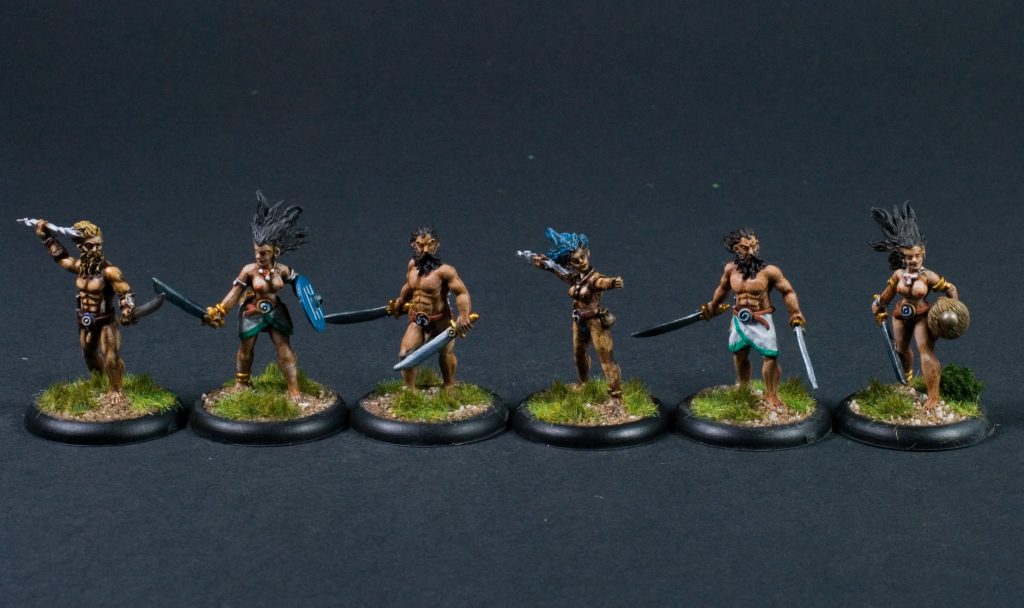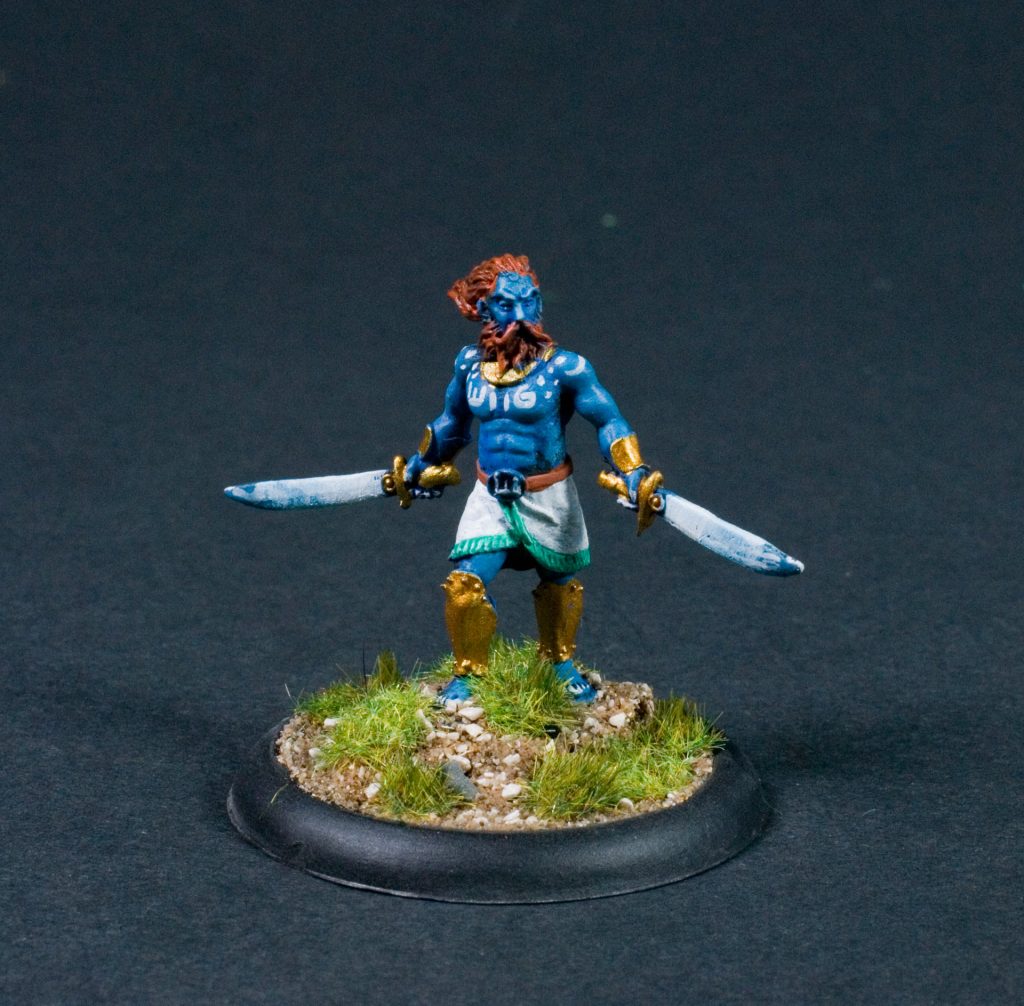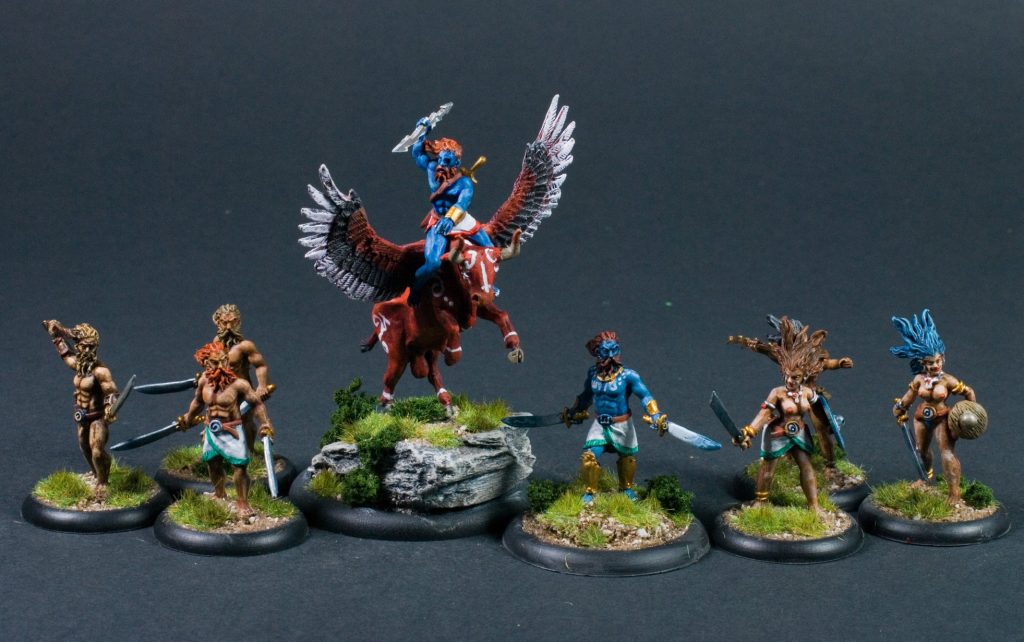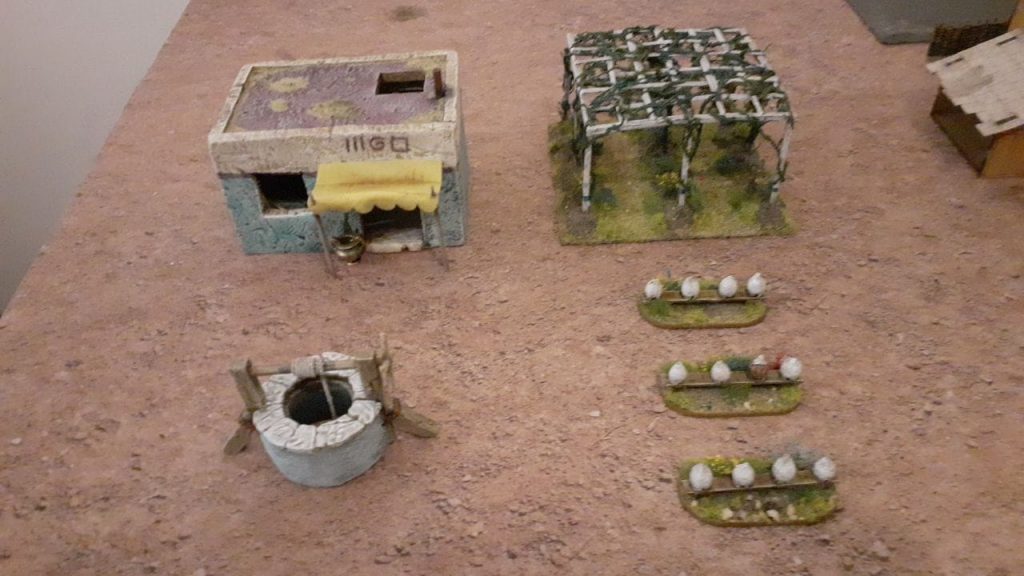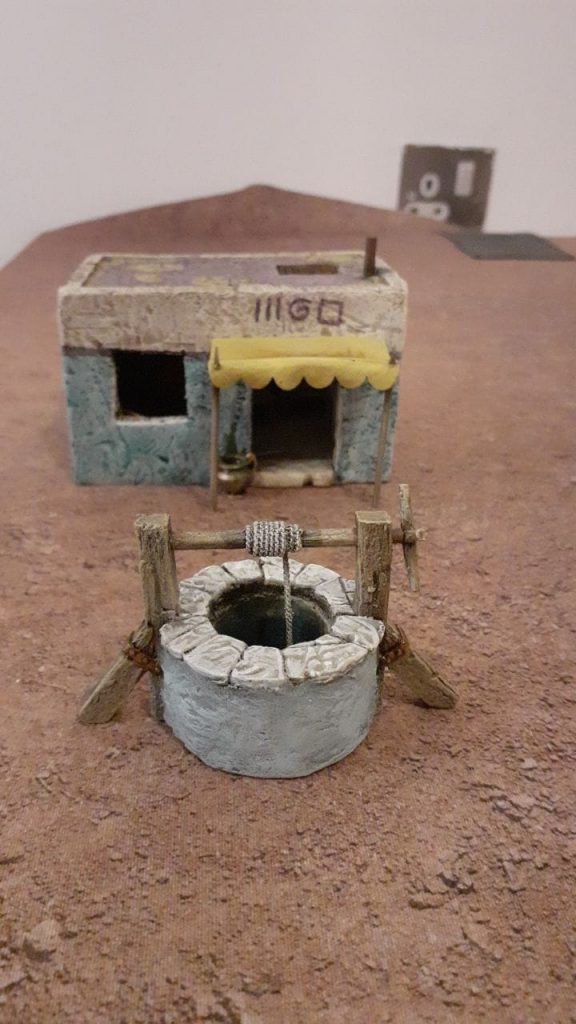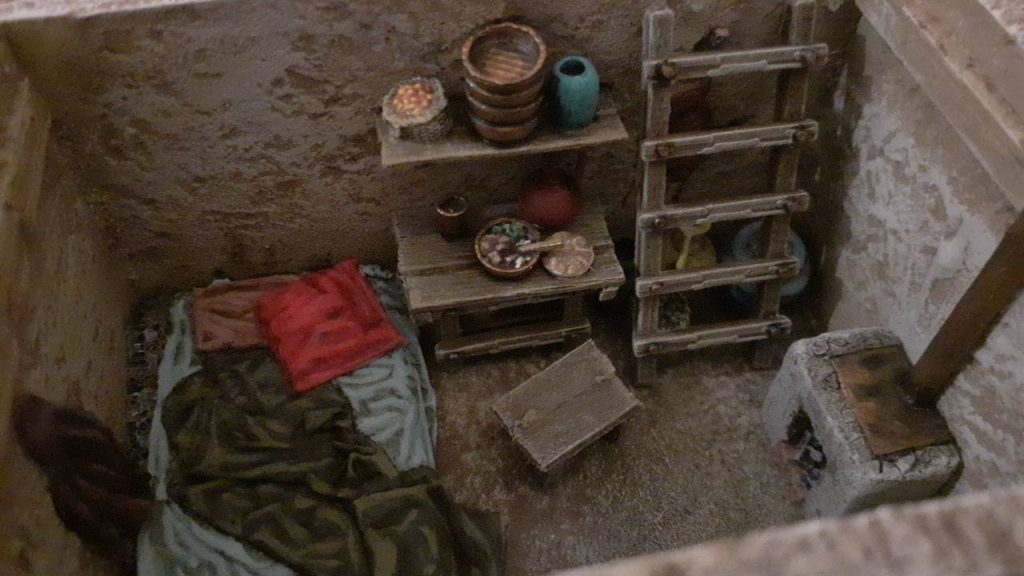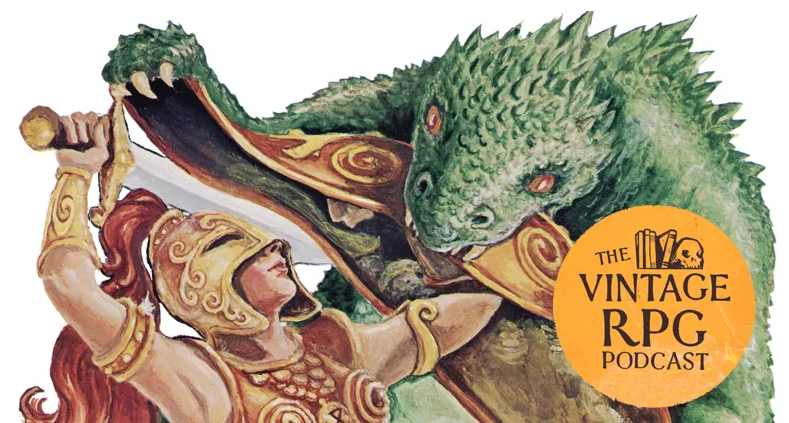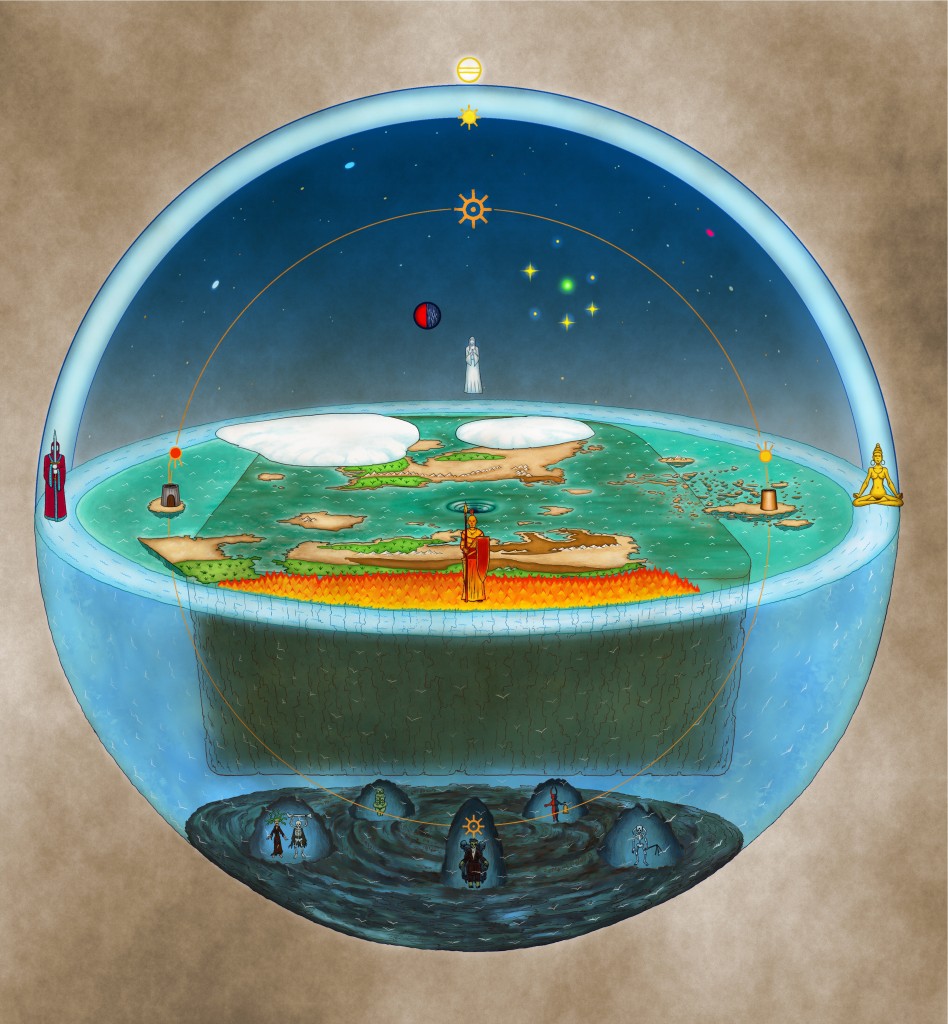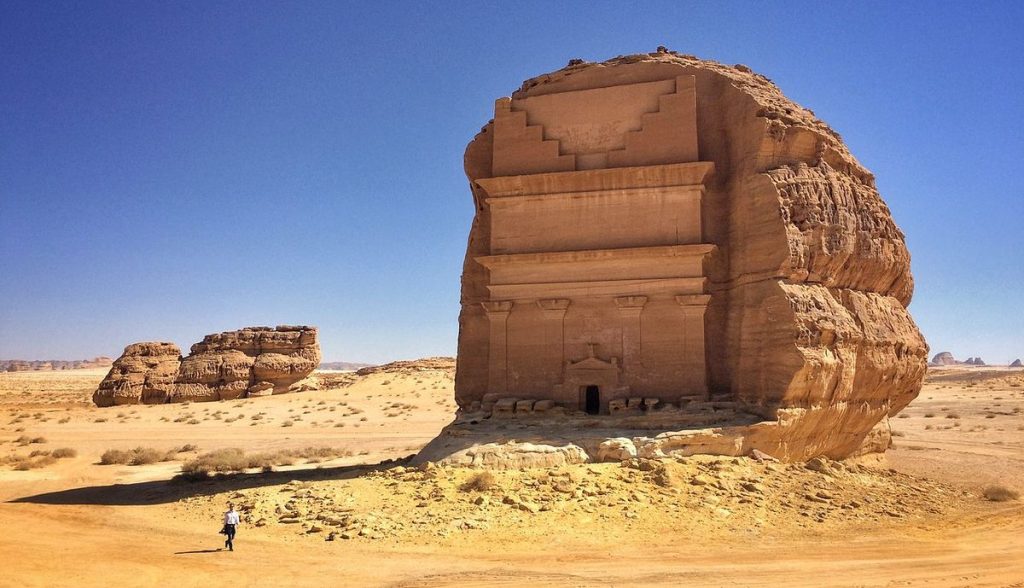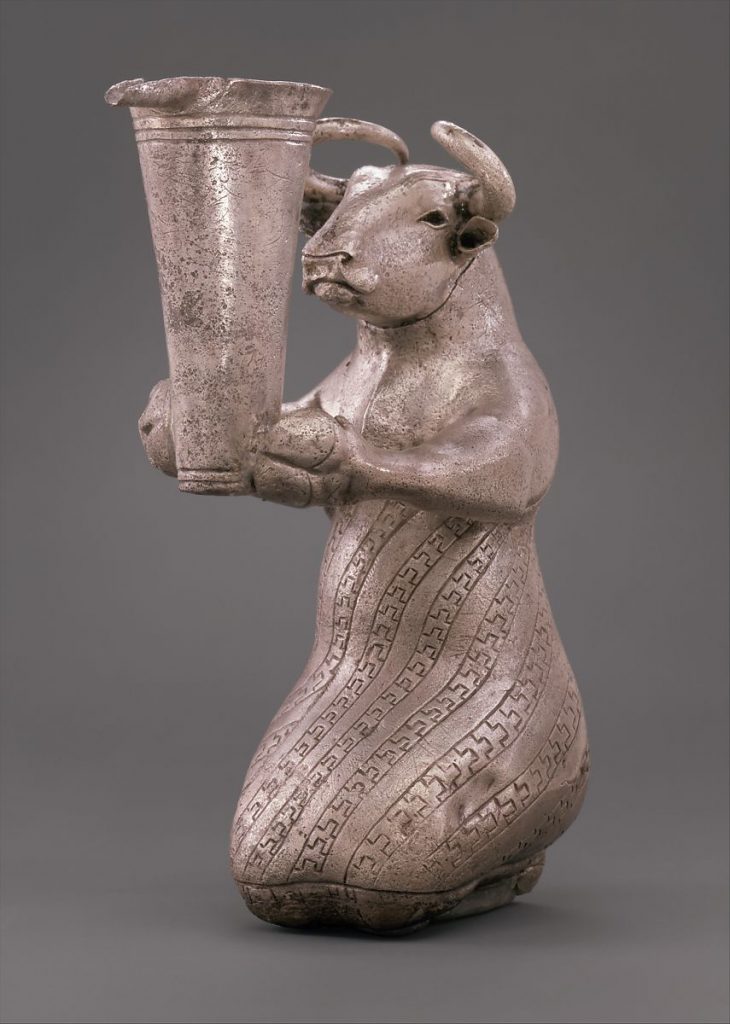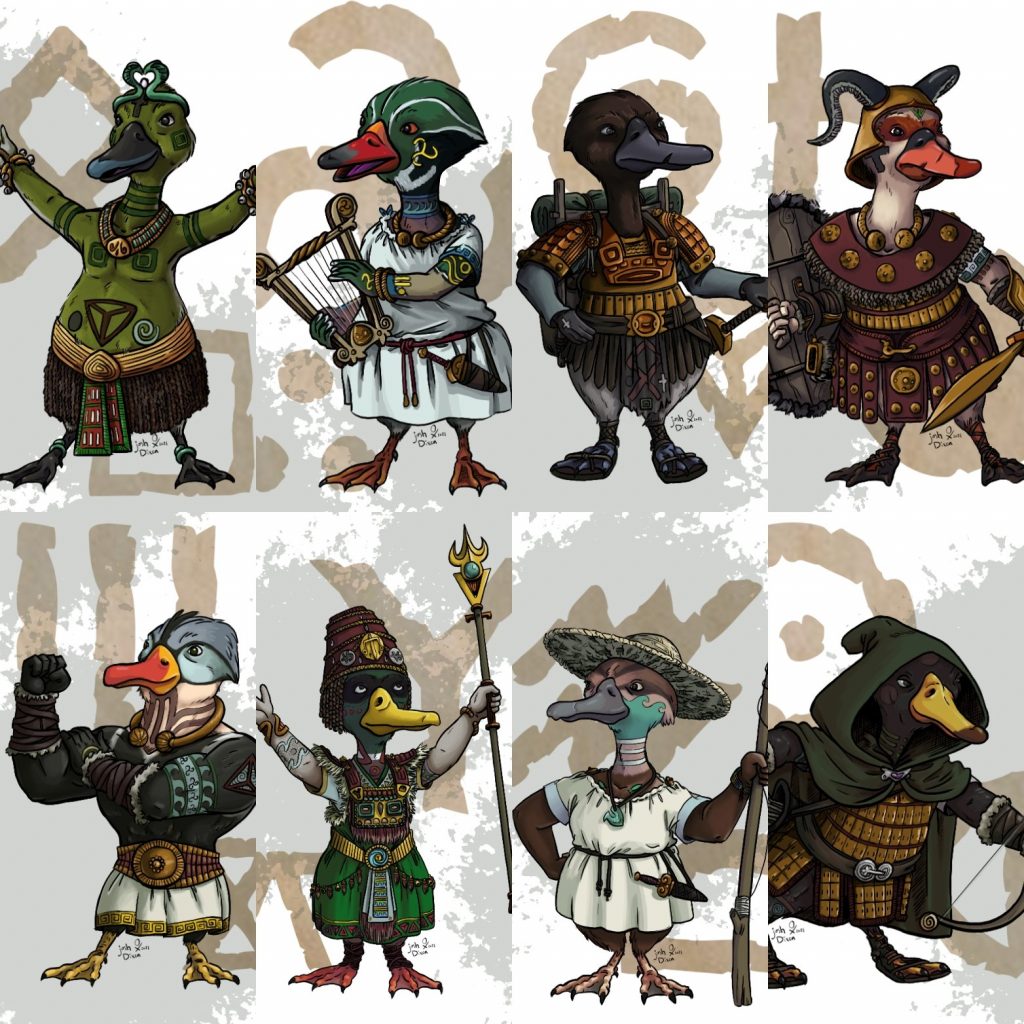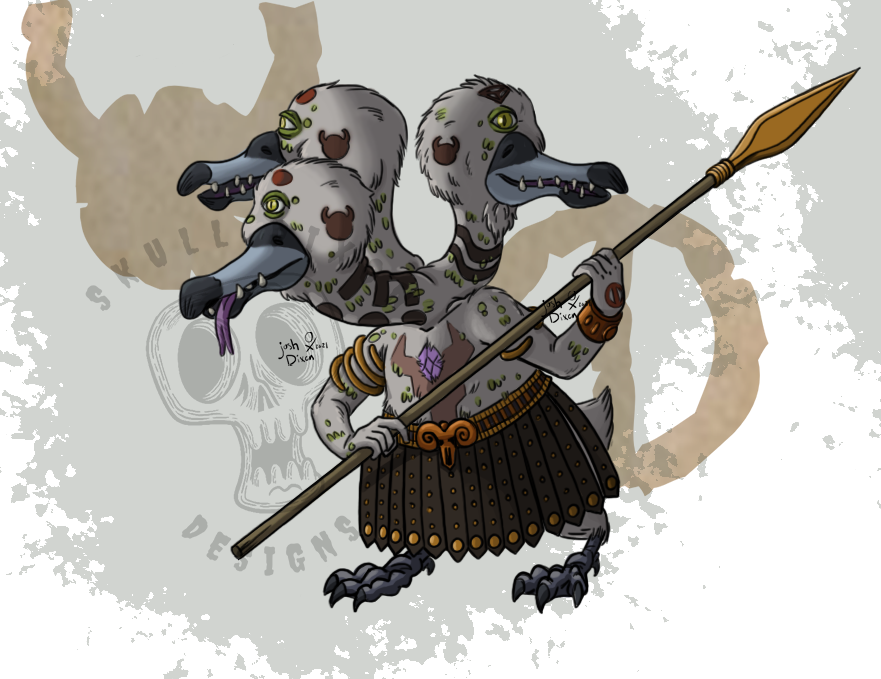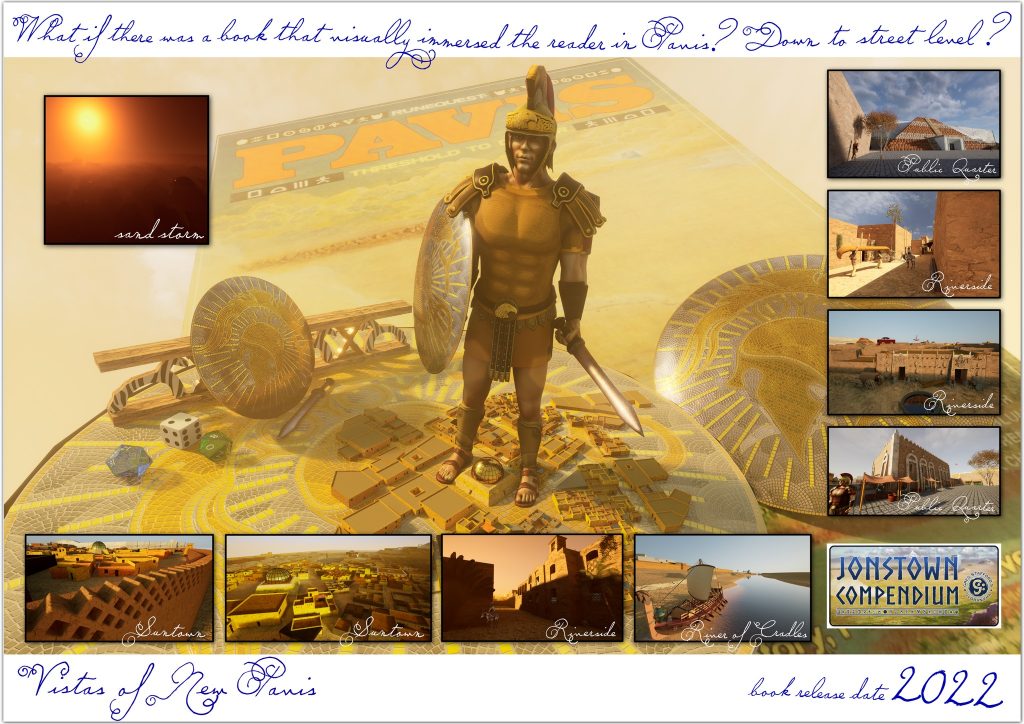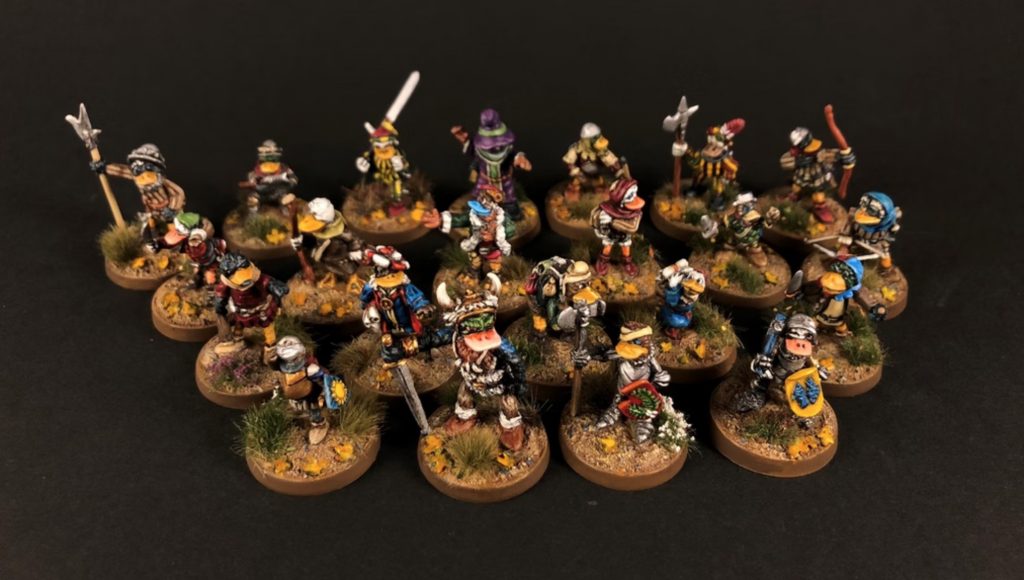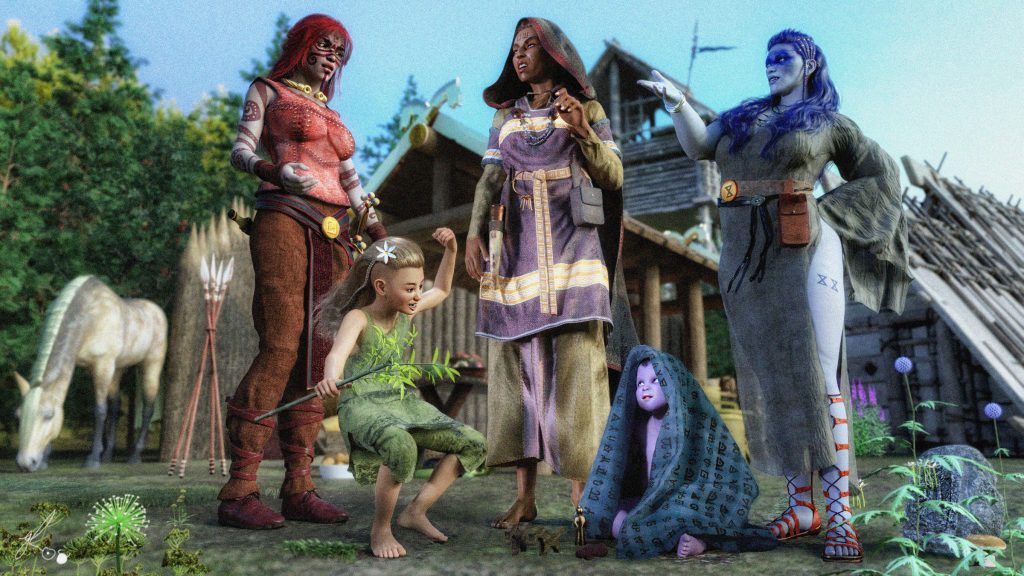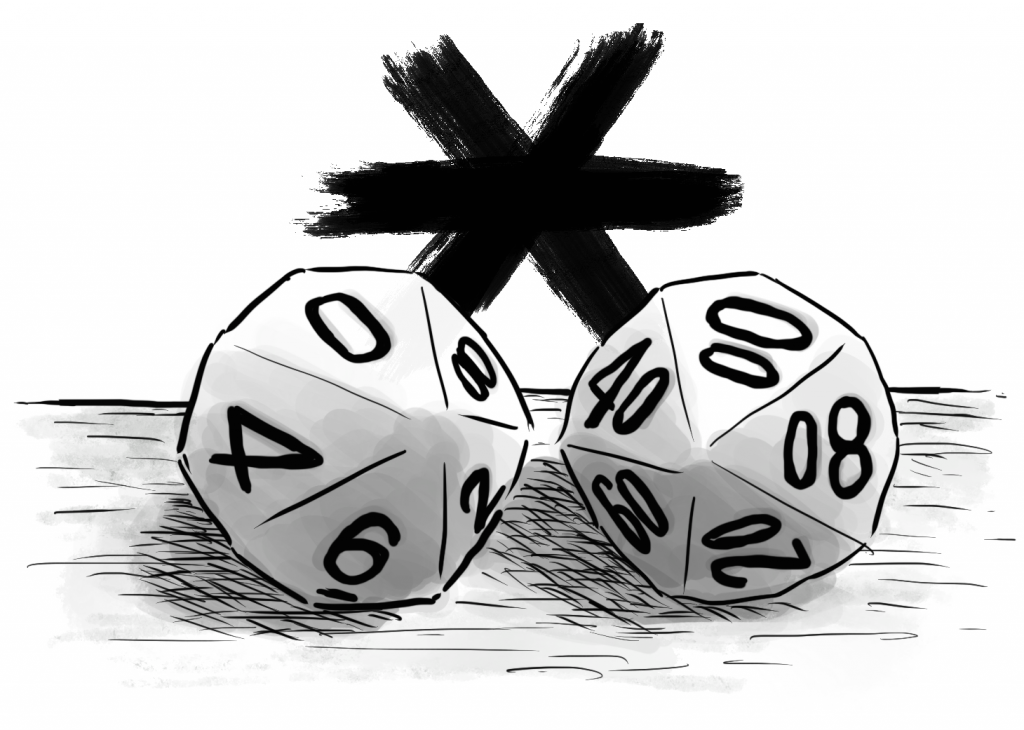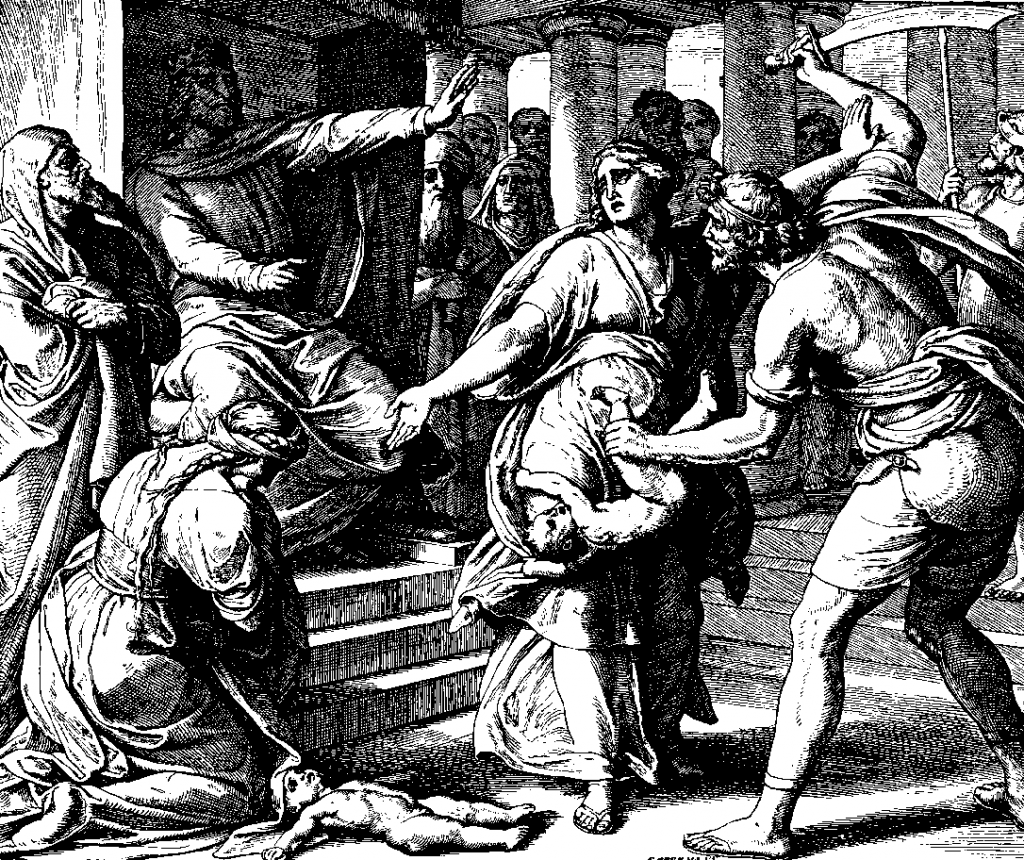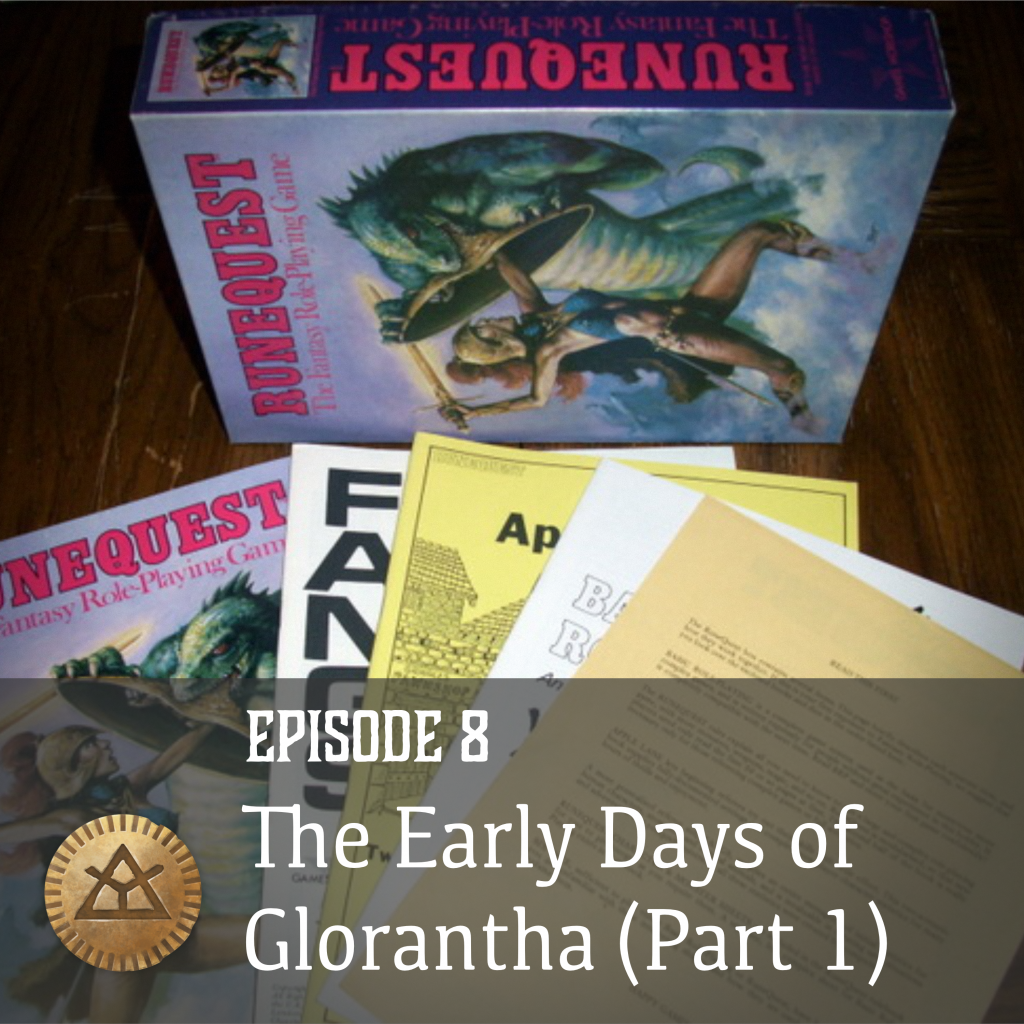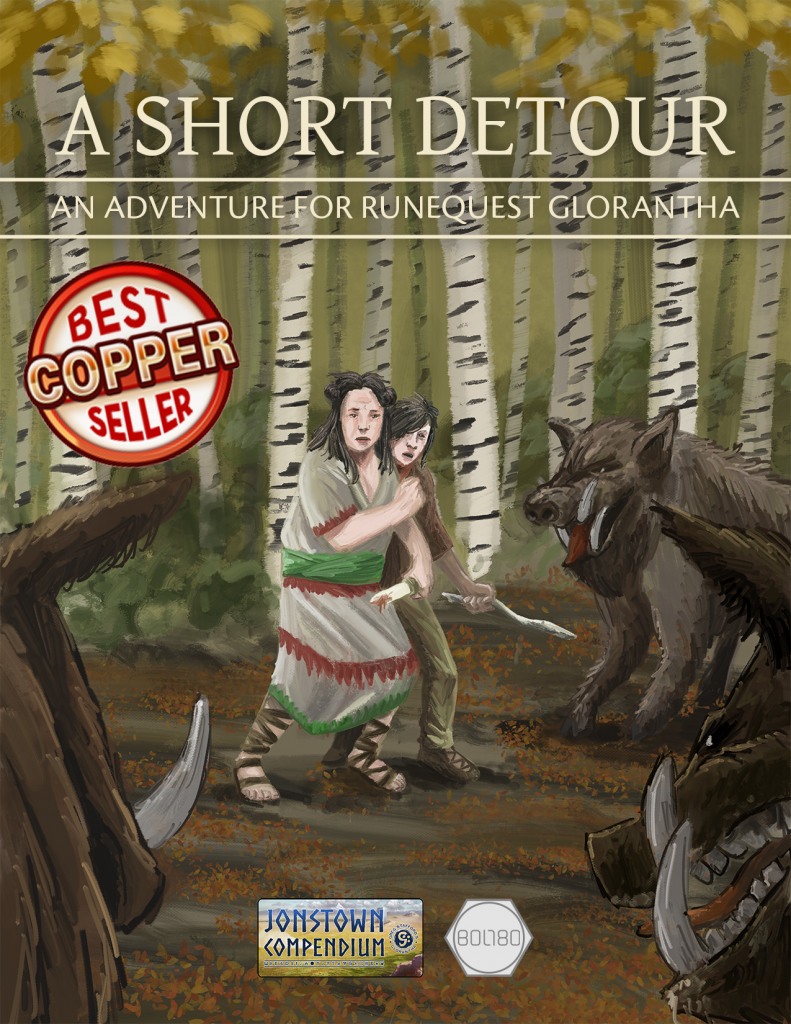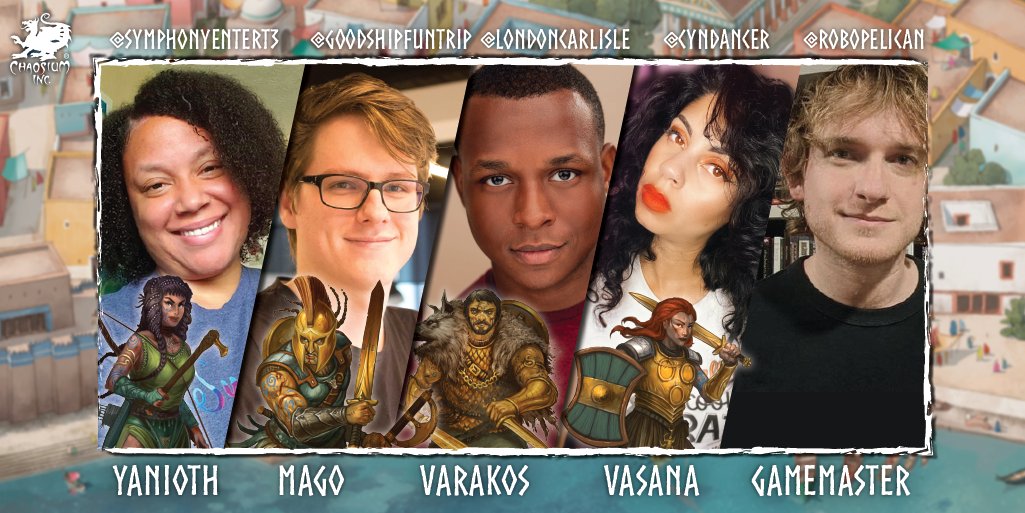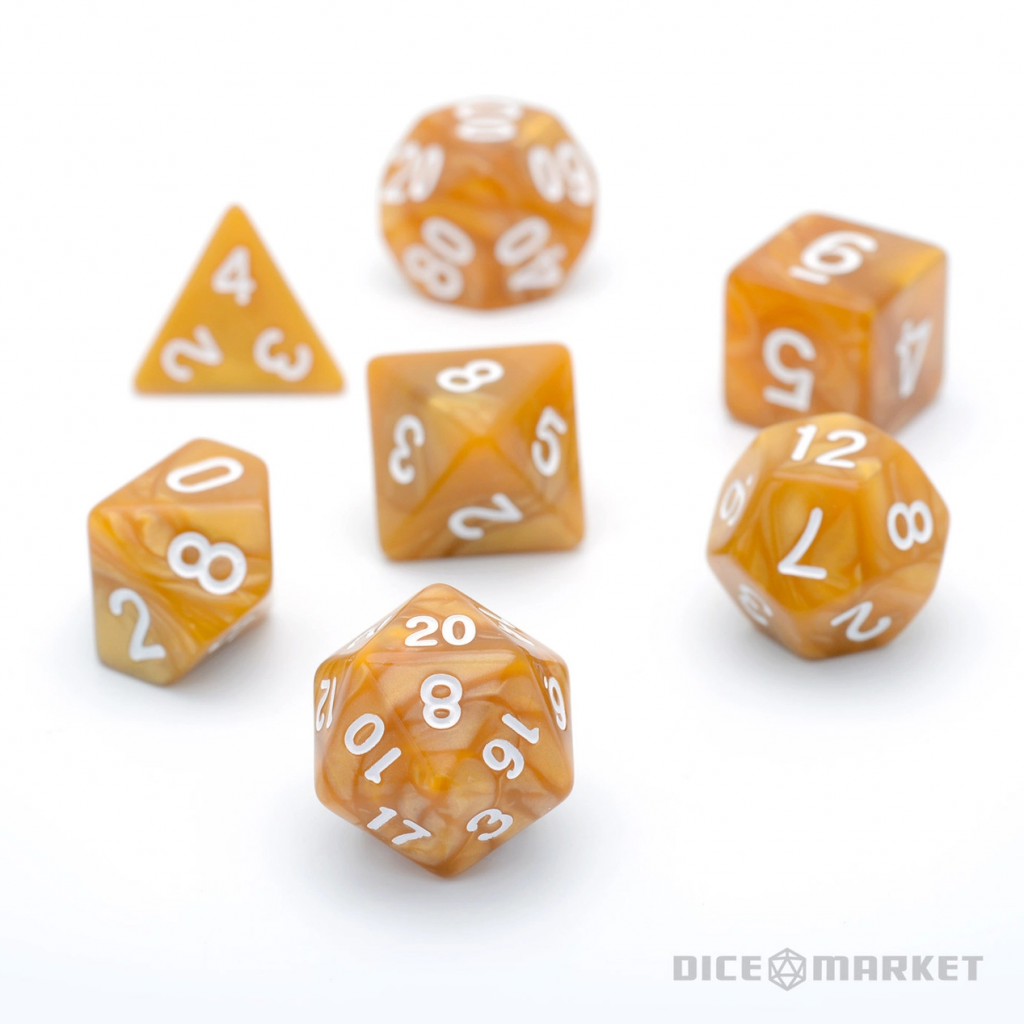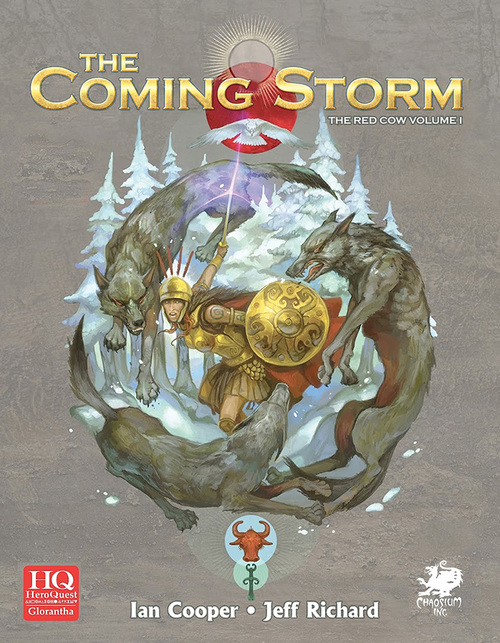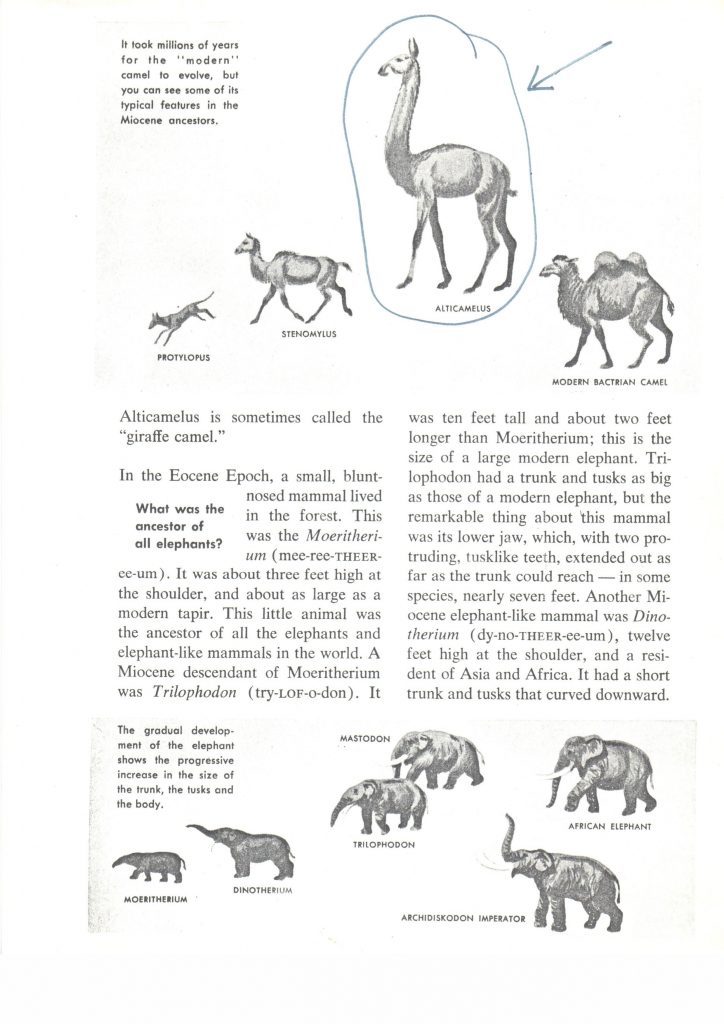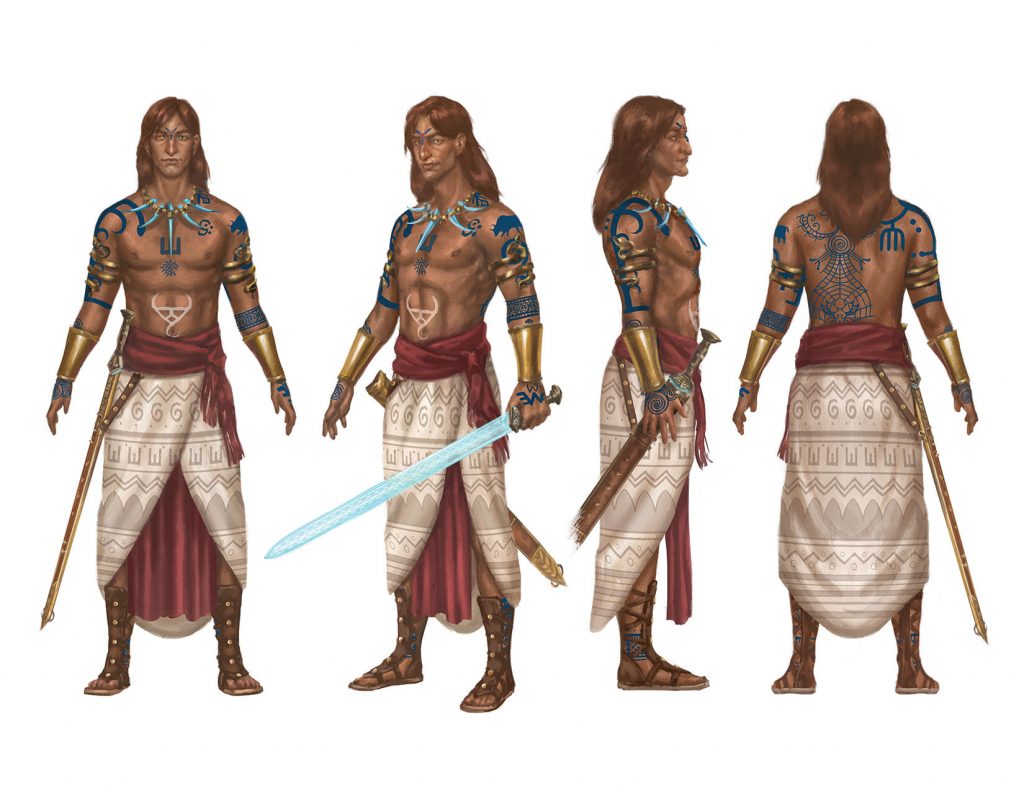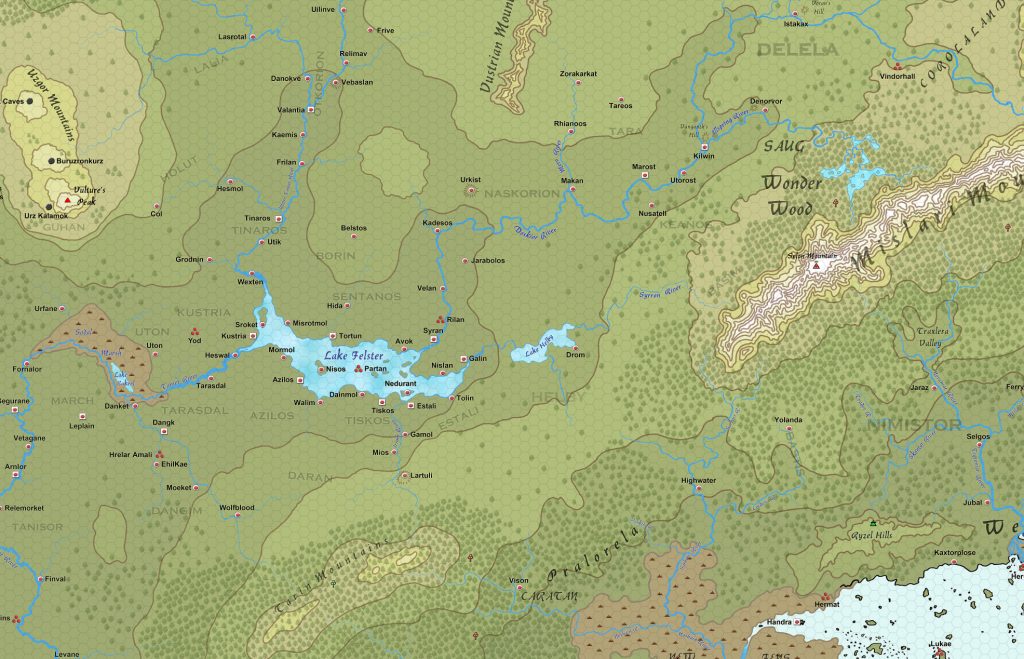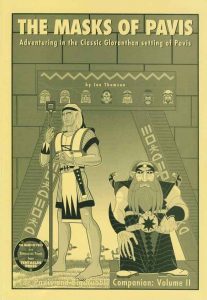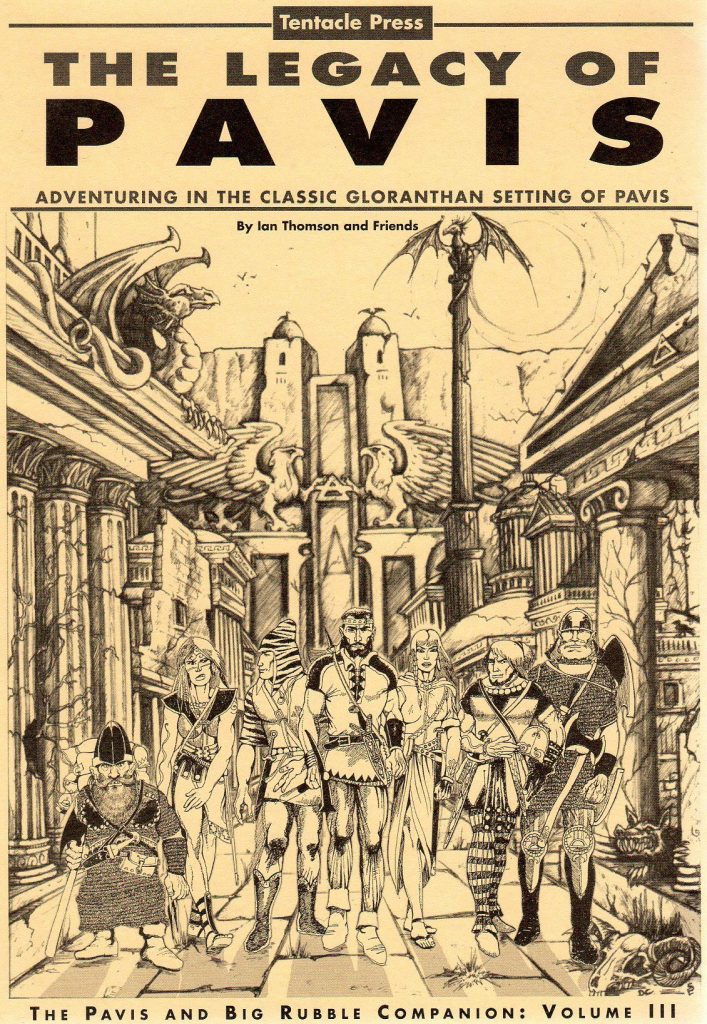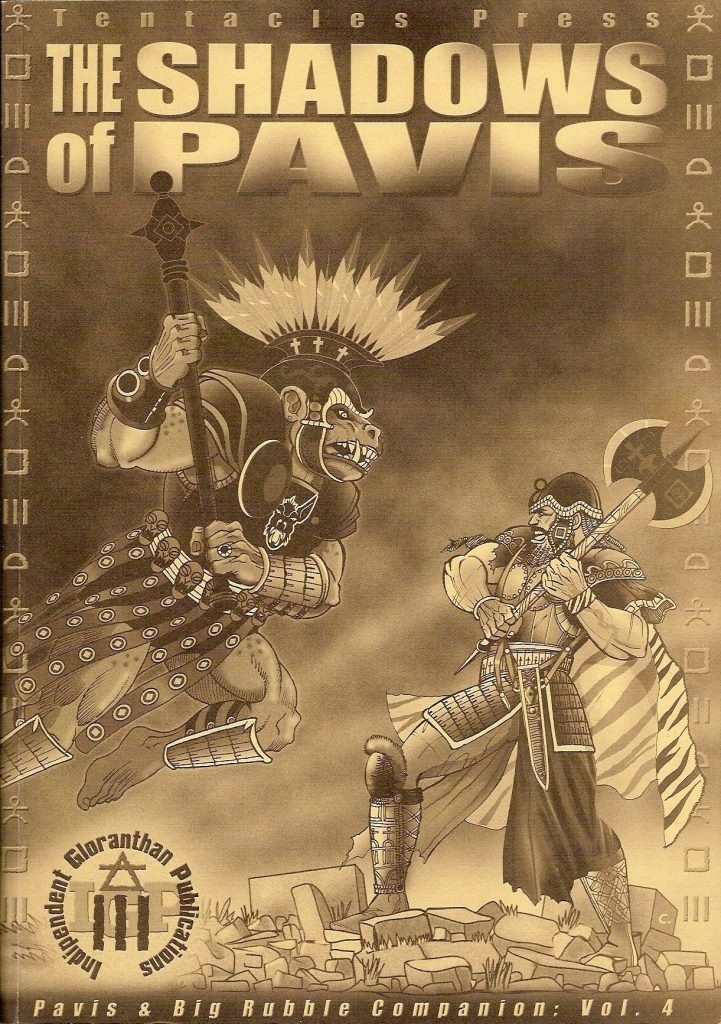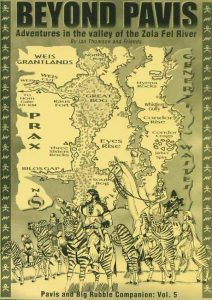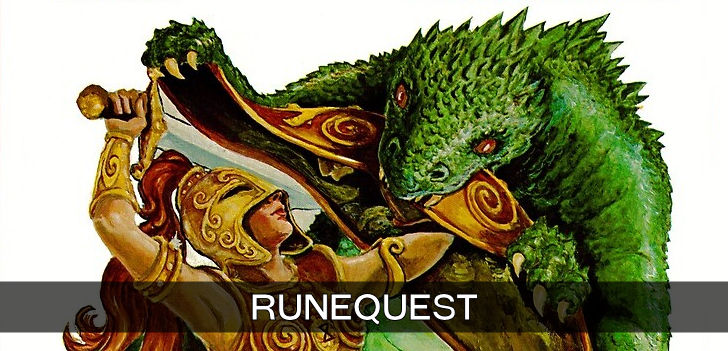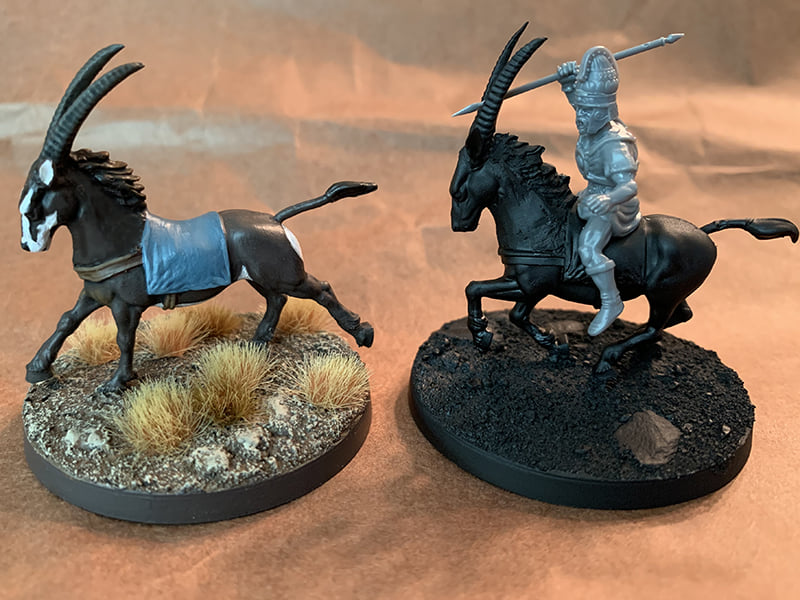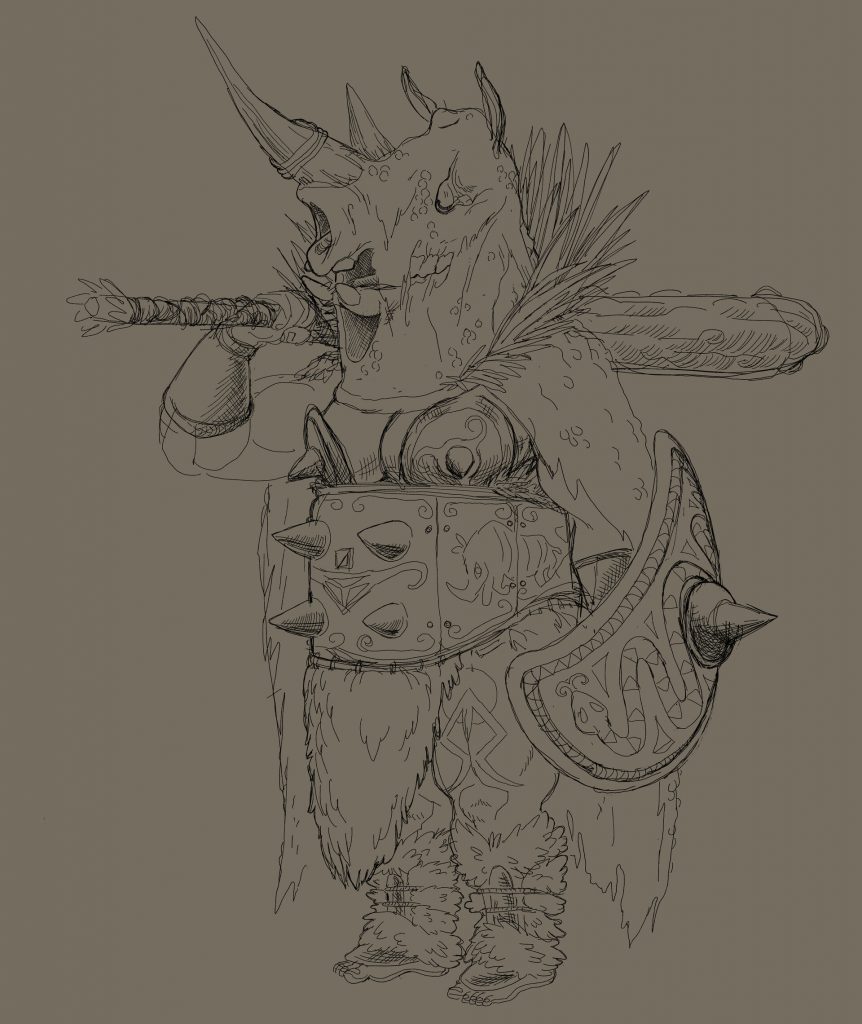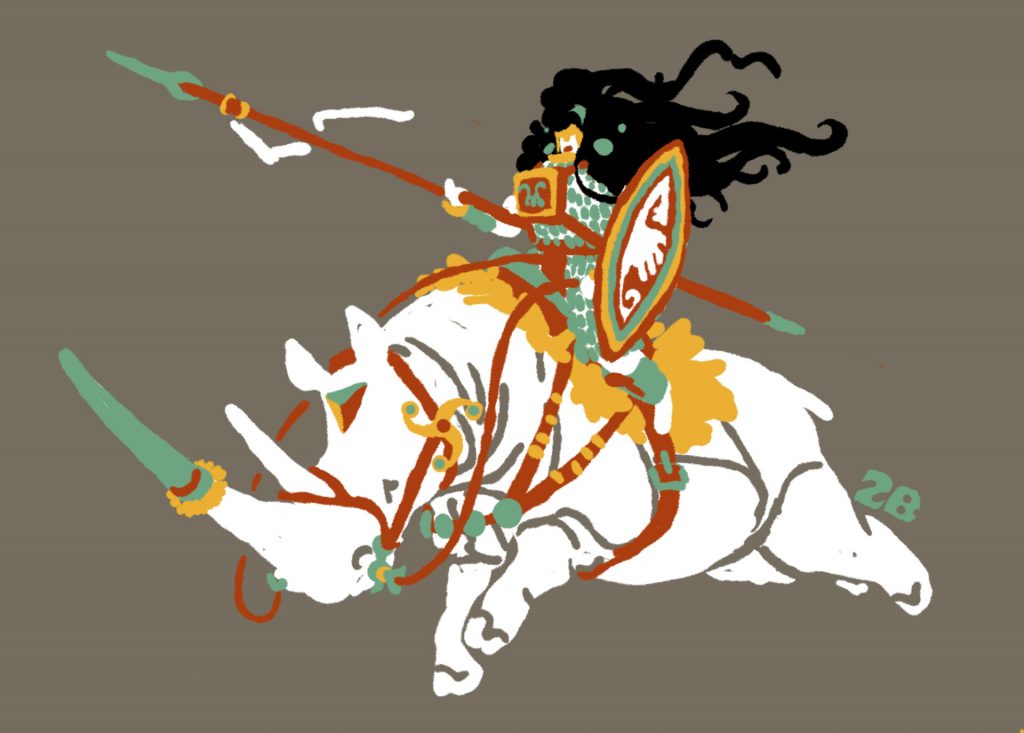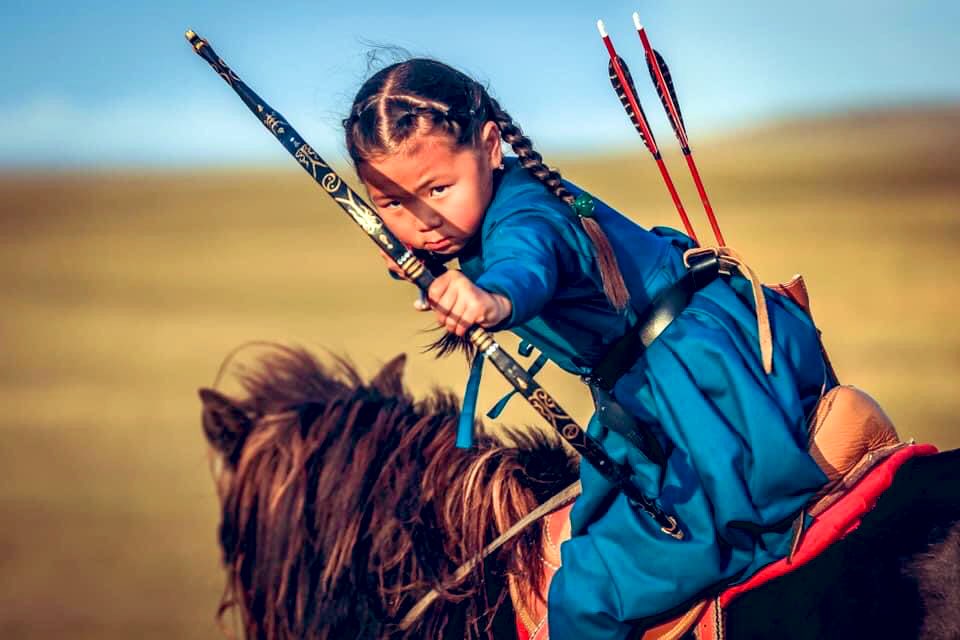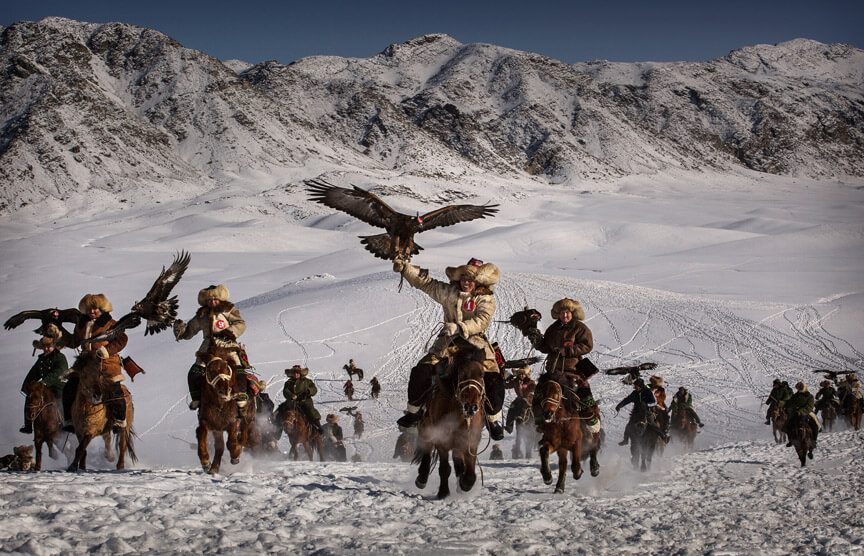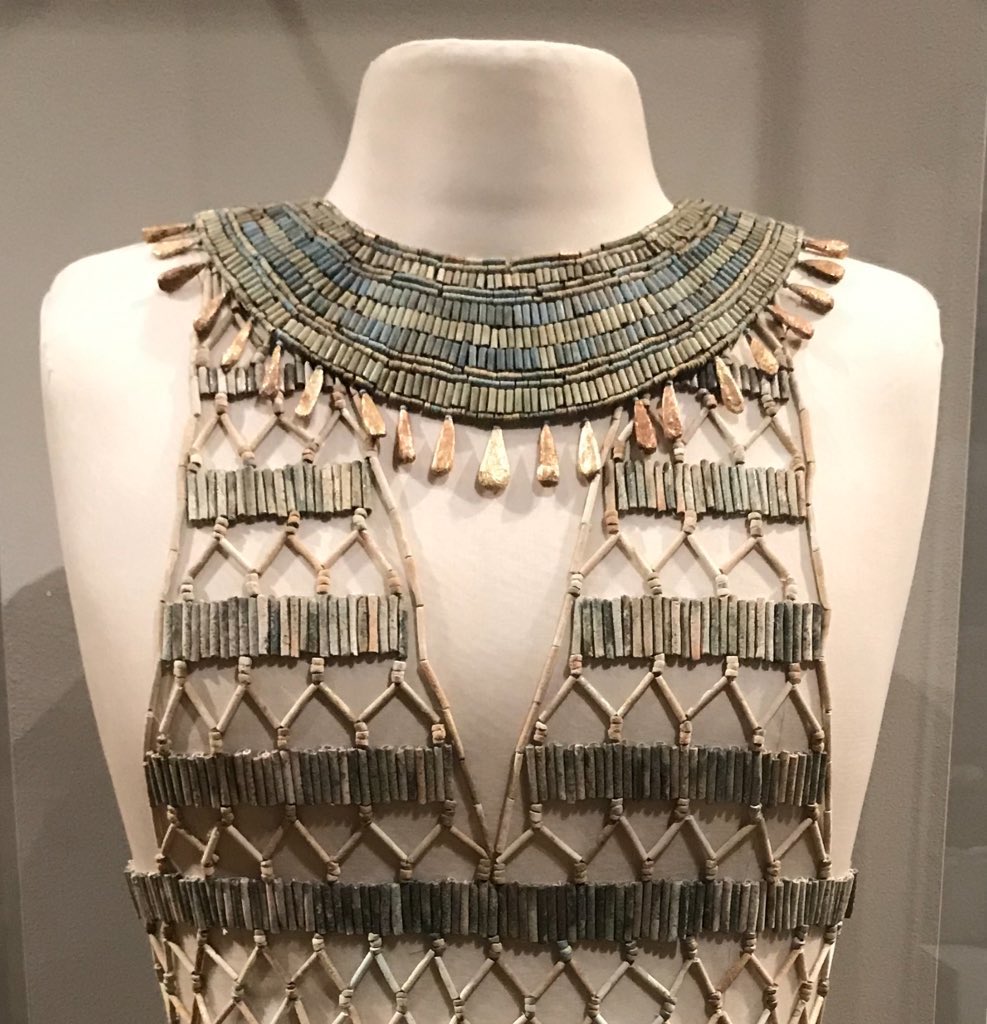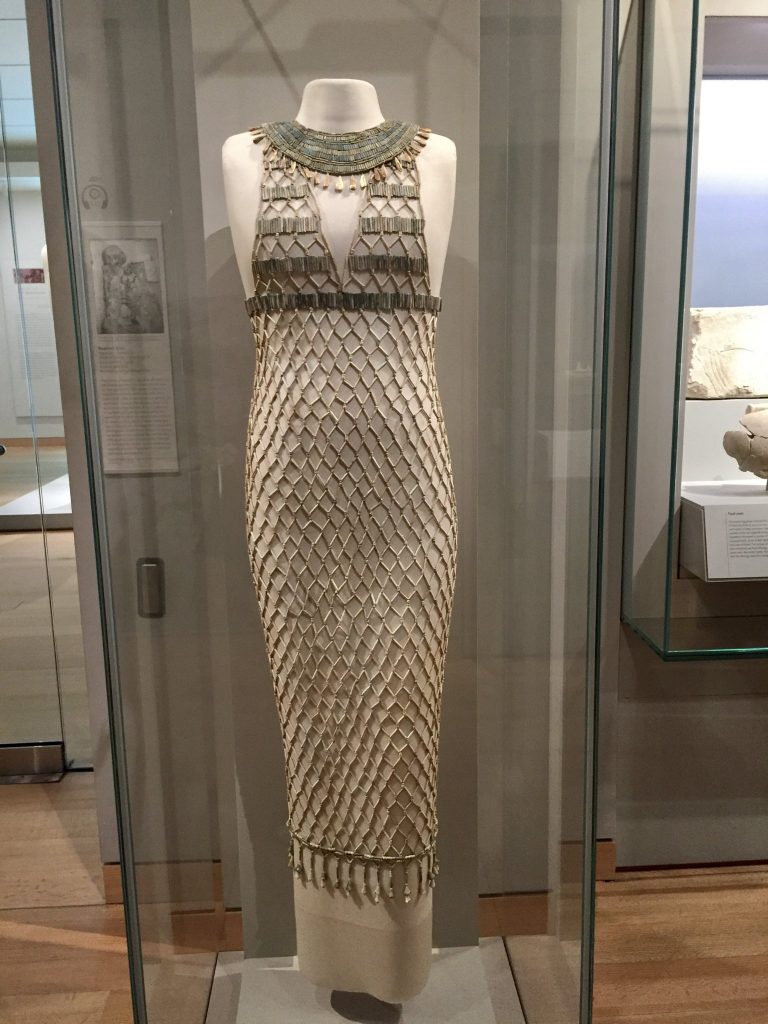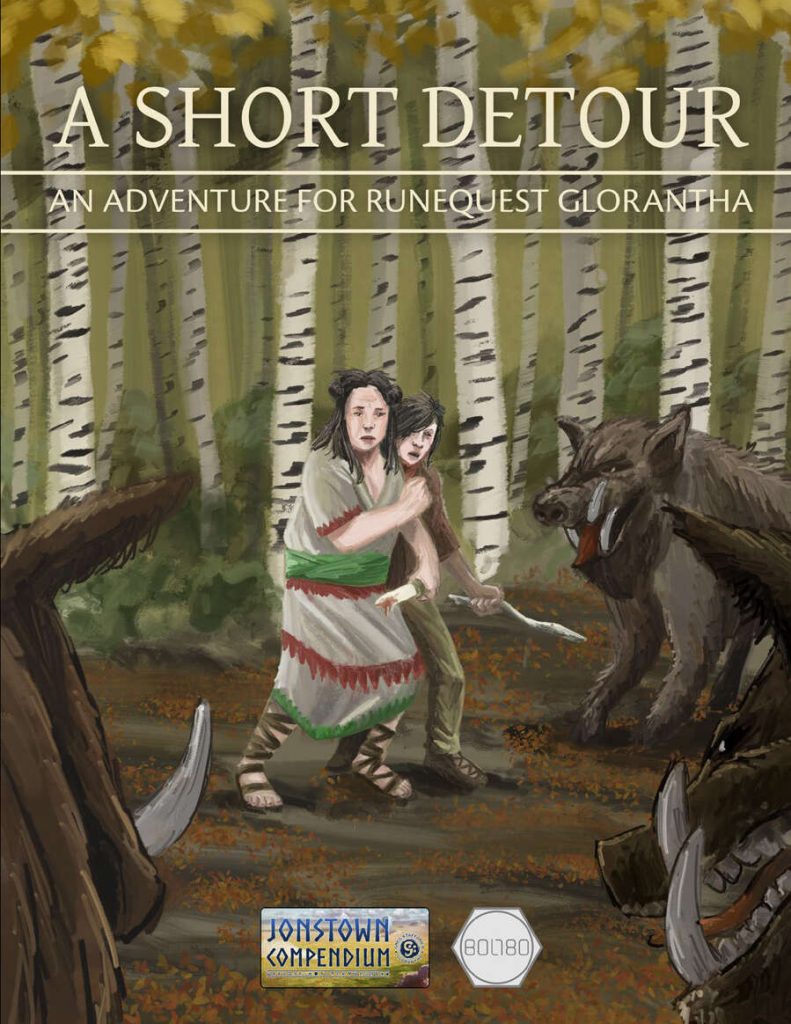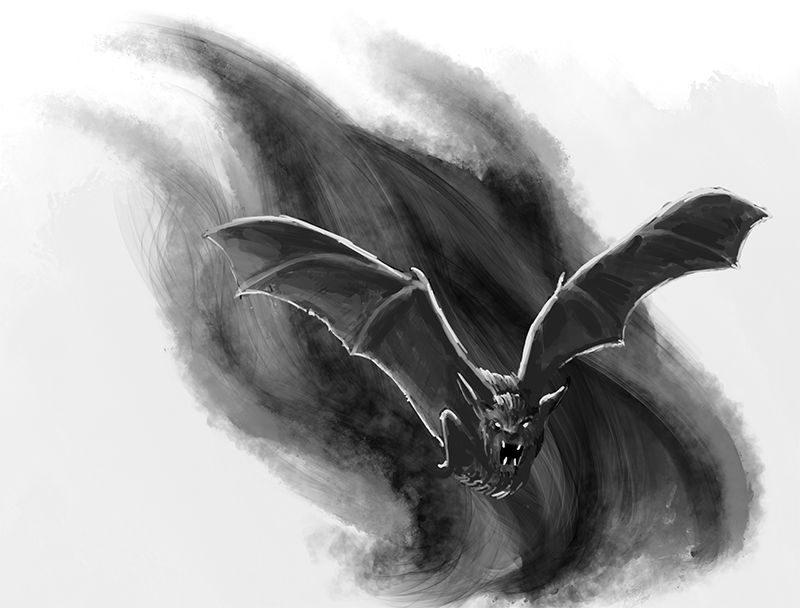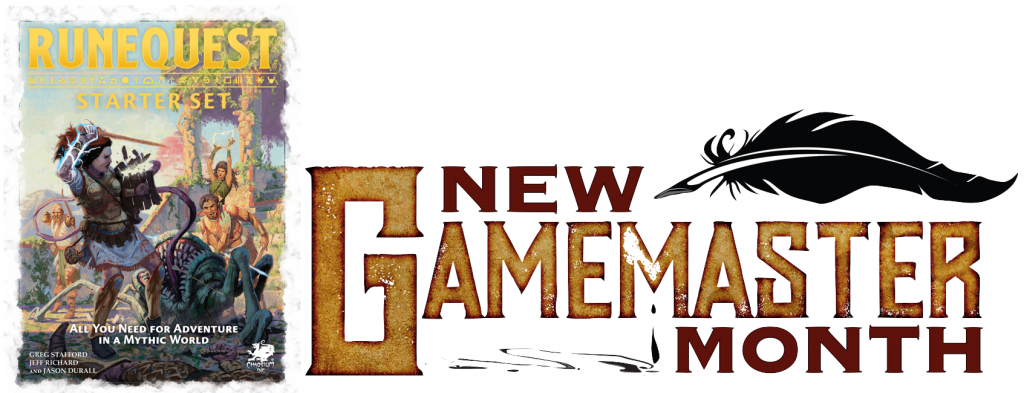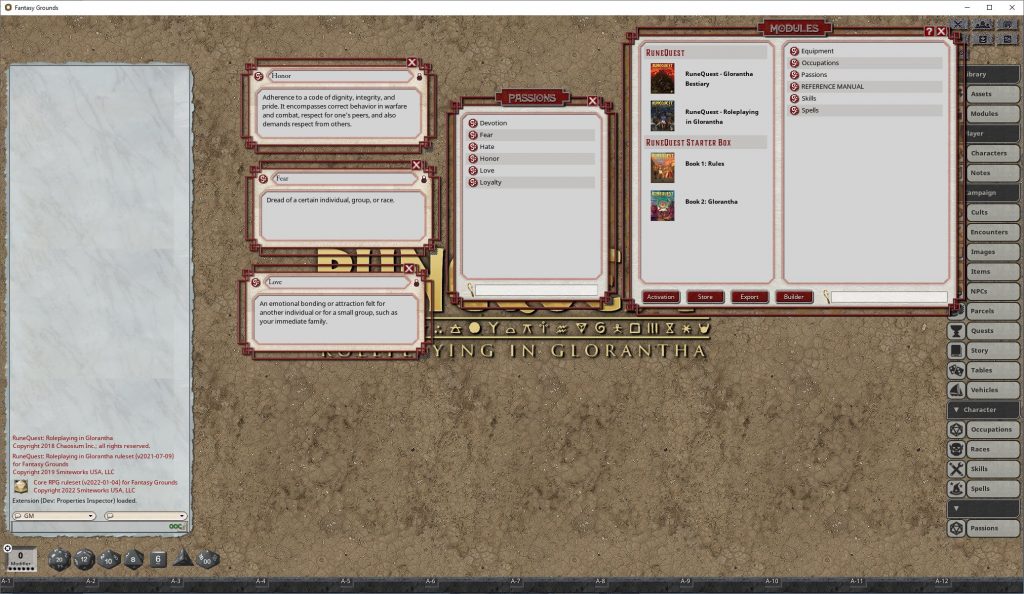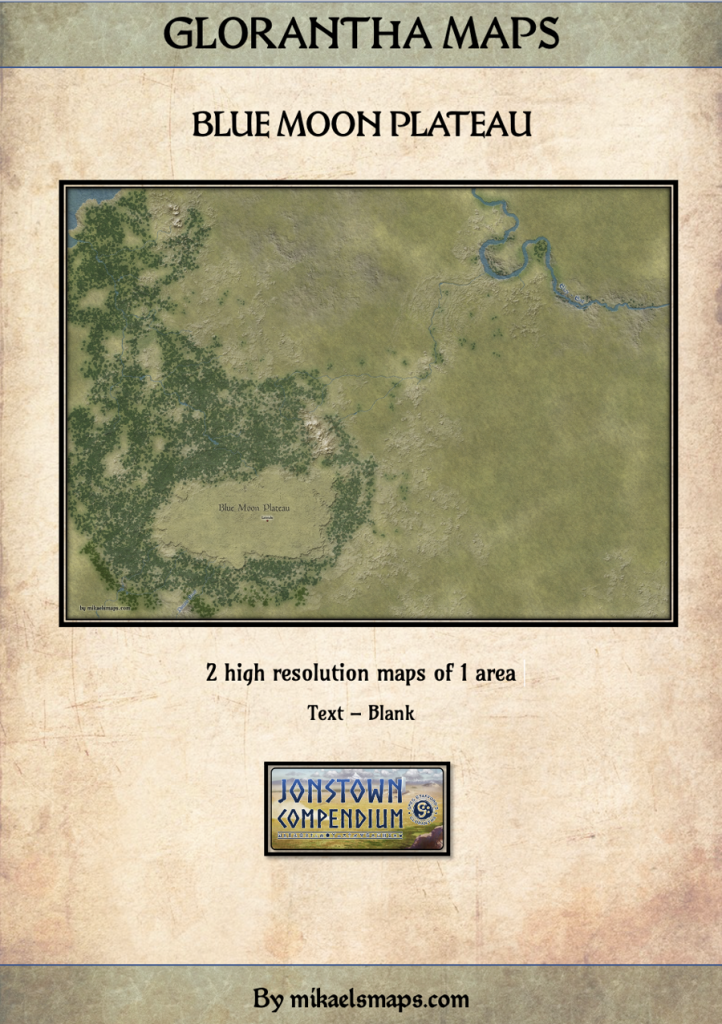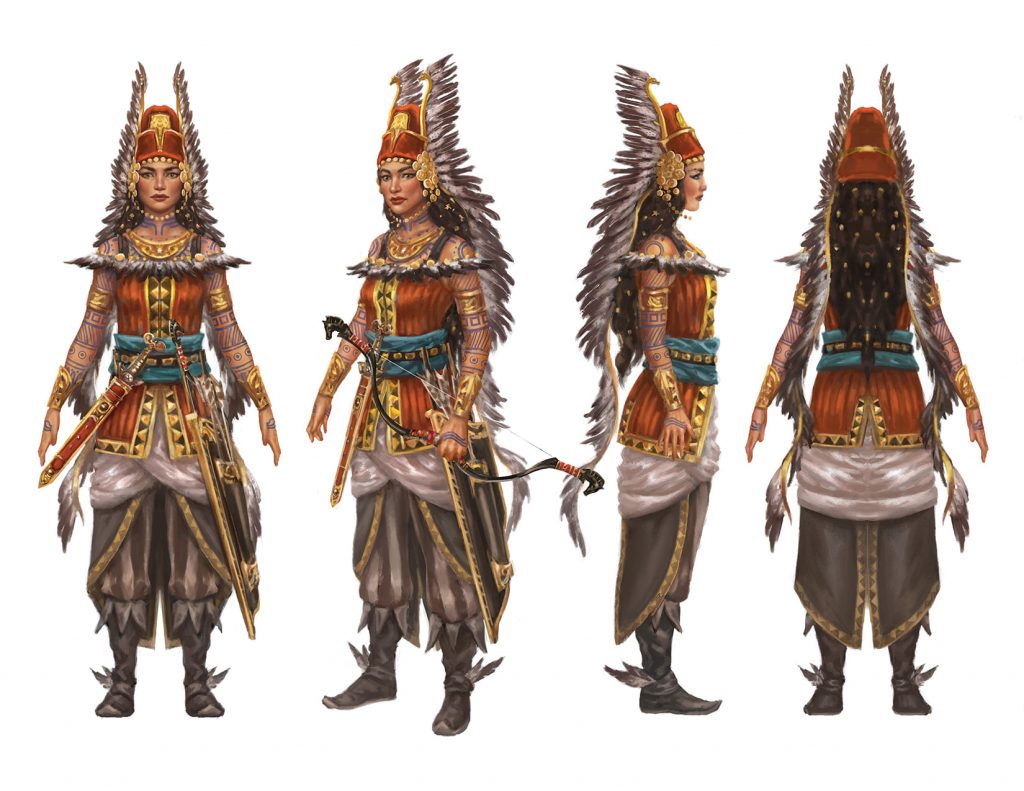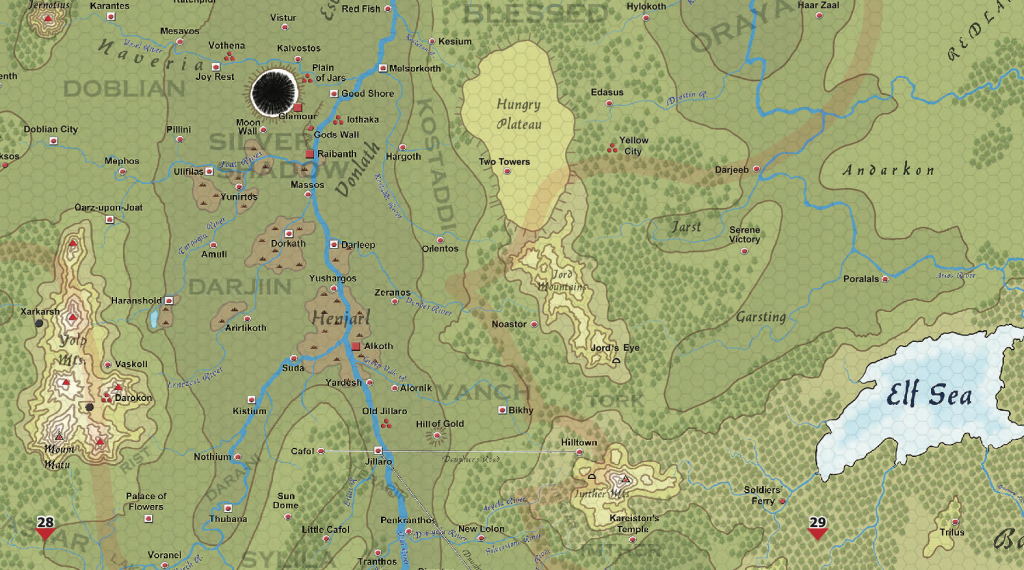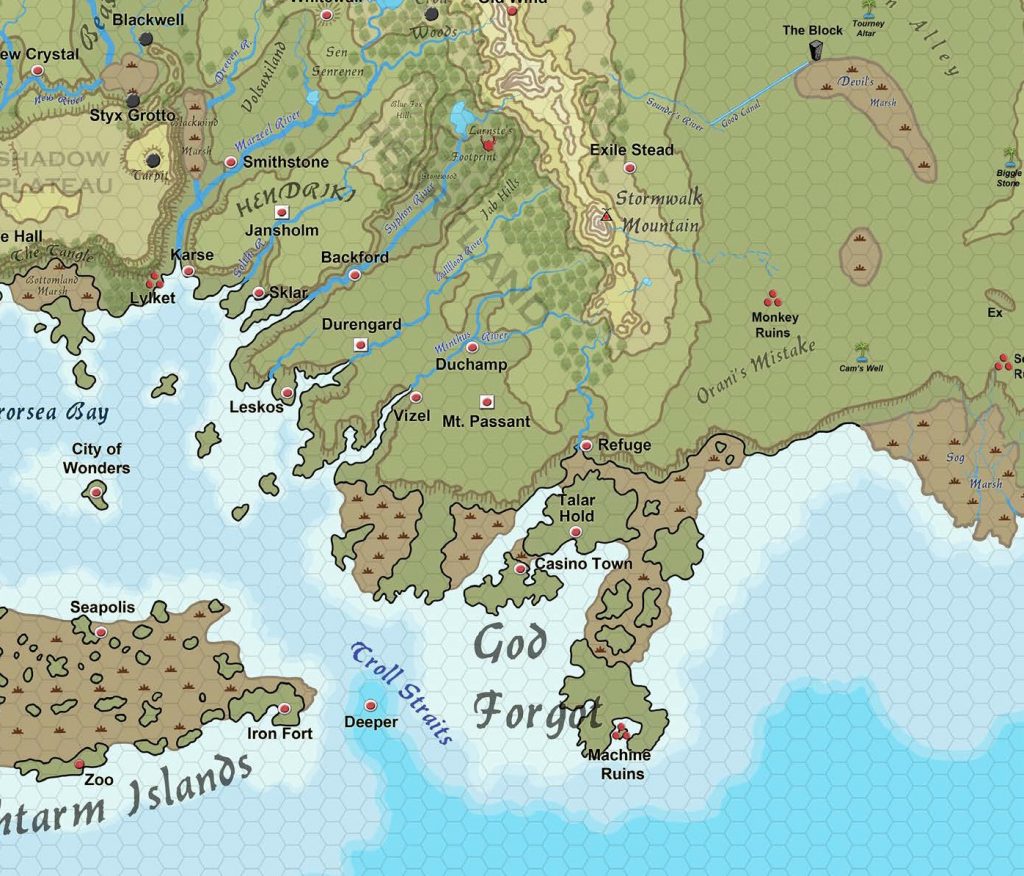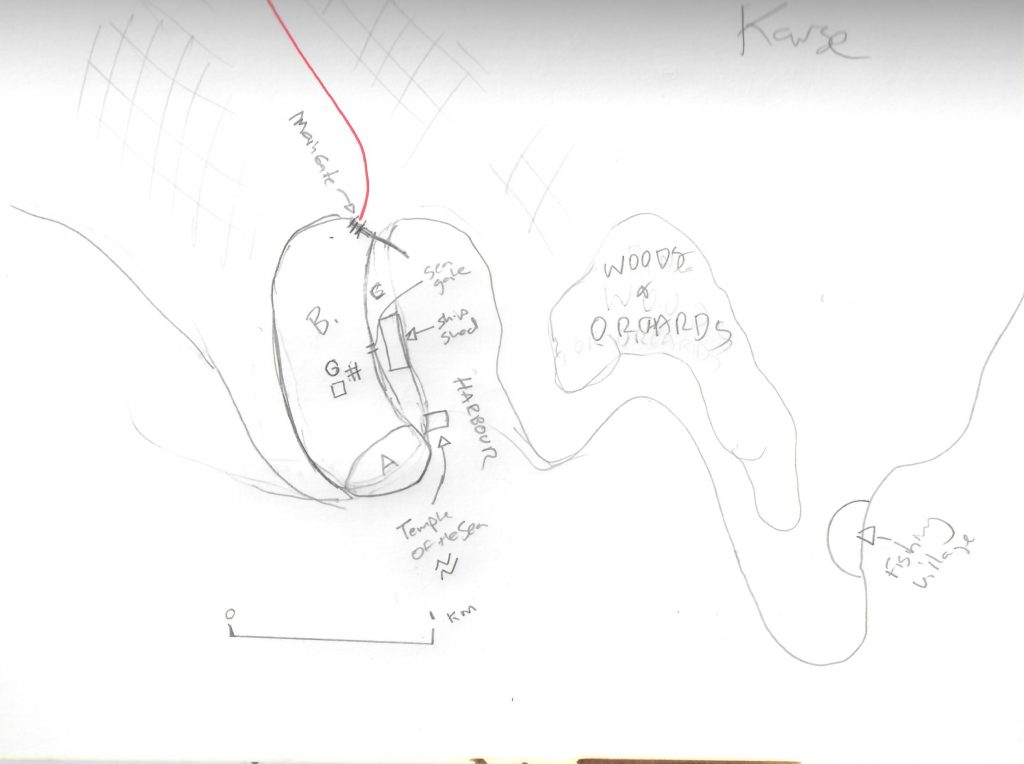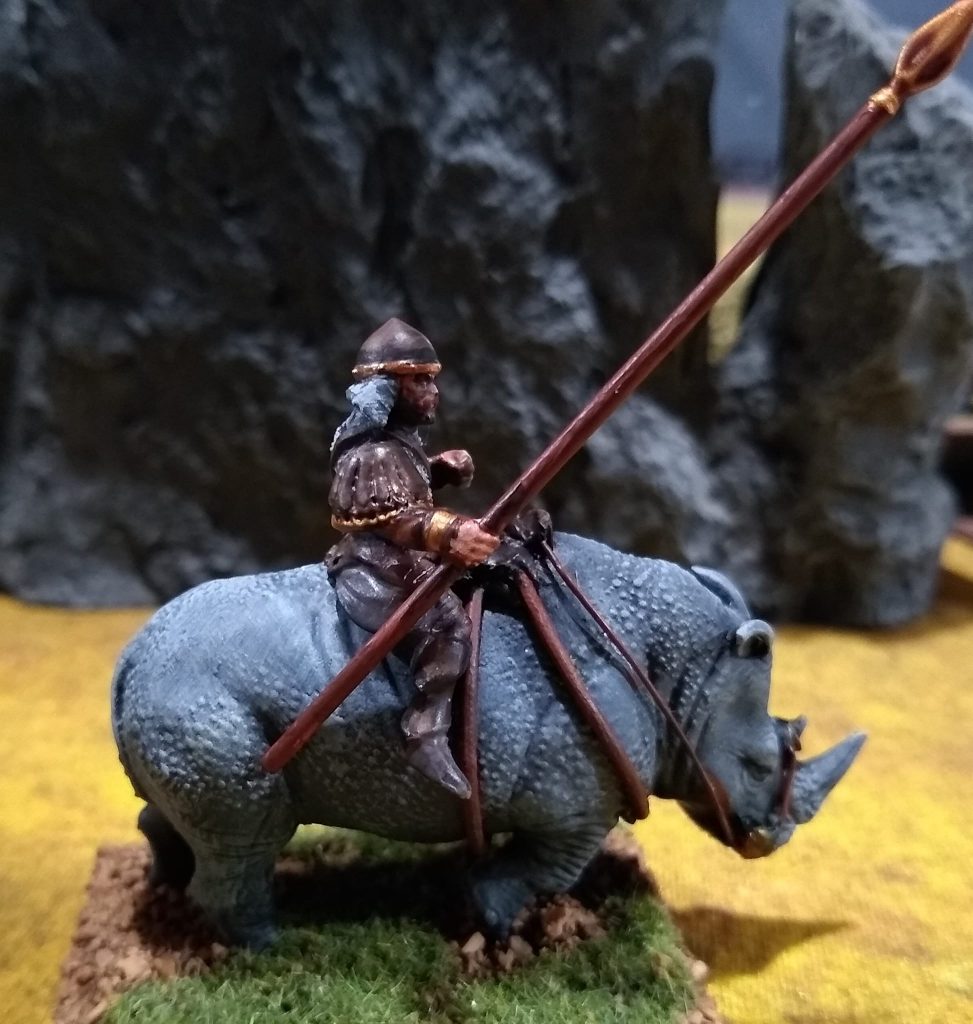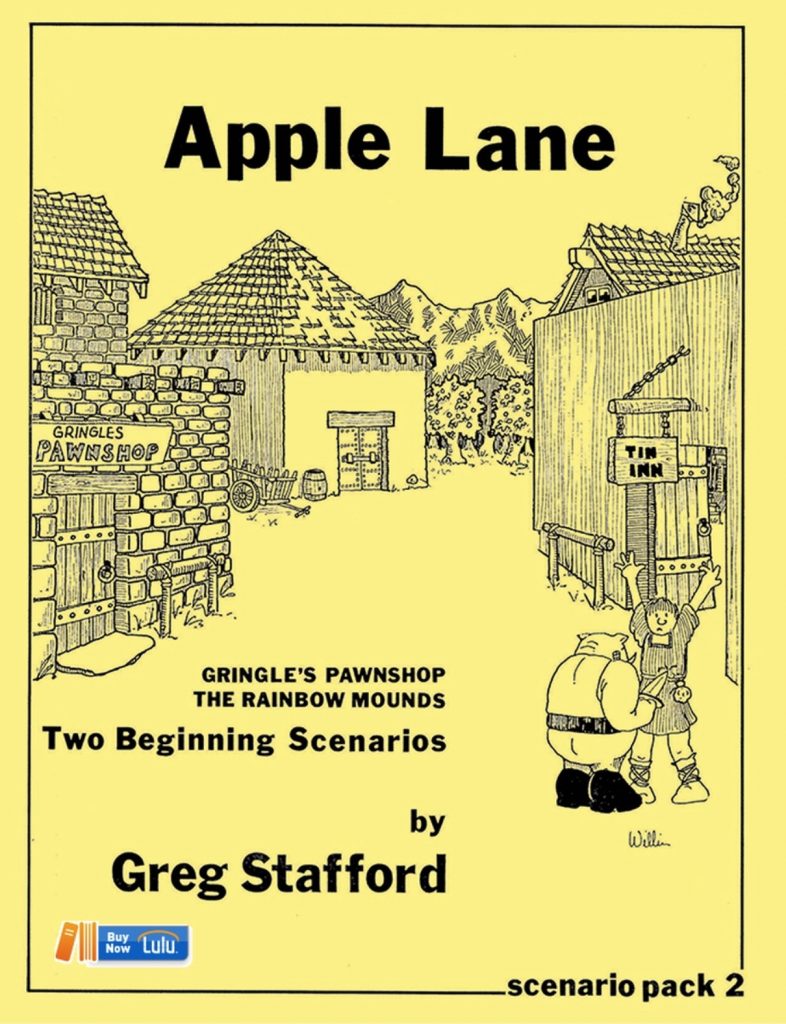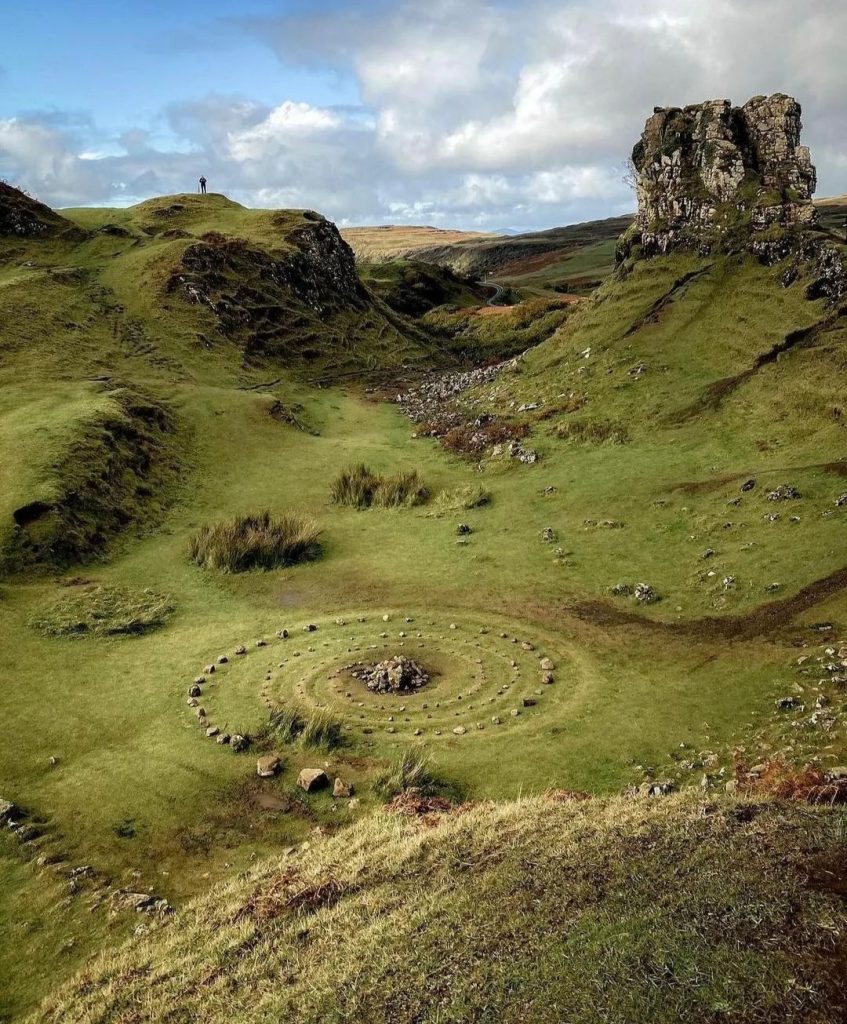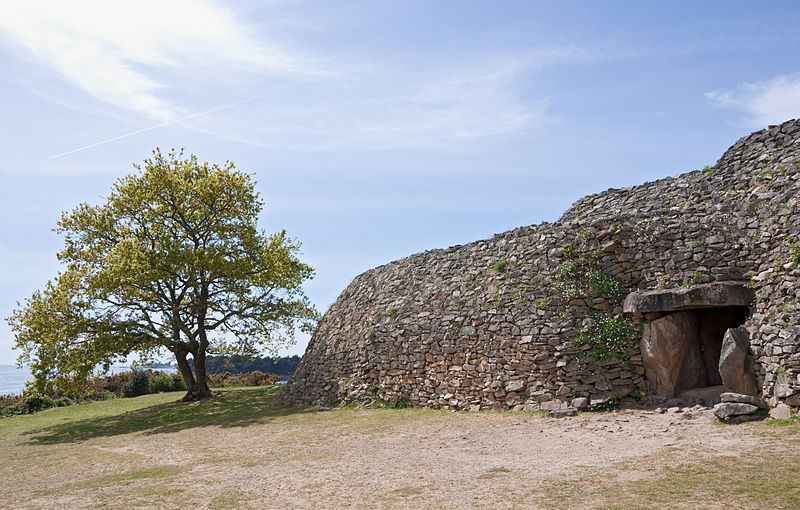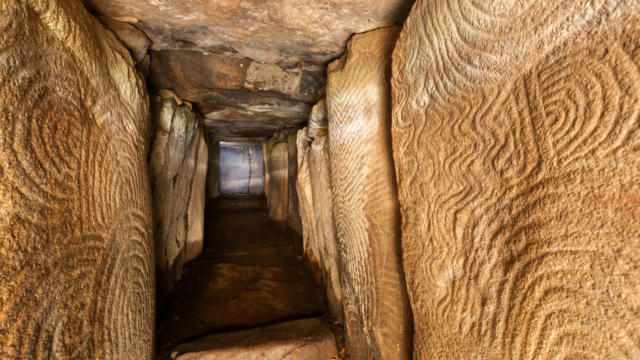Welcome to a new issue of the Journal of Runic Studies, the premier Malkioni publication for studies into the nature of Glorantha. If you haven’t subscribed yet, please consult with the spirit bound to the appropriate electronic page.
We’re aware the next episode of the podcast is late (it should have been released early this week). But first we are not used to this weird Earth calendar with shorter months. Then, I had lots of work, and two ChaosiumCon scenarios to write. Oh and last, the chat with our guest ended up lasting 3 hours, which means as much audio to edit down to a manageable length… so yeah. It should be out next week! Sorry!
God Learner Sorcery
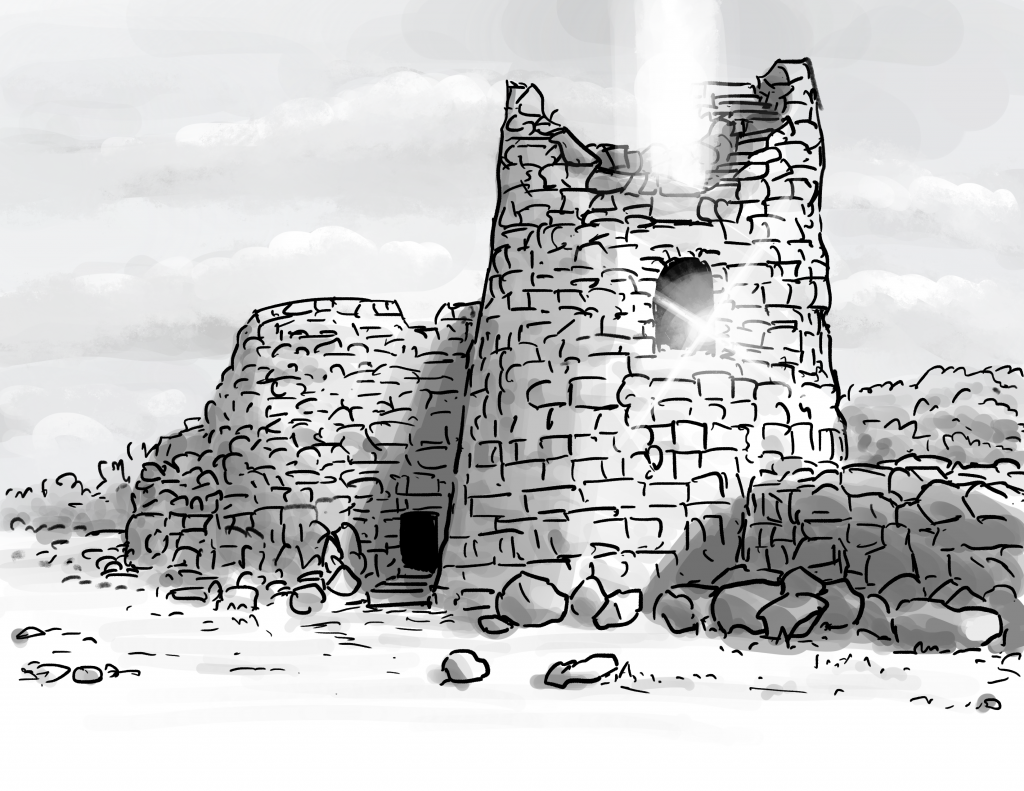
Here is what us God Learners were up to this week.
RuneQuest: Aventures dans Glorantha
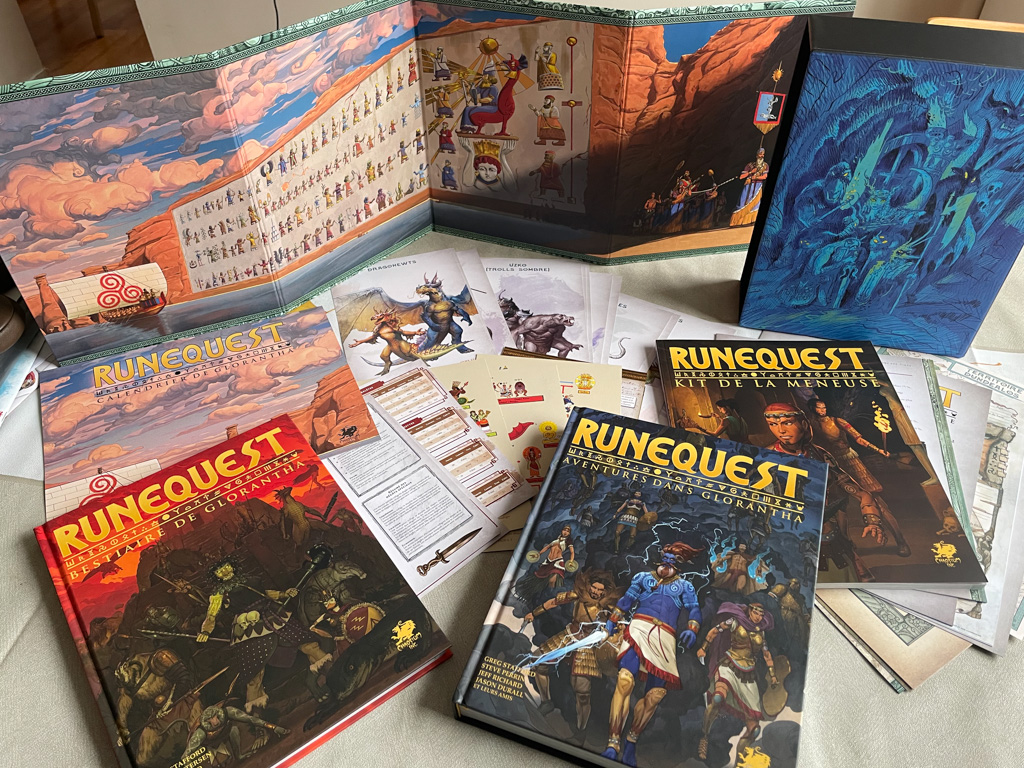
Are you curious about what’s in the recently released French edition of RuneQuest? I wrote a short tour of it!
By the way, if you want more French content, the crowdfunding for the Smoking Ruin and the Pegasus Plateau is starting!
Chaosium News

Here are this week’s Chaosium news!
ChaosiumCon 2022 Sign-ups Open

Chaosium is organizing the sign-ups on Warhorn (like the vast majority of gaming conventions these days), and it’s now open for the general public, after an early-bird period for people signed-up to GM something. Go here to see the schedule.
I’ll be GMing one RuneQuest game and one Call of Cthulhu game. As I write this, there is still room for the the latter one.
RuneQuest Starter Stream Episode 03
James and his great cast of players reach the end of the starter set’s first adventure, “A Rough Landing”.
Loic Muzy on Glorantha Illustration
This is a nice and quite personal interview about Loic Muzy and his very welcome entry into the world of Glorantha. Very nice to see James speaking French too!
About the Culbrea Sourcebook
Diana Probst had shared the scoop with us that the Beer With Teeth crew was working on a Culbrea-focused campaign book for Chaosium, but the details were pretty minimal. Now she has written a bit more about it.
There is also a bit more information from the Facebook discussion that followed the article. For instance, about whether the Culbrea material from The Coming Storm was used or not:
Where possible, we left things open. There were so many possible interpretations of King Ranulf that we could not choose them all, so we tried to sketch in the big things and leave options. We needed a Tribe that had big internal problems, and they matched best, but we then nudged it towards what we felt was representative of the Starter Set and RQG materials. We mostly stuck to the Guide and material already published or due for publication for RQG but we also looked at previous work. It’s hard to say what formed what – we had to choose between differing realities.
A lot of the time, leaving an open set of options meant we were not doing our job of creating a sourcebook, so there were a lot of avenues we had to close off.
So it looks like Glorantha will further differ between the HeroQuest and RuneQuest lines:
The Two Pine clan is one of the names of the Jotoring, with a history to note why the change of name, and that some people still call it Two Pines. Two Pine Ridge is in there. The Coming Storm was not one of our main texts, though.
It was already the case between the HeroQuest material and some of the places in the first two adventure books for RuneQuest. It personally doesn’t bother me as long as each line stays roughly consistent.
I’ll leave you with this funny comment about some of Diana’s favourite things about working on the Culbrea book:
[…] being able to write in all seriousness that a village got crushed because of some drunken dinosaurs, and that’s just a throwaway line that explains some geography, but it’s RuneQuest, so I was able to put it in.
Jonstown Compendium

The Jonstown Compendium is Chaosium’s community content program for all Gloranthan games, hosted on DriveThruRPG. Disclaimer: all the relevant links are affiliate links that hopefully will let us cover some of the hosting and maintenance costs for the website and podcast! Thanks for using them!
GM Day Sale on DriveThruRPG!
DriveThruRPG is running a site-wide sale on many products, with up to -30% discounts. Many Jonstown Compendium items are on sale, so be sure to grab anything from your wishlist this week (because yes it’s called “GM Day Sale” but it actually lasts two weeks… go figure!)
My first title, A Short Detour, isn’t part of the sale (mostly because I just started learning about managing that kind of stuff, like, two days ago, and also because it’s too recent), but it will most likely be part of future sales.
Durulz Character Tokens
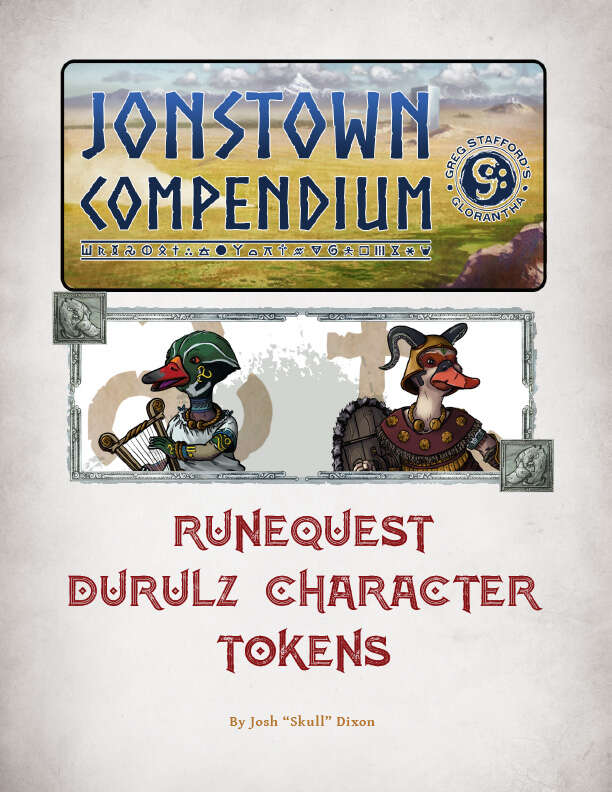
Friend of the show Skulldixon has figured out how to use his wonderful duck pics in your games. The Durulz Character Token pack is now available in the Jonstown Compendium! It contains 26 unique character tokens, with 3 different frames for each.
Hsunchen of the East Update

Paul Baker notes that his book on the animal totem tribes just gained a third tribe: the Pujaleg Bat folk. Just in time for the release of the new Batman movie! The book is also part of the aforementioned DriveThruRPG sale so grab it now!
Jeff’s Notes

Jeff Richard, the current mastermind on everything Gloranthan at Chaosium, is often posting notes and thoughts on the RuneQuest Facebook group. Here’s our curated list from the past week. A partial archive of these sources is compiled on the Well of Daliath.
Sartarite City Wyters, and What Lunars Want
This question on the RuneQuest Facebook group asks whether the Lunar Empire ever replaced existing city wyters with their own in occupied lands. Jeff replied that it would only happen if they wanted to “completely refound the city”:
But that’s not really a Lunar thing in the Provinces, beyond Furthest (which was intended as a major Lunar settlement to hold Dragon Pass).
Given that they would somehow need to overcome Sartar himself (no mean magical trick), those Lunars with the ability to do this had far more pressing concerns than expending resources to do that.
When Sartar founded his cities, he also created their cults and their original leaders – Wilms, Jon, and Swen – became their guardians and spirits upon death. They are sources of continued identity of those cities, tied to the cult of Sartar in Boldhome and in the tribes. It would be no easy trick to replace them or to introduce a Lunar variant without completely obliterating the city and resettling it. Sure Jar-eel or the Red Emperor could do that, but why?
Jeff then goes into what Lunars did in Sartar, and what they were after:
[…] when the Lunars invaded they largely ignored the traditional religions except where they summoned powers antithetical to the Lunar Way. They built a few Seven Mothers temples in the cities like in Boldhome, and later put their resources into the New Lunar Temple in southeastern Sartar.
The Lunar interest in Sartar was primarily:
1. The kingdom controlled the key strategic route between Peloria, Kethaela, and Prax.
2. Because of that, the kingdom was very wealthy and powerful beyond its size.
3. The kingdom was a stronghold of the Orlanth cult which is in active opposition to the Red Goddess. As long as Orlanth fights the Red Goddess, her triumph is slowed.
4. Sartar’s continued independence potentially destabilised the Lunar Provinces, which were Orlanthi kingdoms defeated by the Lunar Empire. Sartar twice proved capable of threatening Furthest (once successfully, when Saronil and Palashee successfully drove the Lunars out of Dragon Pass, and once unsuccessfully when Tarkalor and the Feathered Horse Queen fought against the Red Emperor at the Battle of Grizzly Peak). During the occupation, Sartar was only fitfully of interest to Glamour beyond the construction of a new Temple of the Reaching Moon.As recent world events have made abundantly clear, there were no doubt many different goals among the Lunar elite.
But most important is what the Red Emperor’s goals were. He personally led the conquest of Sartar, and then appointed a Yelmite Lunar nobleman from the powerful Assiday family to govern the conquered territory. After that the Red Emperor tried to conquer the Holy Country, but was defeated at the Building Wall Battle. After that he returned to Glamour and did not return to Dragon Pass for over two decades.
The Building Wall Battle in the Holy Country in 1605 saw the defeat of the Lunar army. The Lunars returned in 1619 through Hendriki, and by 1621 they have not only conquered the Holy Country but they’ve effectively “killed” Orlanth and Ernalda, ushering the Windstop, or Great Winter, during which Orlanth magic doesn’t work in Dragon Pass, and Ernalda magic is super weak. But this doesn’t last very long, and a couple years later things start going downhill for the Lunar all the way to the Dragonrise and beyond.
During that time, there were numerous Lunar agendas. Some just wanted to make their fortune and reputation, others wanted to screw with the Orlanth cult, others wanted to pacify the area (not necessarily the same thing), and still others wanted to settle here.
Around 1618 the Red Emperor started paying attention again and in 1621 personally appointed a new governor who presumably shared his agenda – conquer the Holy Country, crush Whitewall, and build a new Reaching Moon Temple. Why the Red Emperor wanted those things is no doubt a question of speculation in Glamour and Boldhome.
Pelorian Names for Rulers
Jeff had already shared a list of Theyelan terms for rulers (for use in, say, Sartar and the Holy Country). Now he’s shared the Pelorian version (for use in Lunar Heartlands and Provinces):
Emperor
Dara Happan/New Pelorian. Term literally means “universal ruler.” Only one legitimate emperor can exist in the world at a time, although the title is also applied to Yelm. The emperor rules by right not only Peloria but the entire world and is responsible for maintaining both the social order and the cosmic balance. The emperor must be acclaimed at Raibanth. If during periods of civil strife or political division, more than one person claimed the title, it is understood that only a single claimant could be the true emperor – the others are false.
The Emperor is acclaimed at Raibanth possibly because that’s the city where you’ll find the “Footstool of the Sun God”, which is located on top of a big ziggurath with ten thousand steps, allegedly created by the Sun God himself before the Dawn. The top tier of the structure is the temple and residence of the Solar Emperor. The footstool is connected directly to the sun via a big ray of light which… well I’m not sure what happens when the sun sets. Maybe, you know, don’t build your house to the west, just to be sure.
Oh and the Gods Wall, which you can see on the RuneQuest gamemaster’s screen, is about ten miles north of Raibanth.
Overseer
Dara Happan/New Pelorian/Carmanian. Denotes someone entitled to give commands; typically used by a ruler appointed by an emperor or satrap to serve as their representative or agent.
This title is most often seen in practice with the “Provincial Lunar Overseer” which resides in Mirin’s Cross. Until the Dragonrise, it was Appius Luxius who, as far as I can tell, was, well, overseeing all of the Empire’s provincial operations, from taxation to military movements (so Fazzur Wideread was reporting to him). Previous such Provincial Lunar Overseers also included, say, King Phargentes of Tarsh.
Satrap
Dara Happan/New Pelorian/Carmanian. Term literally means “protector of the province.” Denotes a ruler with some inherent authority that is properly subordinate and loyal to the emperor.
As far as I can tell, while the Lunar Provinces are split into, well, provinces, the Lunar Heartlands are split into satrapies. So satrap is mostly seen to denote the ruler of a piece of the Lunar Heartlands. Each of these satraps is the head of some powerful family which, you might remember, are always fighting each other, overtly and covertly. Satrap NPCs is where you can go crazy with weirdos, creeps, heroes, and villains.
Sultan
Pentan/New Pelorian. Term literally means “power” or “authority”. Denotes a ruler who claim almost full sovereignty, but without claiming universal rule. In the early Lunar Empire “sultan” was used synonymously with “satrap”. After the fall of Sheng Seleris, this title has largely disappeared in favor of “satrap” although it is sometimes used to describe the rulers of peaceful barbarian nations and sometimes for powerful satraps or governors.
You might have seen the term “Sultan” for the “Mad Sultan”, which, frankly, is a great name for an NPC. He was driven mad by the sight of the Crimson Bat in the 1200s, and was last seen in Dorastor, I think.
Tyrant
Dara Happan/New Pelorian. Term literally means “illegitimate ruler”. Denotes someone who rules without lawful authority, such as a rebel, barbarian tribe, or usurper.
Yeah… I guess “tyrant” gets tossed around a lot by everyone.
Count
Dara Happan/New Pelorian/Theyalan. Literally means “delegate of the universal ruler.” Denotes an independent ruler whose authority is sanctioned by the “universal ruler,” either the emperor or even from Yelm. Used by the Yelmalio cult for the rulers of the Sun Dome Temples. Also used by the Lunar Empire for Black Horse County.Duke
Western/Carmanian/New Pelorian. Literally means “leader”, but typically denotes a martial commander or someone who exercises martial command in an area.
You probably most encountered the titles “Count” and “Duke” around the Zola Fel valley in Prax, between the Counts of Sun Dome County, and Duke Raus who ruled over the grantlands of Prax in RuneQuest’s Borderlands campaign. But those two titles are also used a many other places across the Lunar Empire, Seshnela, and beyond.
The Lunar Heartlands
Speaking of Lunar Heartlands, here’s some perspective:
The Lunar Heartlands are about 10 times the area of Sartar, with 25 times as many people.
To the south of the Lunar Heartlands are the Lunar Provinces, a series of client kingdoms (most originally Orlanthi) centered on Mirin’s Cross. War is common in the south and many Heartlanders just consider the south to be the Land of War. Warlike and adventurous people are sent there to make a name and reputation for themselves – and also to keep them from being trouble-makers in the Heartlands. It is a dumping ground for misfits, malcontents, and others, where they can serve the imperial interest rather than cause problems.
Oh hey now it makes sense that the aforementioned Provincial Lunar Overseer is based in Mirin’s Cross. But as far as the provinces go, although the Heartlanders might see it as the “Land of War”, I imagine there’s a big difference between the provincial cities and the back country. Furthest is very lunarized and multi-cultural, and even other provincial cities might have hipster neighbourhoods that would surprise the most biased Glarmourite. It might also be the Land of Opportunities for an enterprising young merchant, crafter, artist, or whatever.
To the west are the West Reaches, the rump of what used to be Carmania. They have long been extremely peaceful, protected by the Syndics Ban. However, Lunar priests and magicians warn that the Ban is lifting and none know what will be revealed.
You know what, I’ve been reading and playing in Glorantha for a couple years, but I still have very little idea of what the Syndics Ban is. Does everybody else? Well, just in case, here’s the short version.
In the mid 1400s, a heir of Loskalm named Snodal came across a “map of future Fronela” (which Loskalm is a part of) that showed it… not in great shape. He traced the map back to Zzabur, the Sorcerer Supreme, who apparently wanted to sink Fronela (Zzabur is big on sinking things, he sunk whole chunks of Genertela with the Closing of the Oceans). So… this is where it gets weird. For some reason, Snodal decided to heroquest and slay the Fronelan god of communication. What was he thinking? I don’t know… but obviously that was a very bad idea. When he came back, all of Fronela was split in small bits, all cut off from each other by some weird magical fog that prevented any travel or magic to go through.
In the past three decades, most of the Syndic’s Ban has been lifted, but there are still pieces of Fronela stuck in it, and nobody knows what happened in them for the past couple hundred years. Notably, the entire region between the Nidan Mountains and the Sweet Sea is still under the ban, which means that travel between Lunar Heartlands and the west is difficult, requiring long detours.
To the north are Lunar allies – Thrice Blessed (aka Eol), the Char’un Pure Horse People tribe, and the Blue Moon trolls. They are also peaceable.
The real concern is the east – Redlands and Pent. This nomads of Pent have recovered from the Nights of Horror and now raid the eastern satrapies. They reject the Lunar Way, and now many embrace Orlanth and Storm Bull to fight against the Lunar Empire. Many tribes are unified together in a big confederacy called the Voor-ash.
So whenever you think about Lunar activity in Sartar, keep in mind that it usually just part of the Land of War – the southern reaches.
Jeff adds:
Although the Seven Mothers is a missionary and proselytising cult, Sartar, Prax, and the Holy Country are a long way away from the main cult centers. And the Lunar Heartlands and other major centers of Lunar civilization still have a lot of work to do to get them to all embrace the teachings of the Red Goddess. It is much easier to be a Seven Mothers missionary in Doblian or Sylila than in Tarsh, and far easier to be a missionary in Tarsh than in Sartar or Prax!
The toughest place to be a missionary is probably where the players are, though…
Lunar Religion and Chaos
Here’s some note about the role of Chaos in Lunar cults (which came from Jeff’s answer in this BRP thread):
One of the clear distinctions made in the Compromise is that Chaos is not of this world. The deities and powers of the world had touched it, and were still afraid of it, and their continued existence required that they remain apart from Chaos. Chaos became the enemy which must be fought and suppressed. With one enemy recognized by everyone, the squabbling deities found a common theme for unity.
That statement is attributed to the God Learners, but could be said by any Dawn Age Orlanthi, trolls, aldryami, mostali, Malkioni, Praxians, and Yelmites. In the late First Age, the Sun stopped in the sky and Nysalor was born. Nysalor taught that Chaos is, in itself, neither evil nor inimical. His followers used this knowledge – called Illumination – to use Chaos to further their goals. As we all know, a terrible war followed, Nysalor was torn into pieces and his cult scattered.
Centuries later, the Red Goddess met and overcame Arachne Solara and Nysalor on her great Goddess Quest. She returned from the Underworld with a Chaos god called the Crimson Bat and used Chaos to destroy her foes. She now teaches Nysalor’s path to Illumination and by its faith, the Lunar Empire must accept Chaos in philosophy. The Crimson Bat is an example of how this can be done, as may be the vampire regiment rumored to be training in the mountains of Peloria. Yet many Lunar heroes gained fame by killing Vivamort cultists or smashing the slave heads of Thanatar. The awareness of the educated or sensitive concerning the proximity of Chaos makes them acutely aware of their dire responsibilities. The teachings of the Red Goddess, though passionate and fierce, strongly admonishes against certain temptations.
Chaos is a tricky thing — it’s hard to control, and it’s hard to use “for good” without Illumination powers. If you’re interested in this, and at the risk of shameful marketing, you might find the Appendix of my adventure “A Short Detour” quite useful.
The Lunar Way in no way condones the worship of Chaos entities which follow the ways of Gbaji and fall into moral depravity. The religion and state do not forbid it, either, as required by their philosophy. The rulers are adroit at manipulating the results if people do fall into the way of the Chaos gods. Lunar history contains lessons of generals and priests gone bad and point them out as bad examples.
That’s one of the things I like about the Lunar Empire: they’re ultimate pragmatists, of sorts: it doesn’t matter who you are and what you do as long as you help with the Red Emperor’s goals, and it doesn’t mess things up too badly for your fellow Lunars. The Red Goddess thinks outside the box, and encourages you to.
The world hates the Empire because it includes Chaos within its worship. This is a clear and necessary stand for the old gods to have, for their very existence is based upon the fighting of Chaos.
But the Red Goddess, born inside Time, has other options, and wisely uses them to maintain her power among the gods of the cosmos. Her secrets are woven into Balance and Time, resulting in the Lunar cycles laid upon the surface of the world.
The Lunar religion is one of unendurable freedom compared to most of the religions and societies of its time. Inner secrets reveal the immense dangers of such freedom, and Lunar disasters of over-experimentation sometimes are noted. But to attain such cosmic freedom it is necessary to include a worshipful understanding of the Chaotic bondage of mindlessness and the Void. Such concepts, though, are alien to most trained minds of the world, and proven ways of life and religion do not bend easily in the face of novelty. The Lunars, of course, consider this rigidity to be ignorance and imbalance.
Edit: Jeff added a few comments while I was sleeping
This account of the Great Compromise seems to imply that Chaos itself is actually part of the deal!
The Spider Woman constructed a great and magical web made of many things no longer found in the world, and then she gave the web to all the gods to hold ready between them, to use as a net. When Chaos entered their realm, the gods cast the net upon the Devil and held him tight. While the other deities had distracted the Devil, Arachne Solara leapt upon him with vengeance and a strength of desperation and mystical splendor. She enwrapped the Chaos god in her many legs and struggled mightily, and at last devoured the evil soul.
The great beings of the universe then held council and tried to discover what their further course of action might be. The Seven Lightbringers proved that they could lead the way out of the Underworld, but they were not sure what world was left outside. Their Old Way was gone forever, replaced by empty void and Chaos. But they could no longer exist within the confines of the universe.
Arachne Solara proved capable of communicating with the Beingless Voice of Eternity. Through her, and with the Voice, the gods made unchangeable pacts and carved themselves into powerful spells. Arachne Solara led a great dance, reconstructing the shattered cosmic matrix, linking all the surviving gods within an immutable web of pacts and oaths, bonds and relationships, conjurations and creations. The gods swore themselves into a Great Compromise with Chaos, wherein the Old World and the New World (of Death and Chaos) would co-exist, alternating their forces and powers along the myriads of weaves within the matrix of the universe. She revealed her child, born after she devoured the Devil. The child is Time, the Pledge of the Gods, and all existence swore by it to uphold their agreements. This is the Great Compromise, and it is the oath which recreated the world.
I understand this last part as including Chaos in the weaves of the universe, on purpose. Jeff adds:
This is the core conflict about the Lunar Empire – its relationship with Chaos and whether that is progress or destructive lie. We can spin that around and around and around again, and the best answer we get is “Both”.
About the Red Goddess “overcoming” Arachne Solara, it’s not necessarily what you might think:
She contacted Arachne Solara, was not destroyed, and gained a secret boon or knowledge from her. That is what the Lunars mean when they say the Red Goddess overcame her.
She Who Waits is not Arachne Solara, nor is the Red Goddess.
The Red Goddess meeting Arachne Solara in the underworld is one of the oldest and best known parts of the Seven Steps of the Red Goddess. Although no doubt there have been Lunars who have wanted to conflate the Red Goddess and the Spider Mother, the Red Goddess herself rejected that identification (as she also rejected the identification with Entakos).
The “Seven Steps of the Red Goddess” can be seen in the Well of Daliath, and in the Prince of Sartar webcomic.
Community Roundup
The community roundup is our highlight of interesting things being mentioned in the Glorantha-related Facebook groups, sub-Reddits, and other similar online places.
Coeur de Runes
Coming from the French side of things, Uzz has formally released “Coeur de Runes“, a rules-light RPG for Gloranthan gaming. The PDFs are free under Chaosium’s fan license, and you can download them on Uzz’s official page for the game.
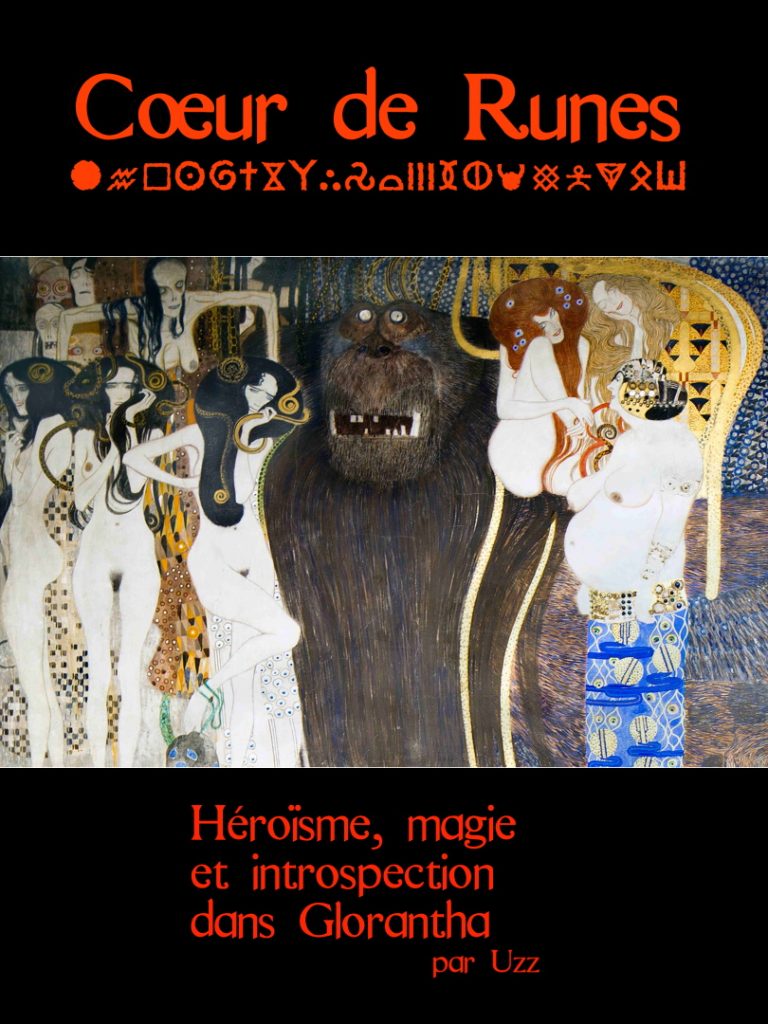
Over more than 200 pages, Coeur de Runes offers a complete system for playing in Glorantha: not just the usual stuff like character creation, rules, cults, and magic, but also player and gamemaster guides, pre-generated characters, an overview of Glorantha with places, factions, and creatures, a sample scenario, and more.
At a high level, Coeur de Runes is a lighter version of HeroQuest/QuestWorlds. Your character sheet doesn’t even have ability scores anymore: you either have it or you don’t. The task resolution system is based on a 3d6 roll, with various degrees of success or failure. You “spend” your abilities to affect this roll with a flat bonus, a die set to 6, or a reroll, depending on what kind of ability you spent.
There’s nothing better than a look at the character sheet to get an idea of what an RPG is about so here’s Jarollar, one of the pre-generated characters:
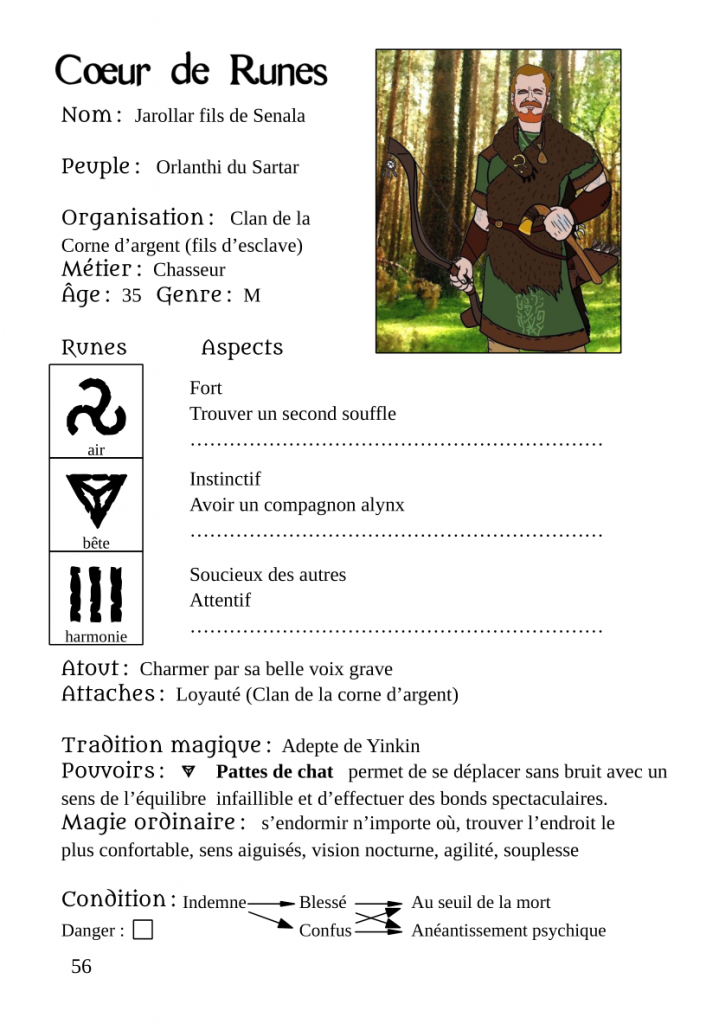
If you want more information about Coeur de Runes, Uzz is a regular on the French Glorantha Discord server, French Glorantha Facebook group, and can be contacted directly here.
Snakepipe Hollow Cliff
D R is still working on modelling the Caves of Chaos in 3D, but here’s a nice treat:
I’ve just finished the infamous cliff and thought that people might want to see a screen shot of it.
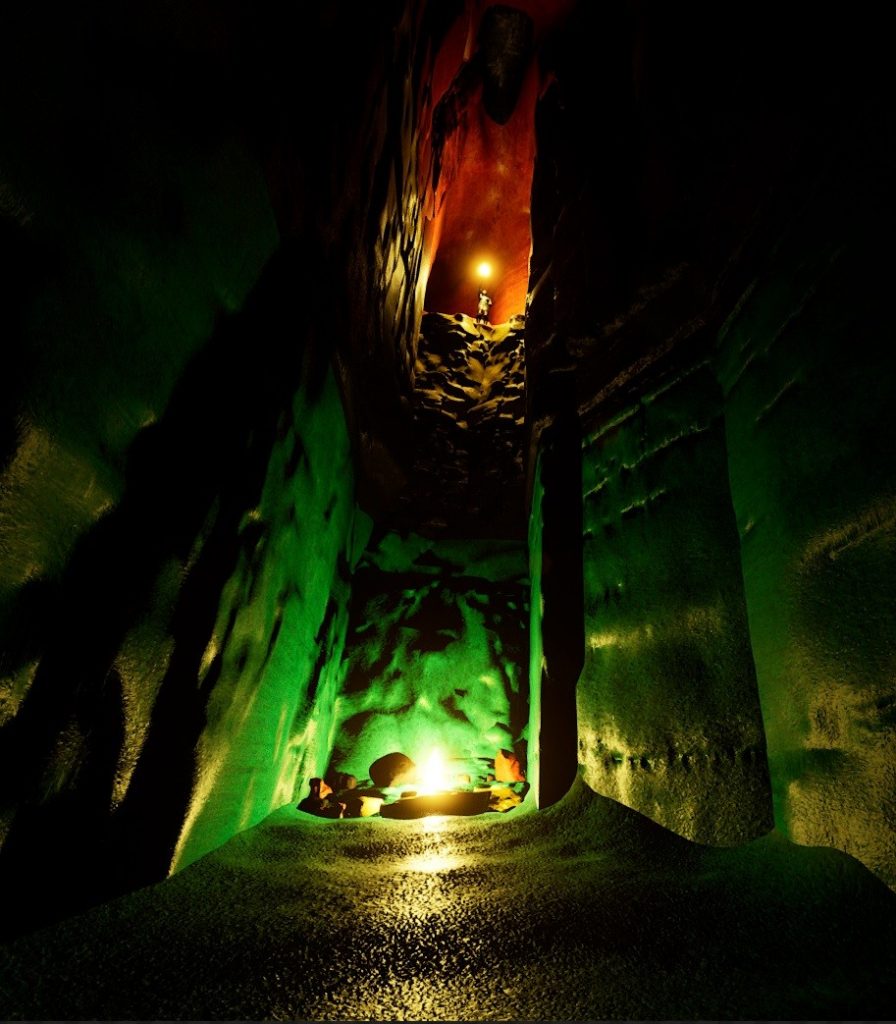
Elsewhere on Arachne Solara’s Web
Not everything is about Glorantha, although most things are! Here are loosely relevant things that we found on the interwebs.
Citadel of Mycenae
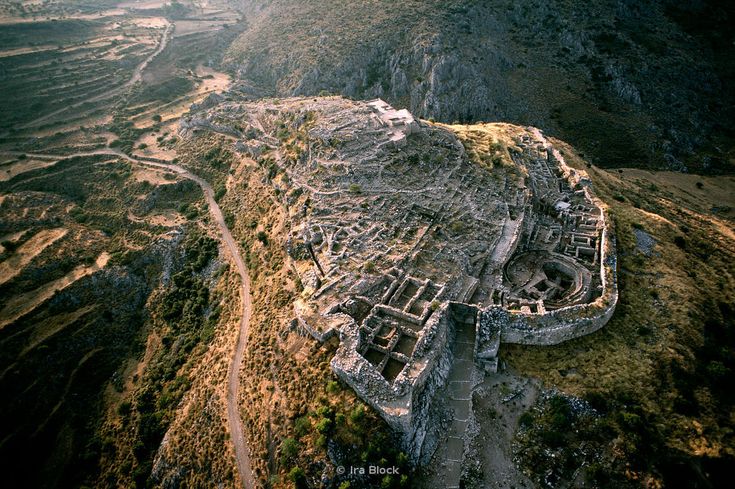
Here’s a possibly good inspiration for a major Sartarite, Hendriki, or Esrolian hill fort or city: the citadel of Mycenae. It’s located in Greece, obviously, about 120km south-west of Athens. During its heyday in the 12th century BC, it was about 32 hectares large, with a population of 30,000.
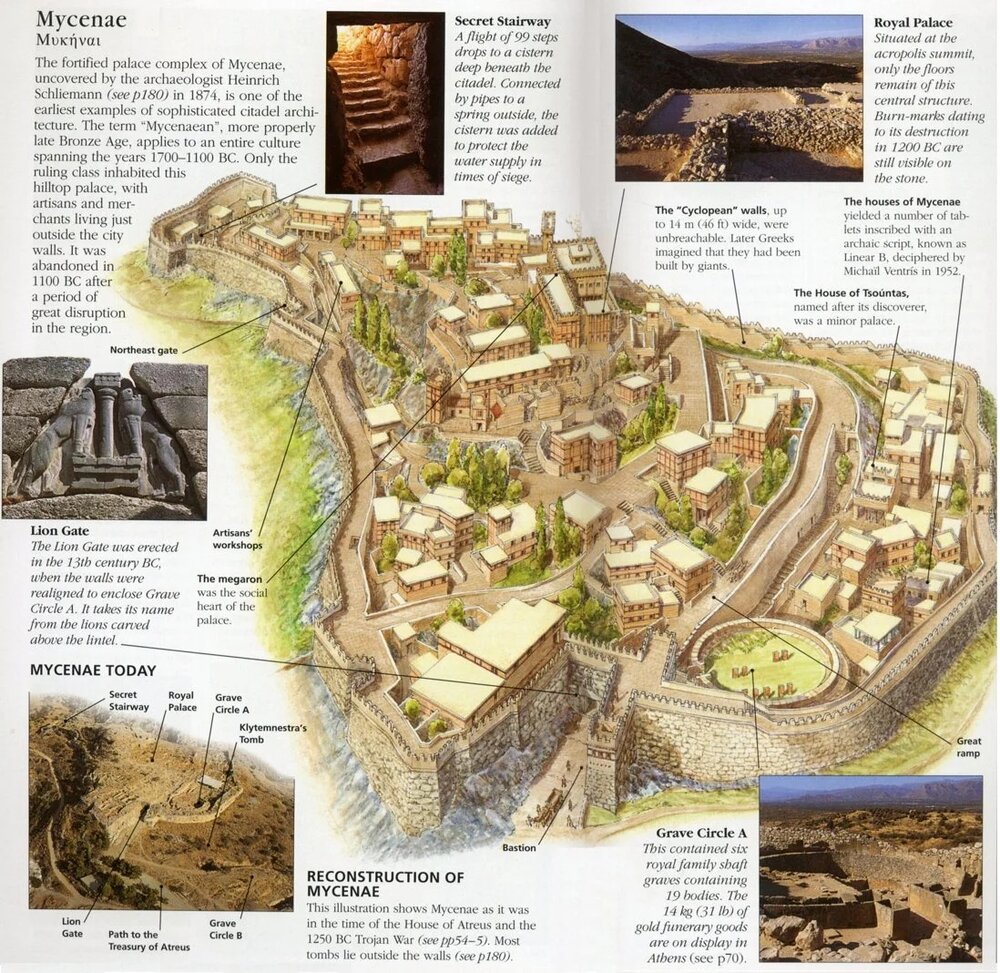
It’s possible that Clearwine was already inspired by this kind of settlement, actually: the “cyclopean walls” as fortifications, the Royal Palace at the top, the graveyard area, and so on. Note the “secret stairway” to a cistern that provided Mycenae with water in times of siege.

You don’t want another incident like Kirra (which, interestingly enough, may be the reason for the existence of the Hippocratic Oath).
There’s a cool looking “Lion Gate” to enter the place, because of course all your forts and cities need a “Someting Gate” with some appropriately thematic sculptures around it:
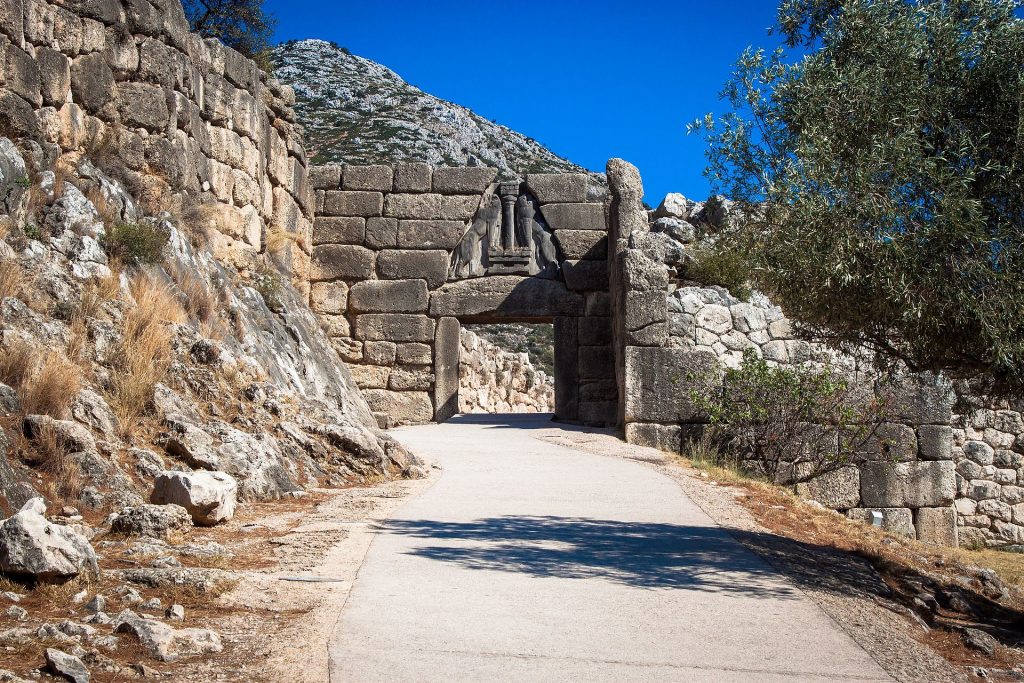
Thank you for reading
That’s it for this week! Please contact us with any feedback, question, or news item we’ve missed!



